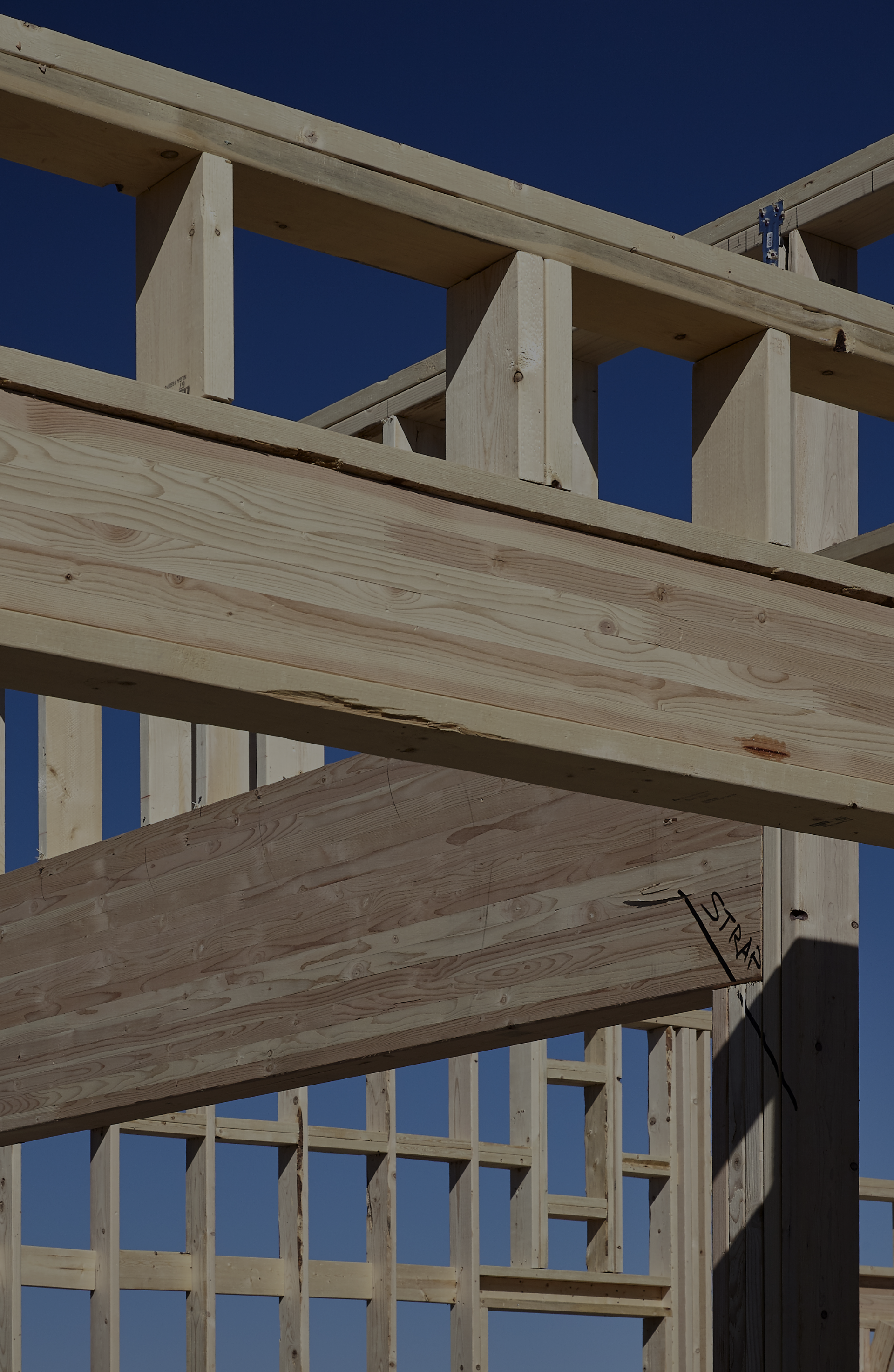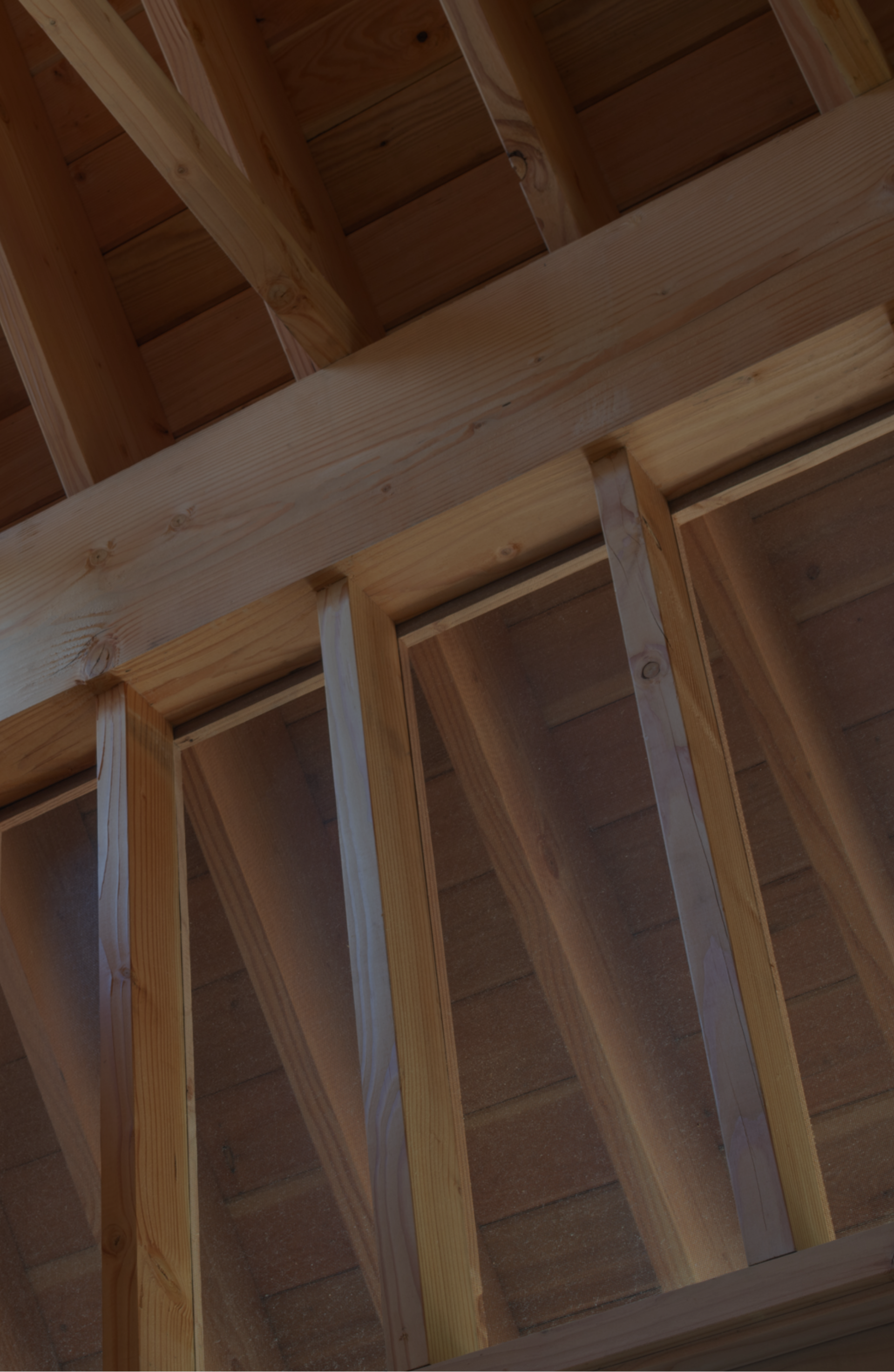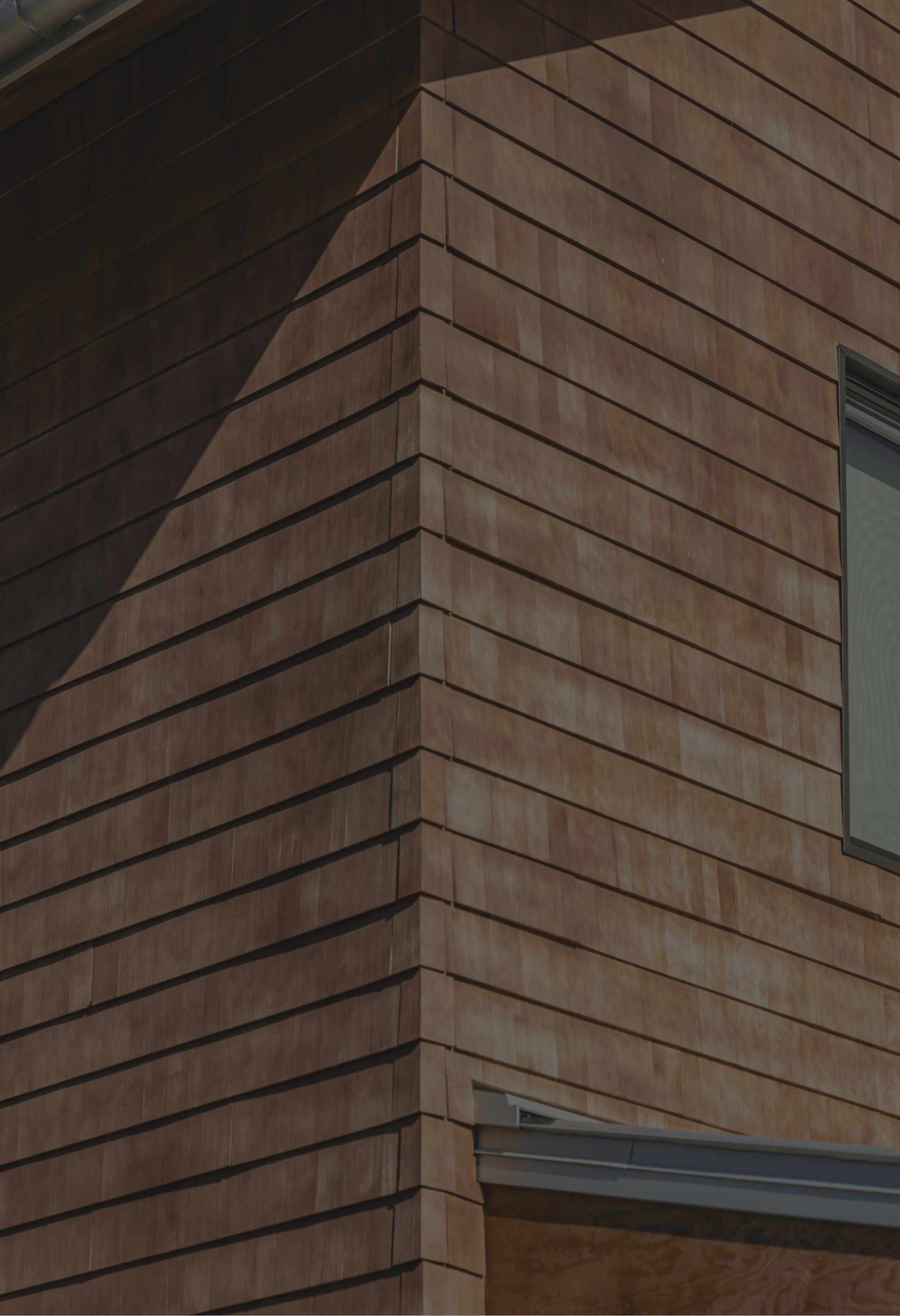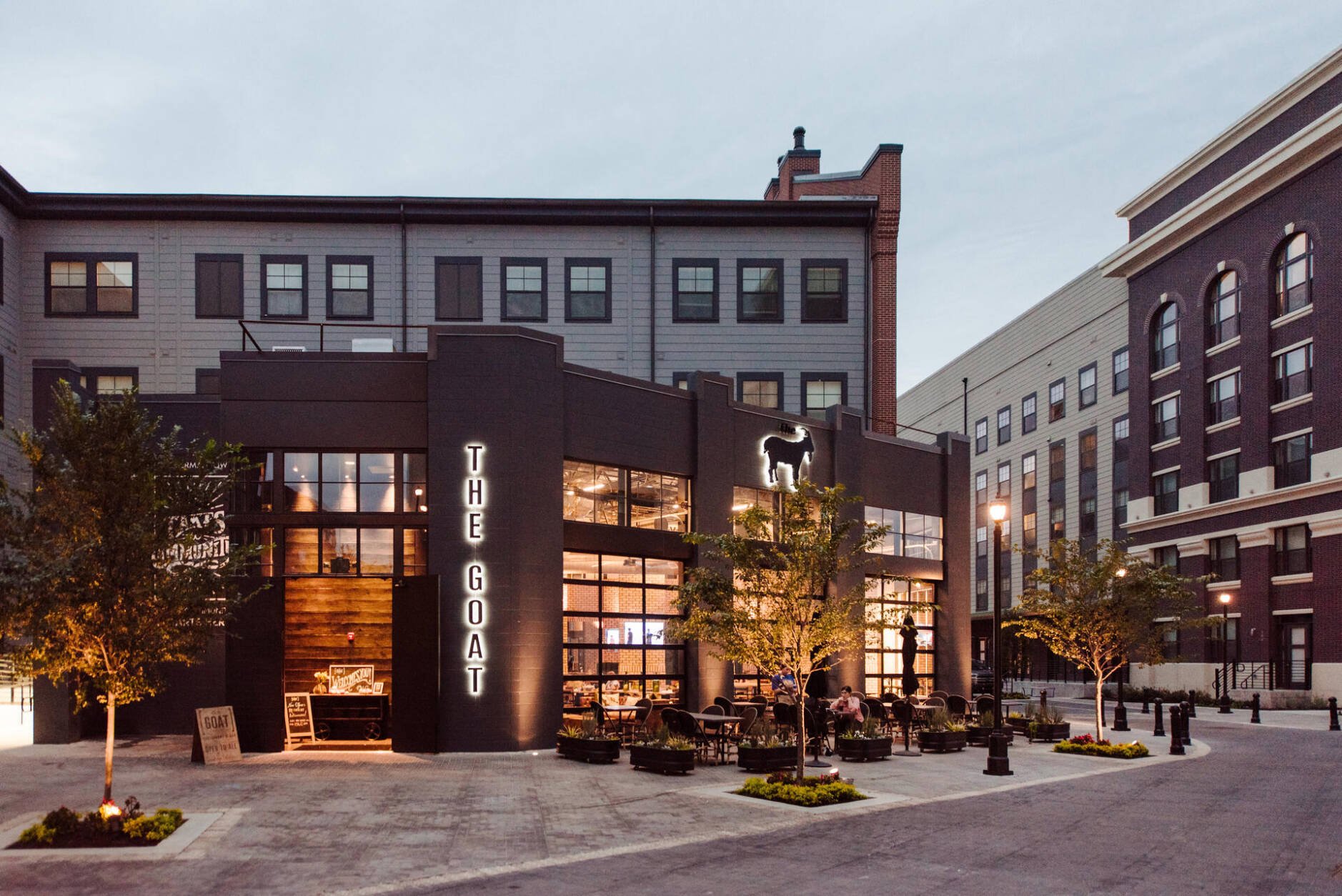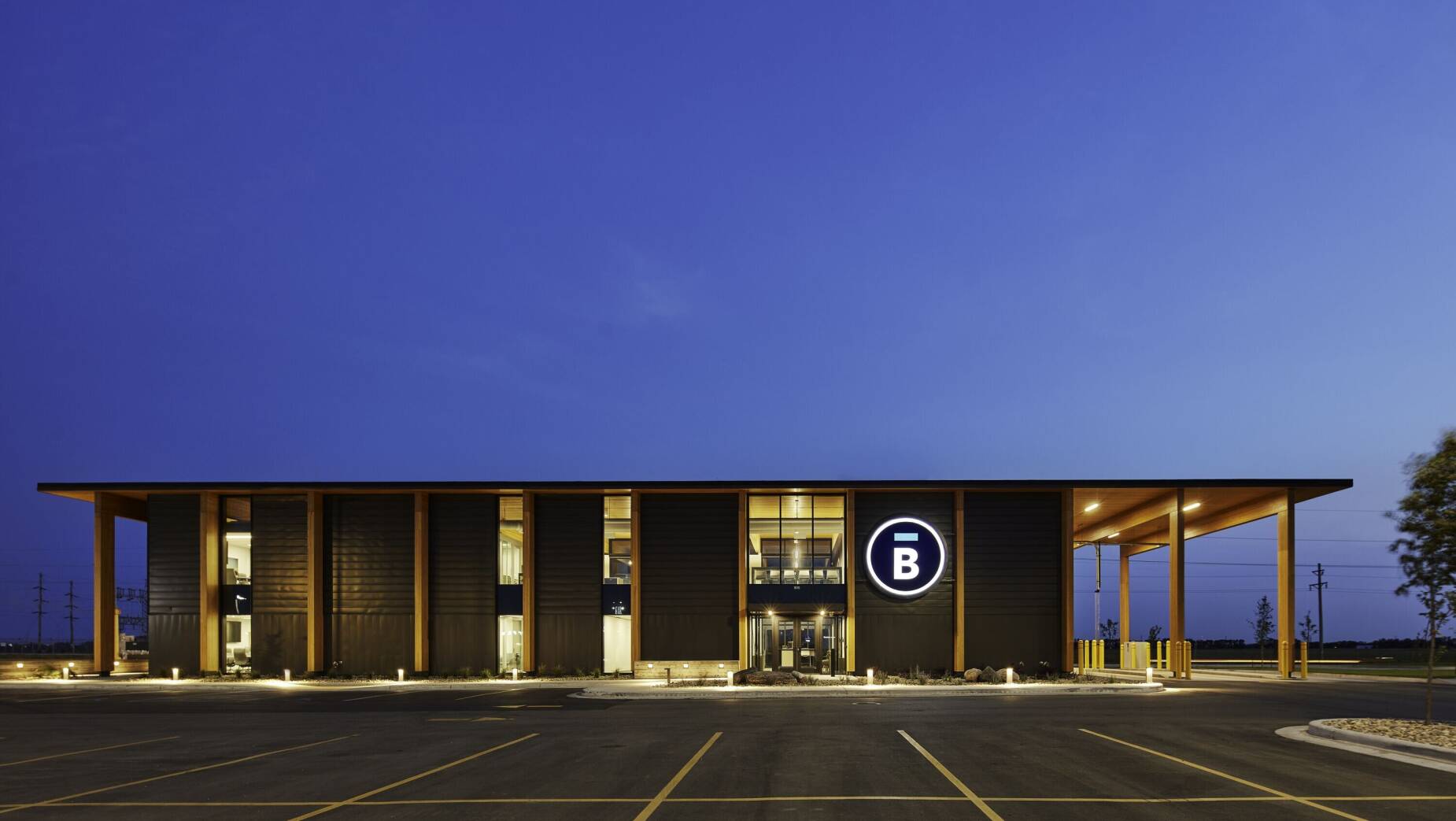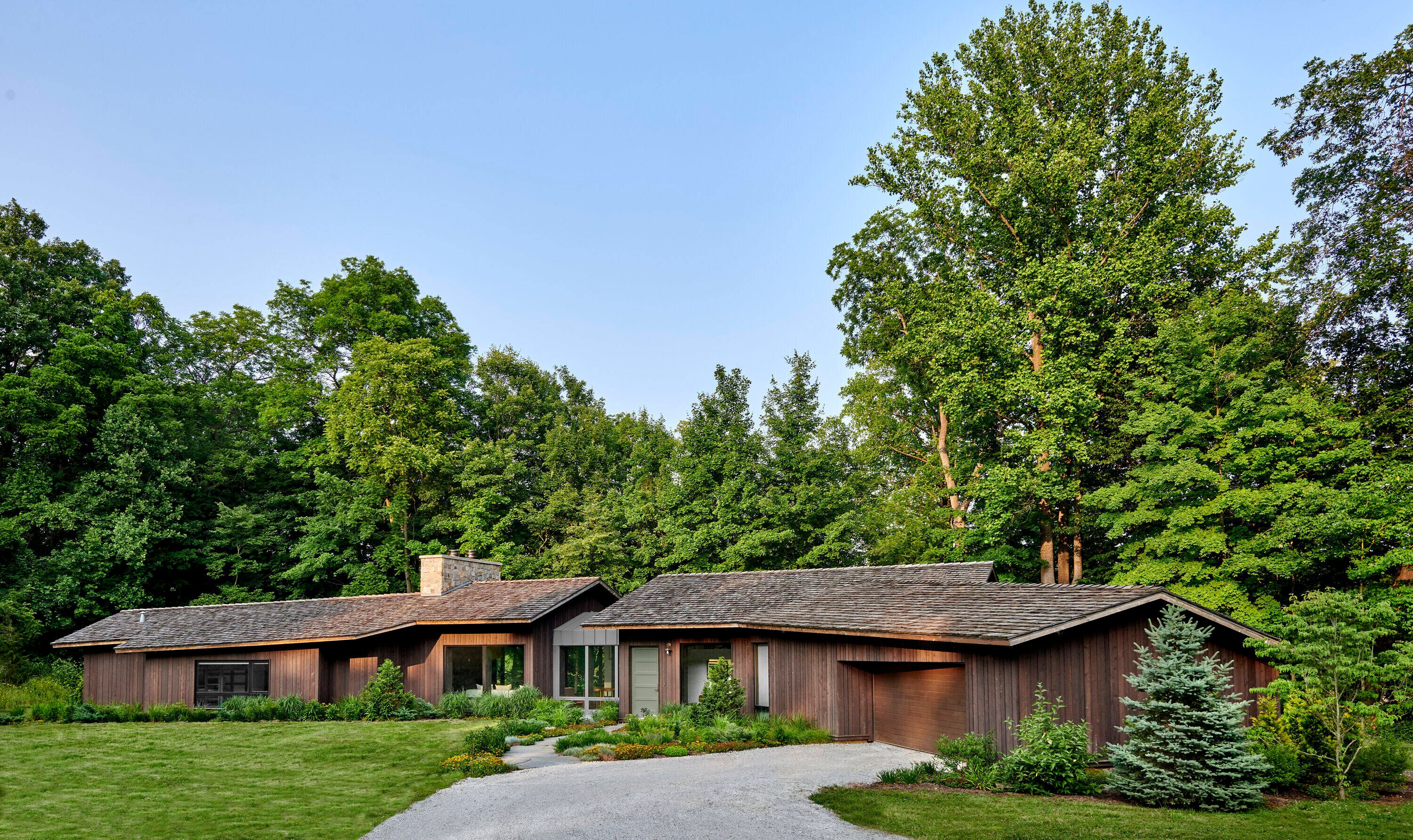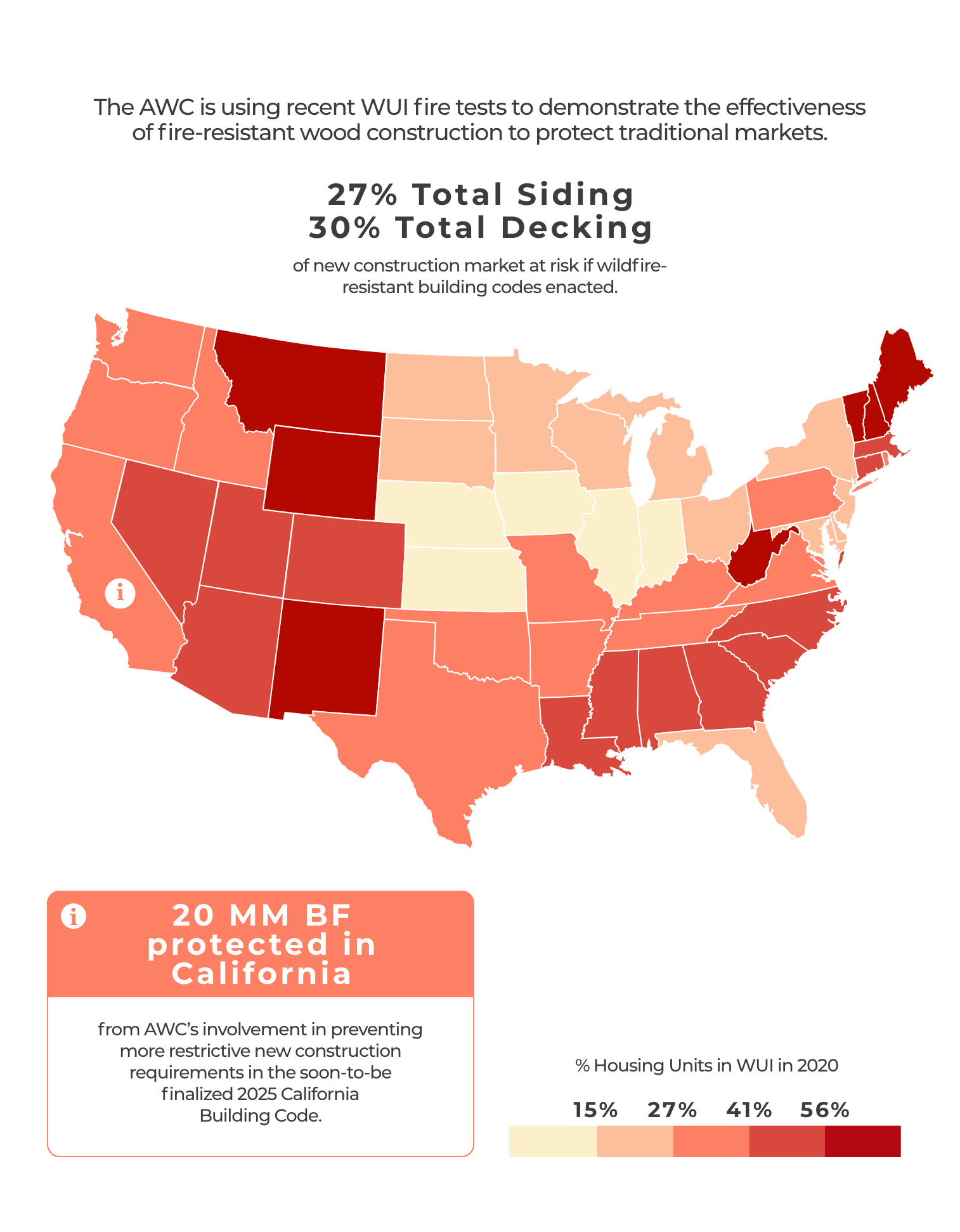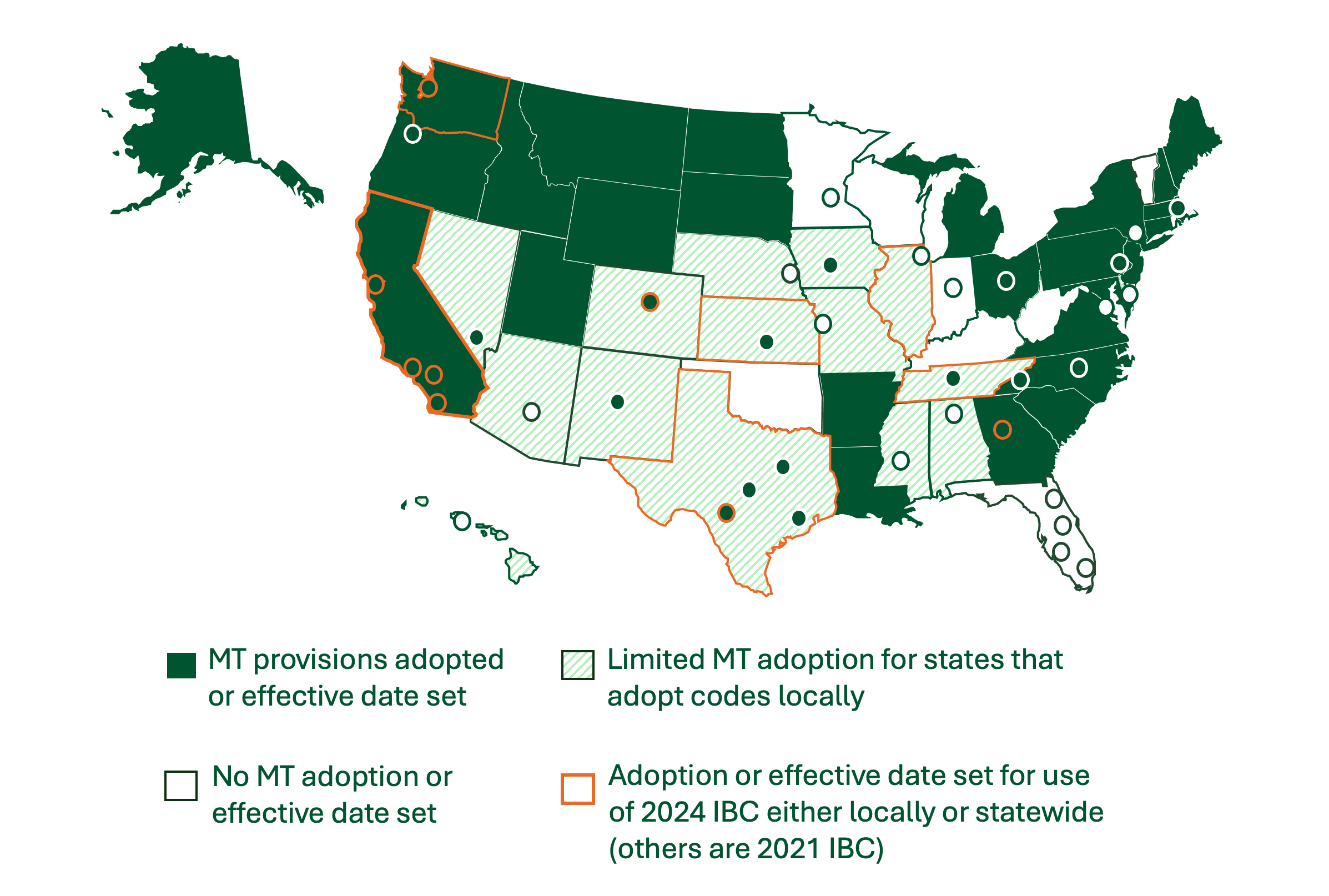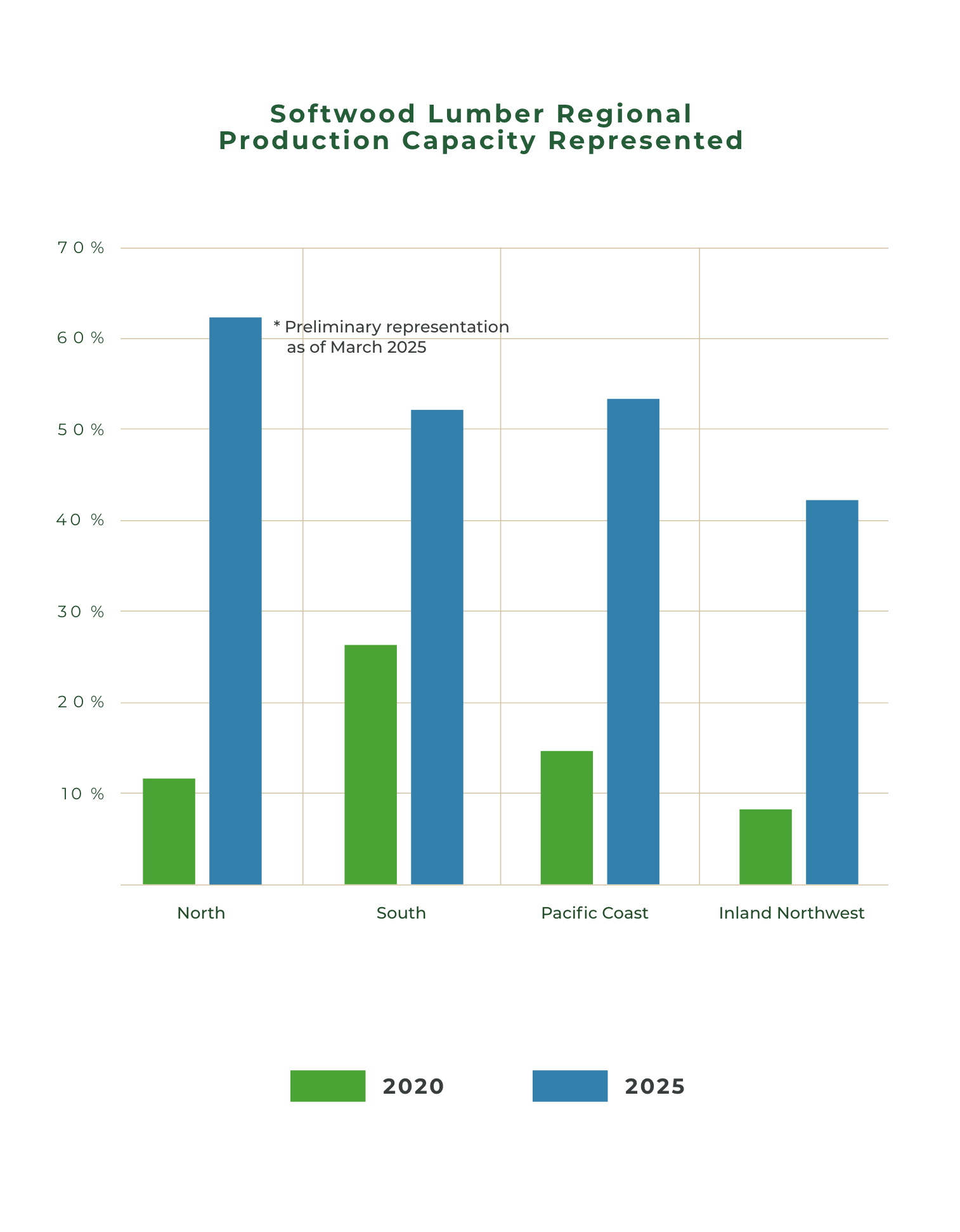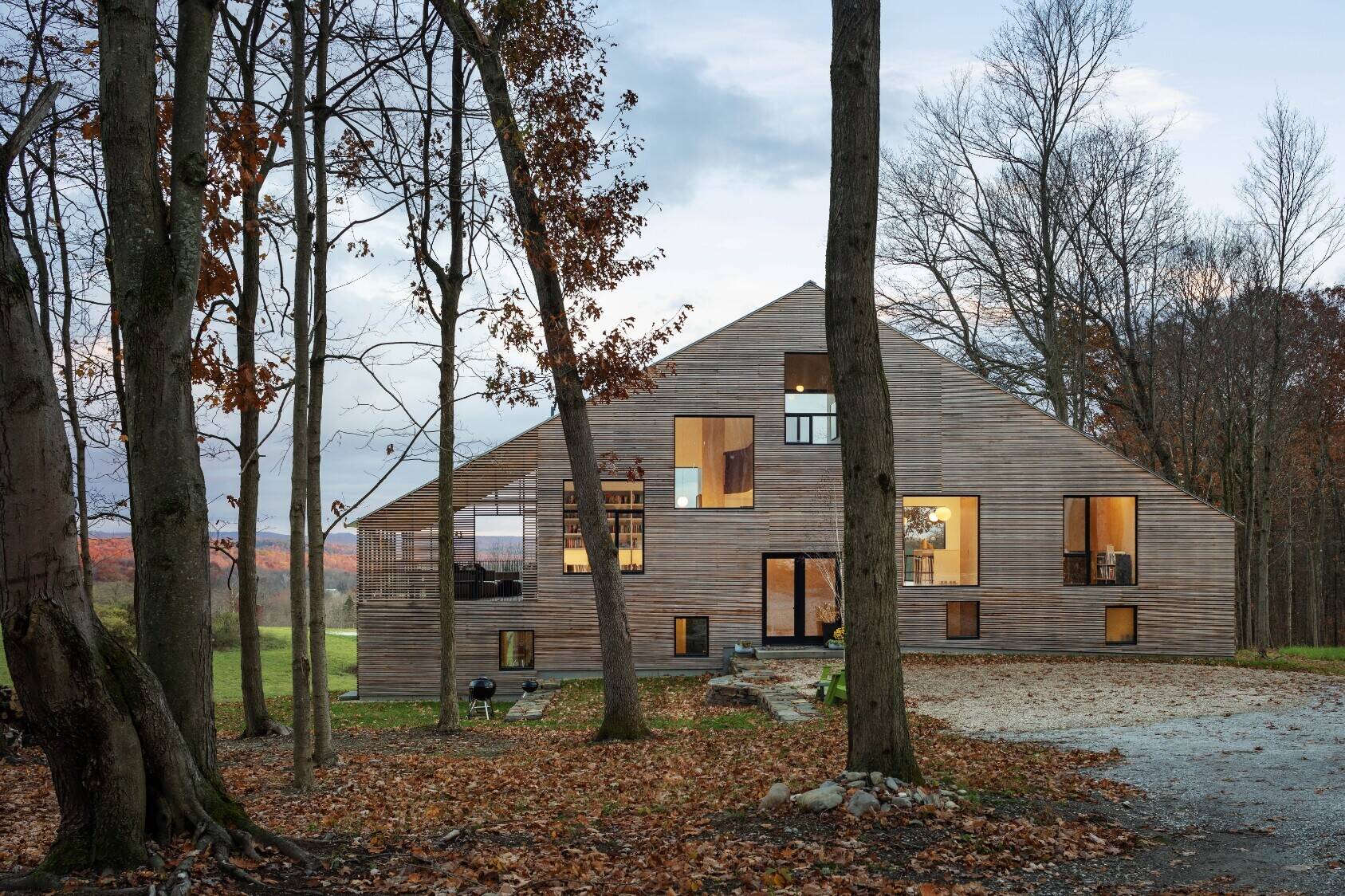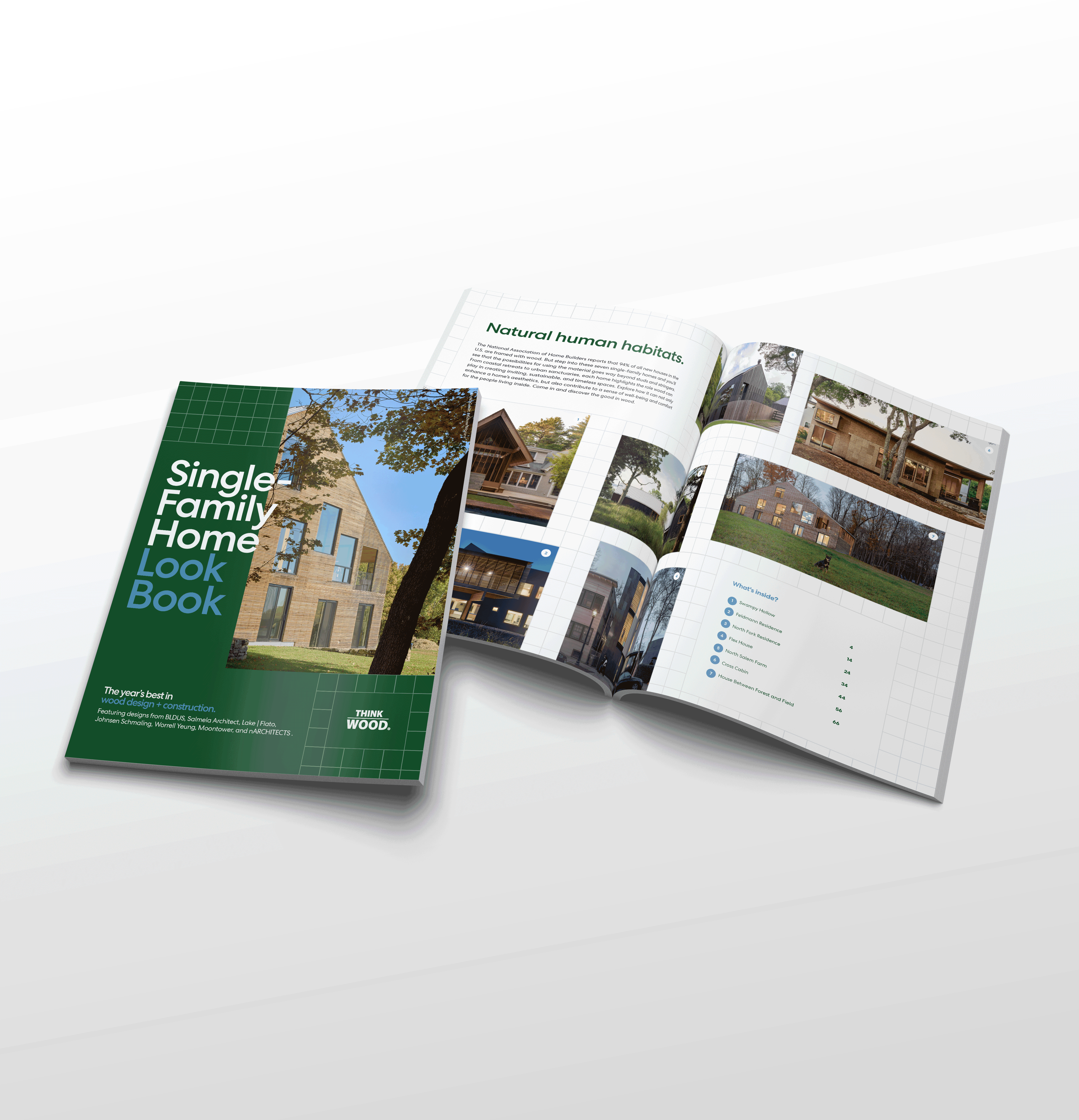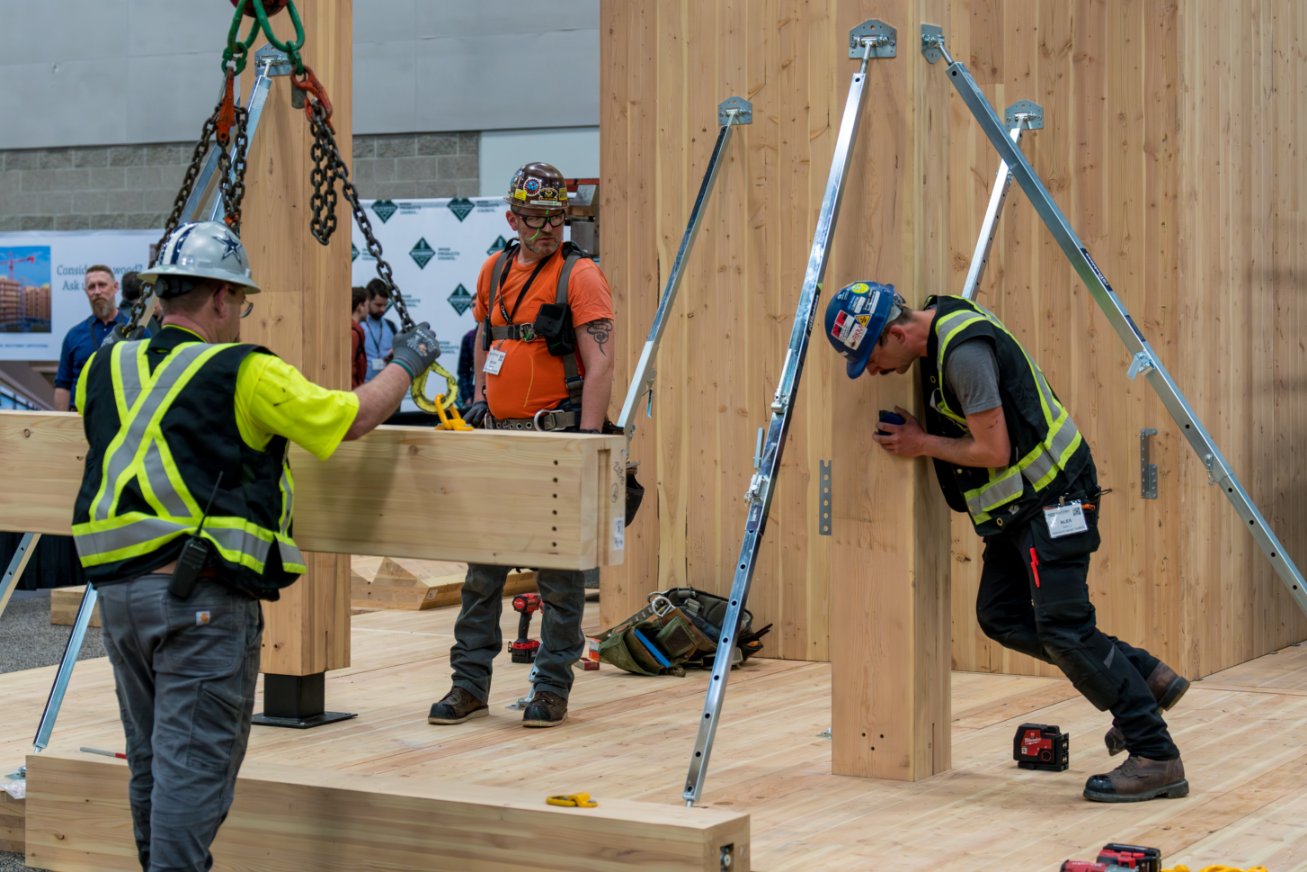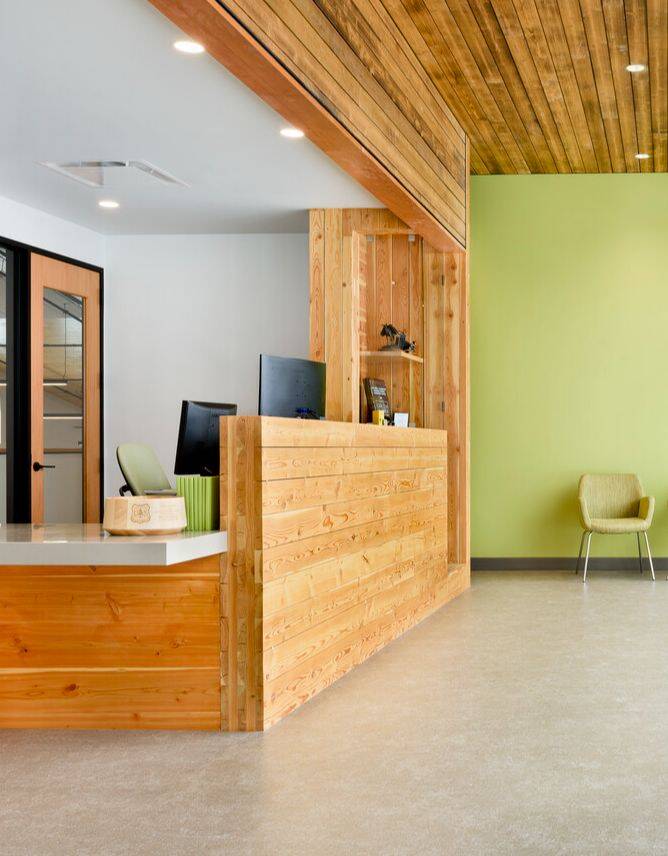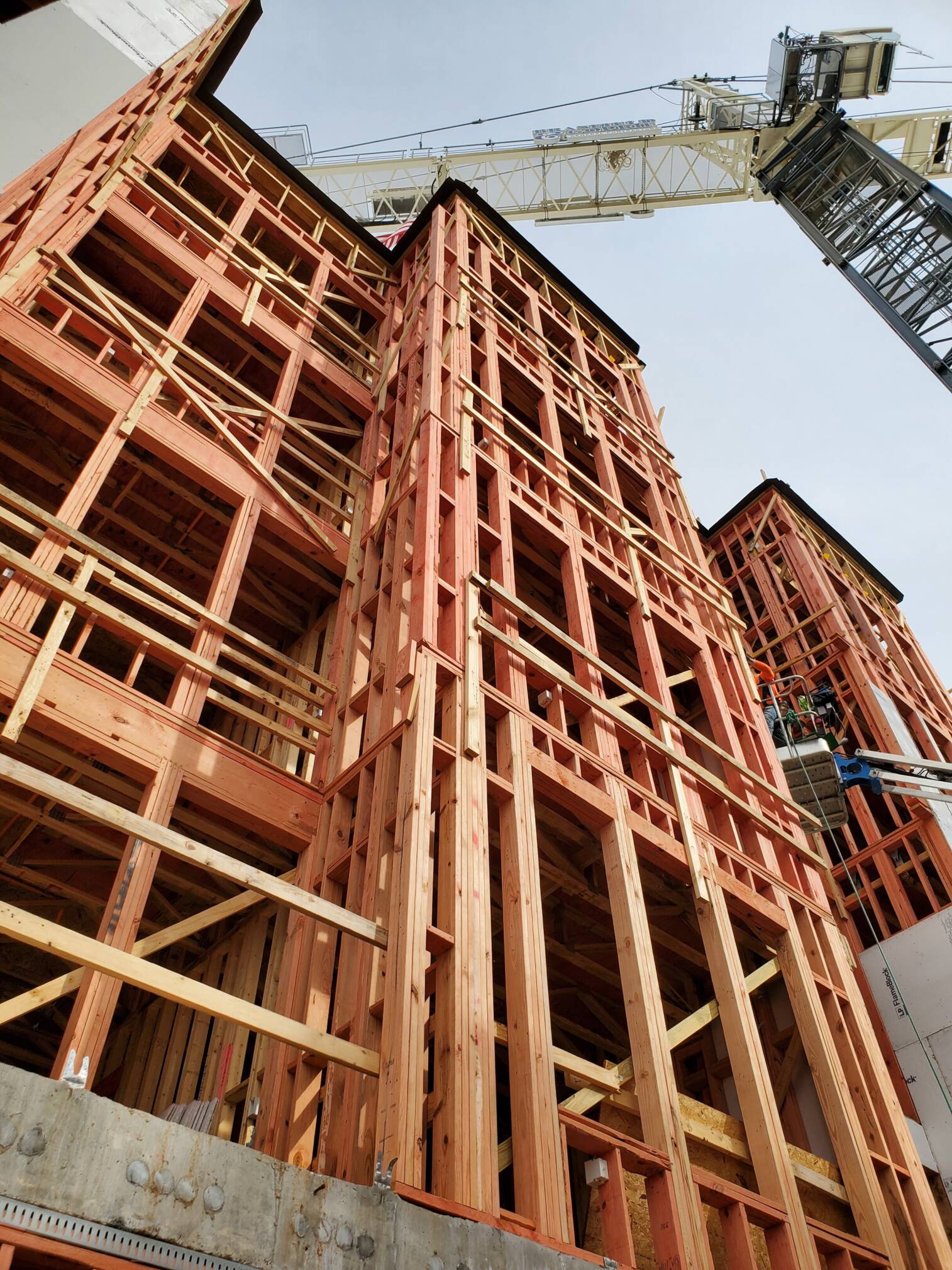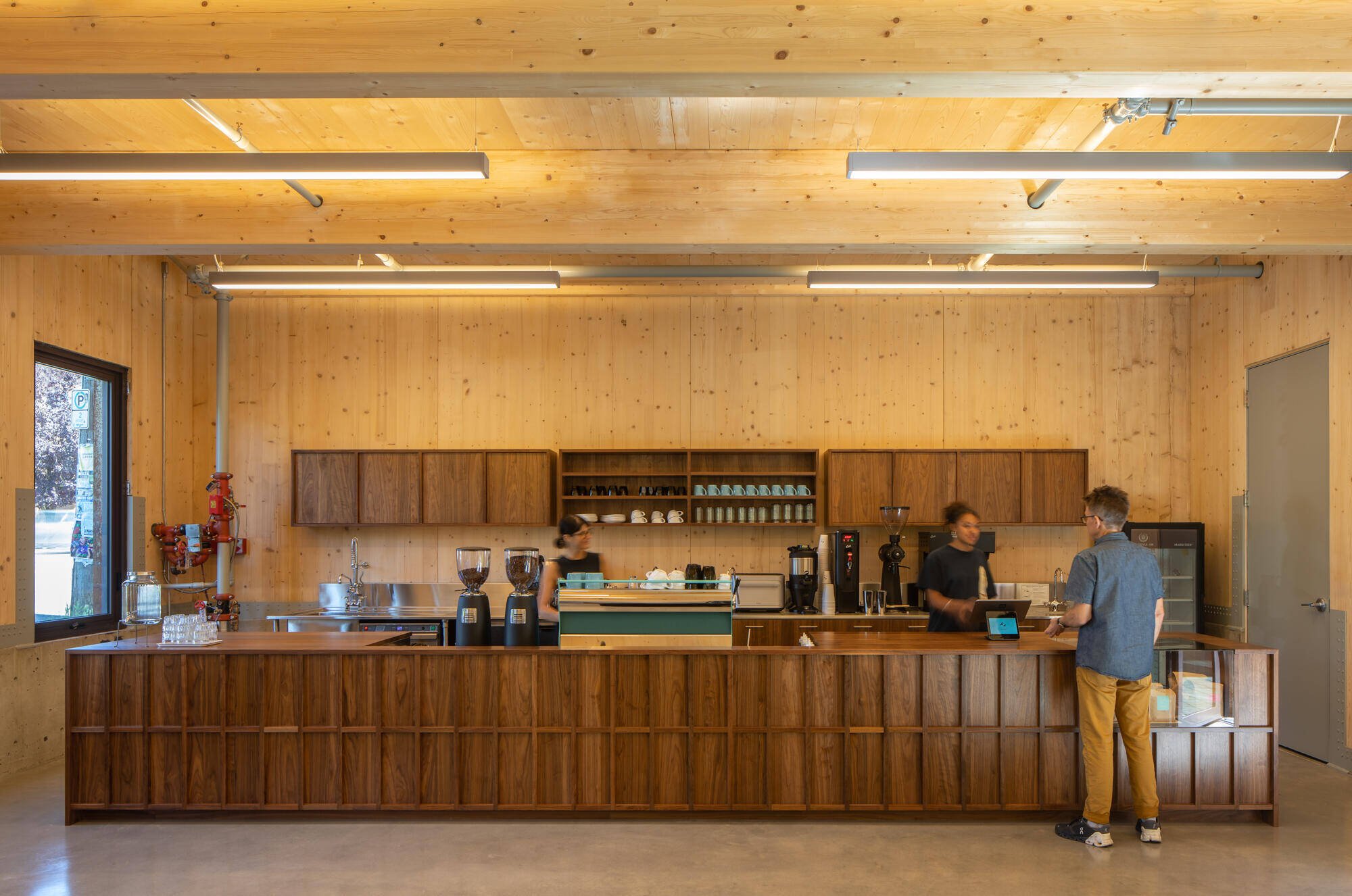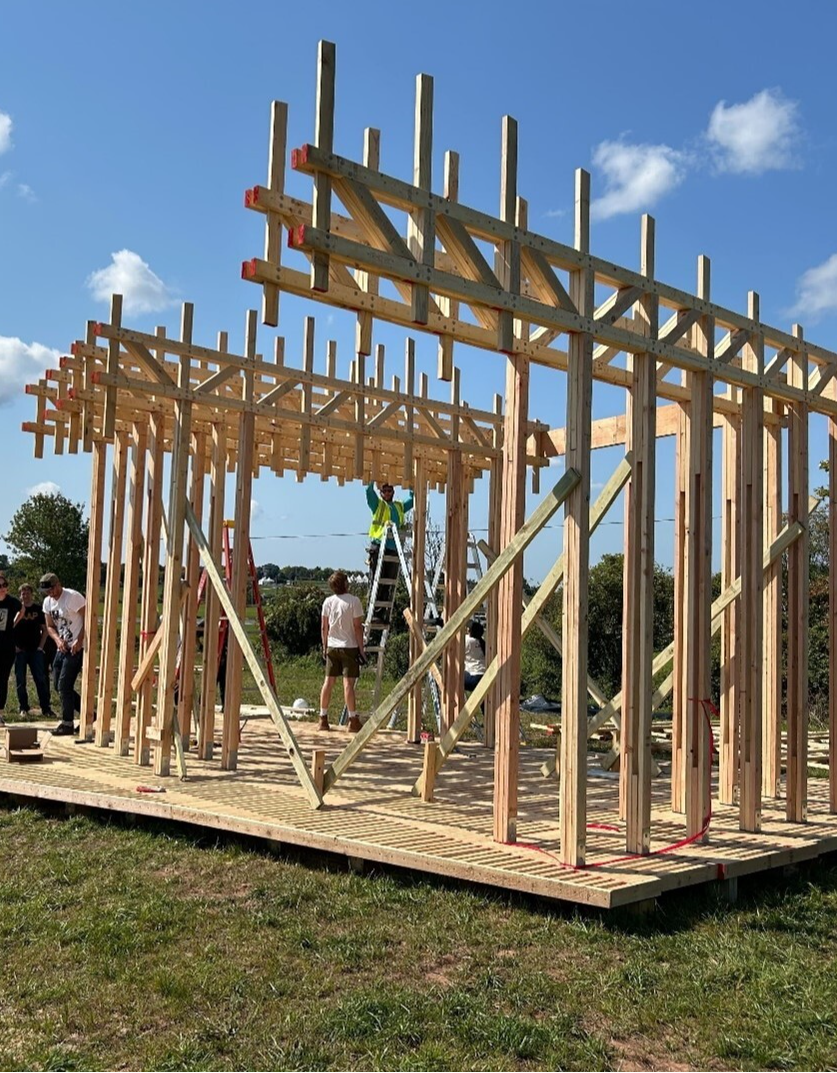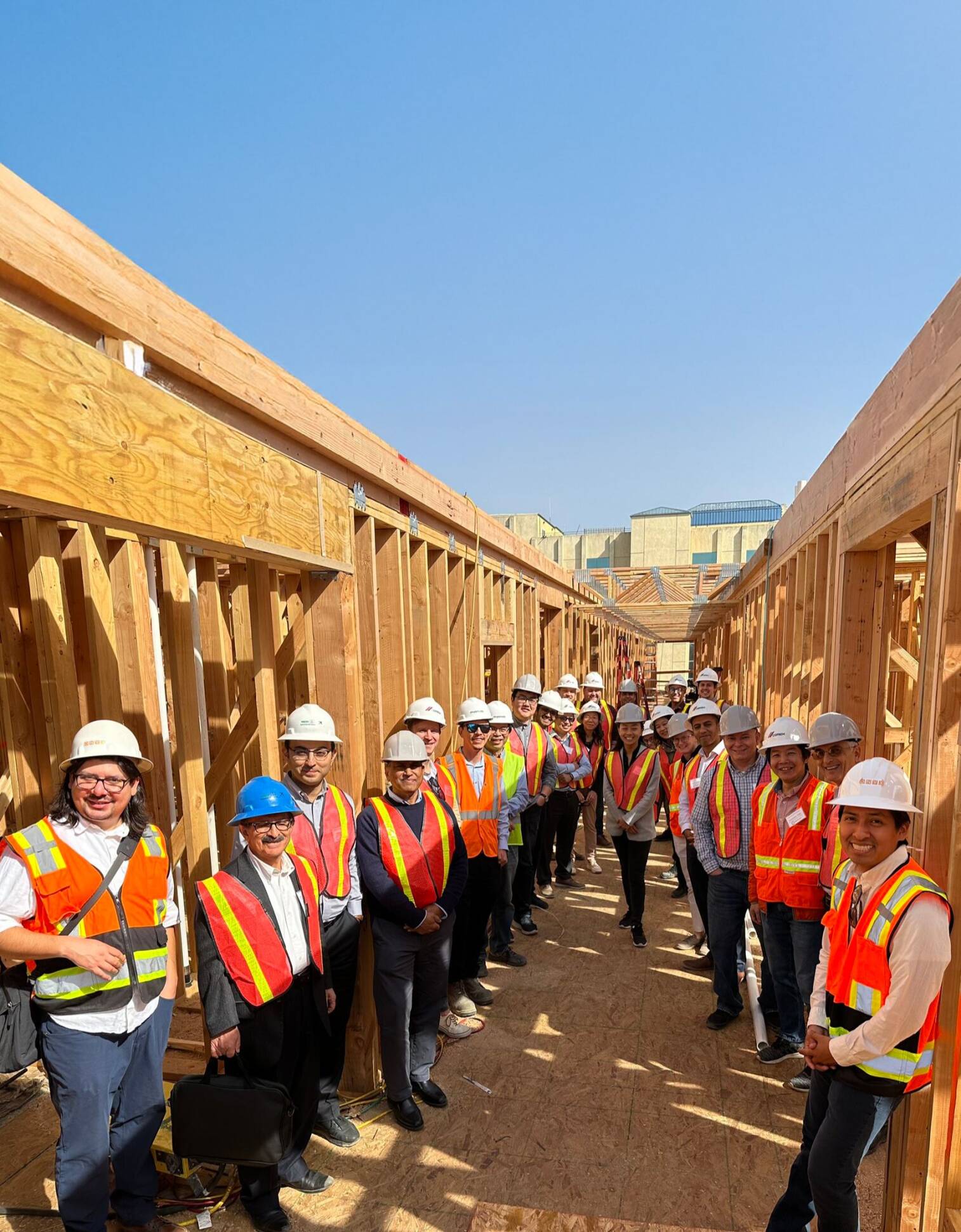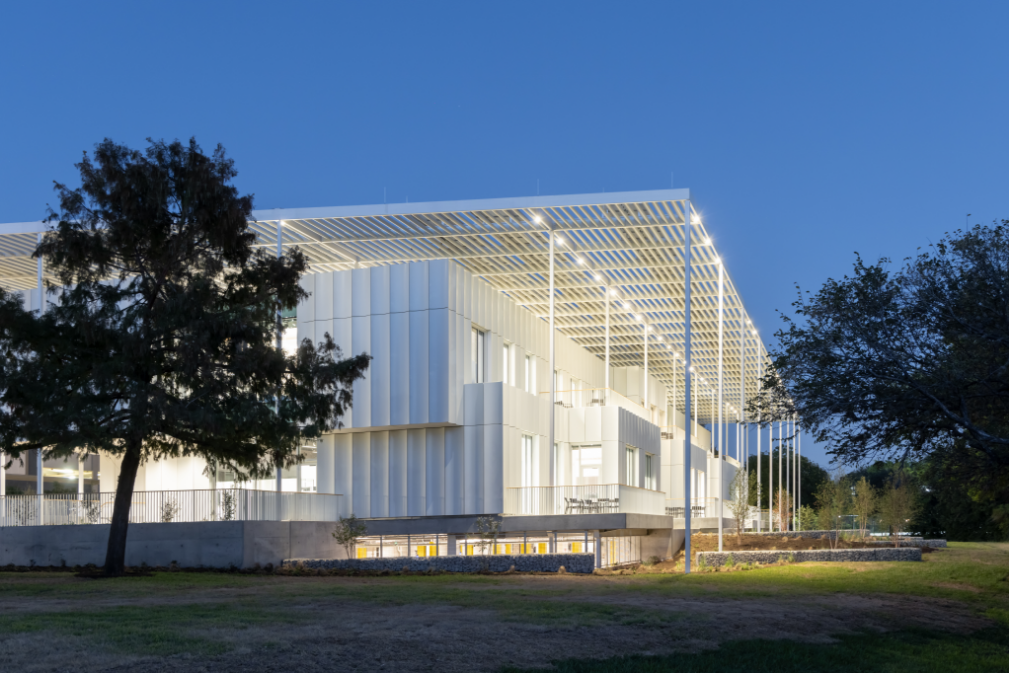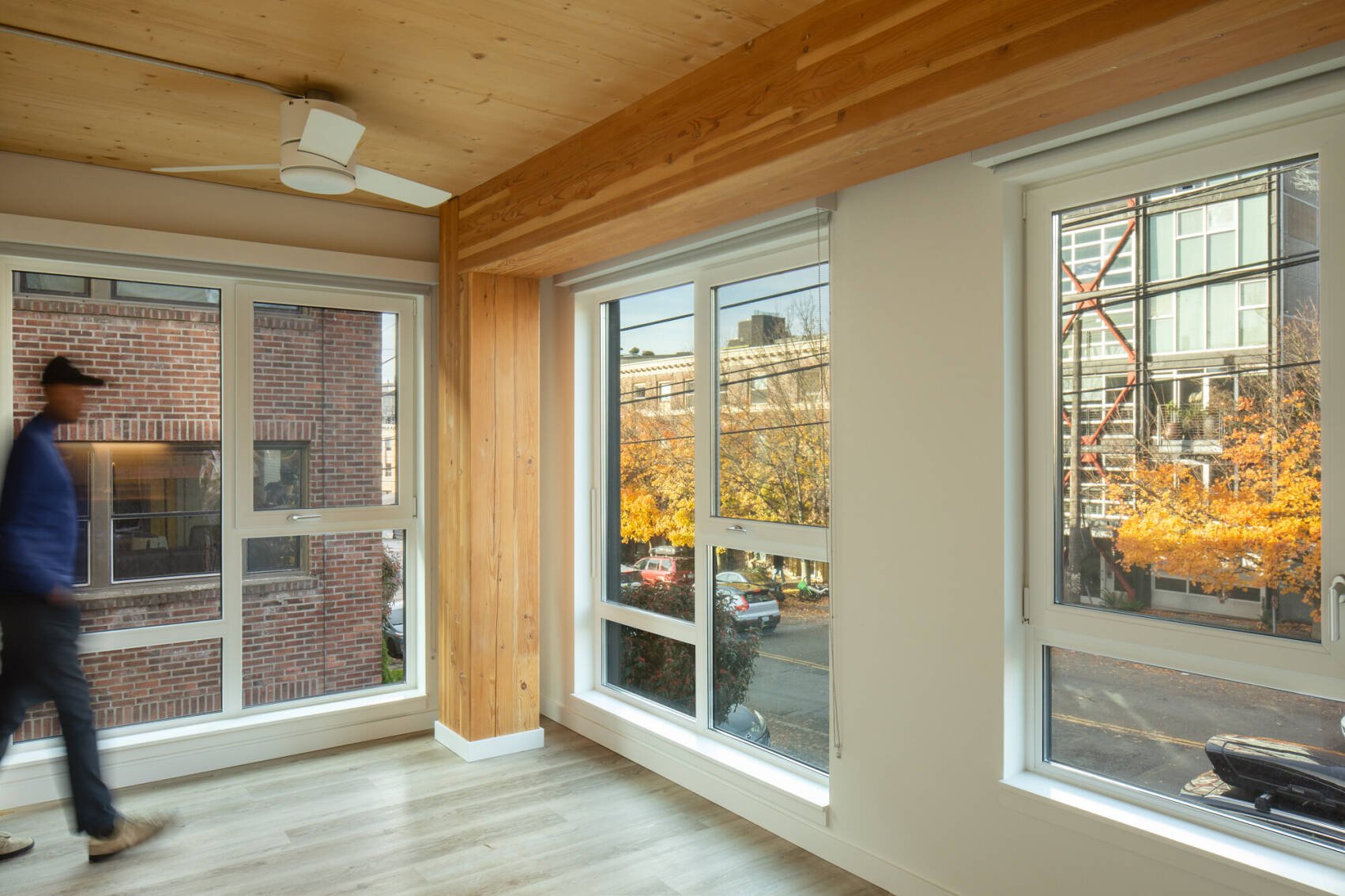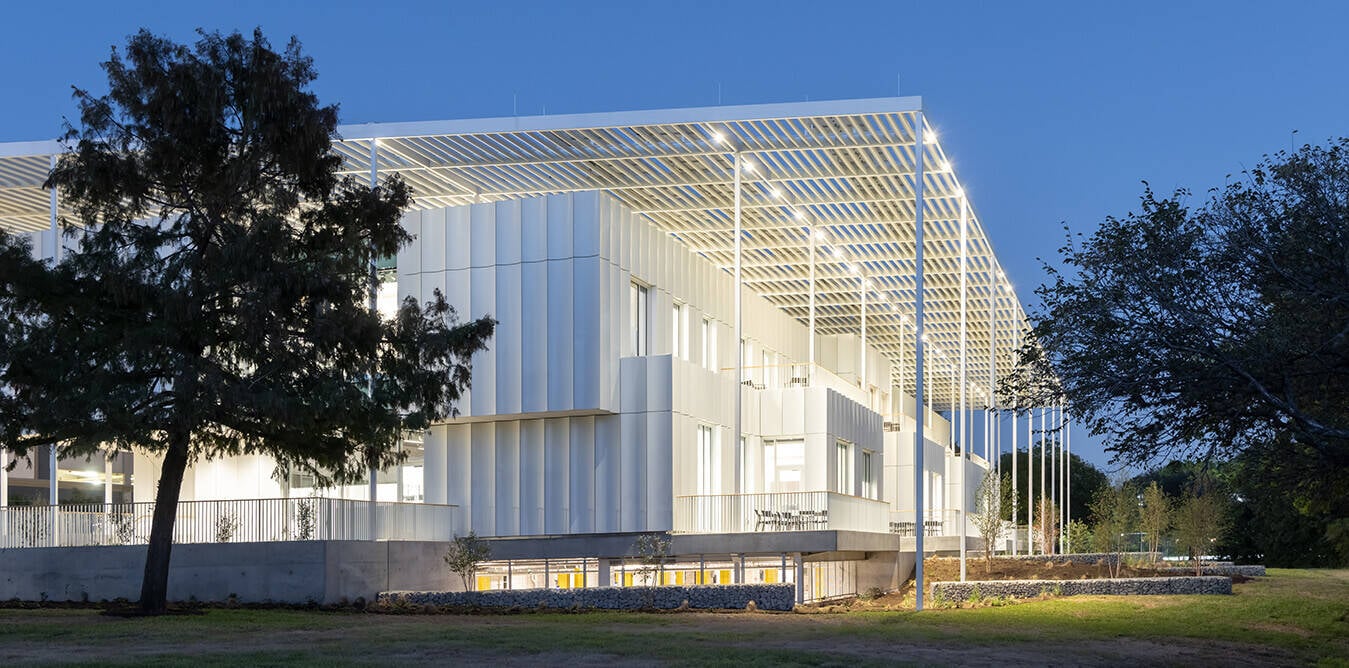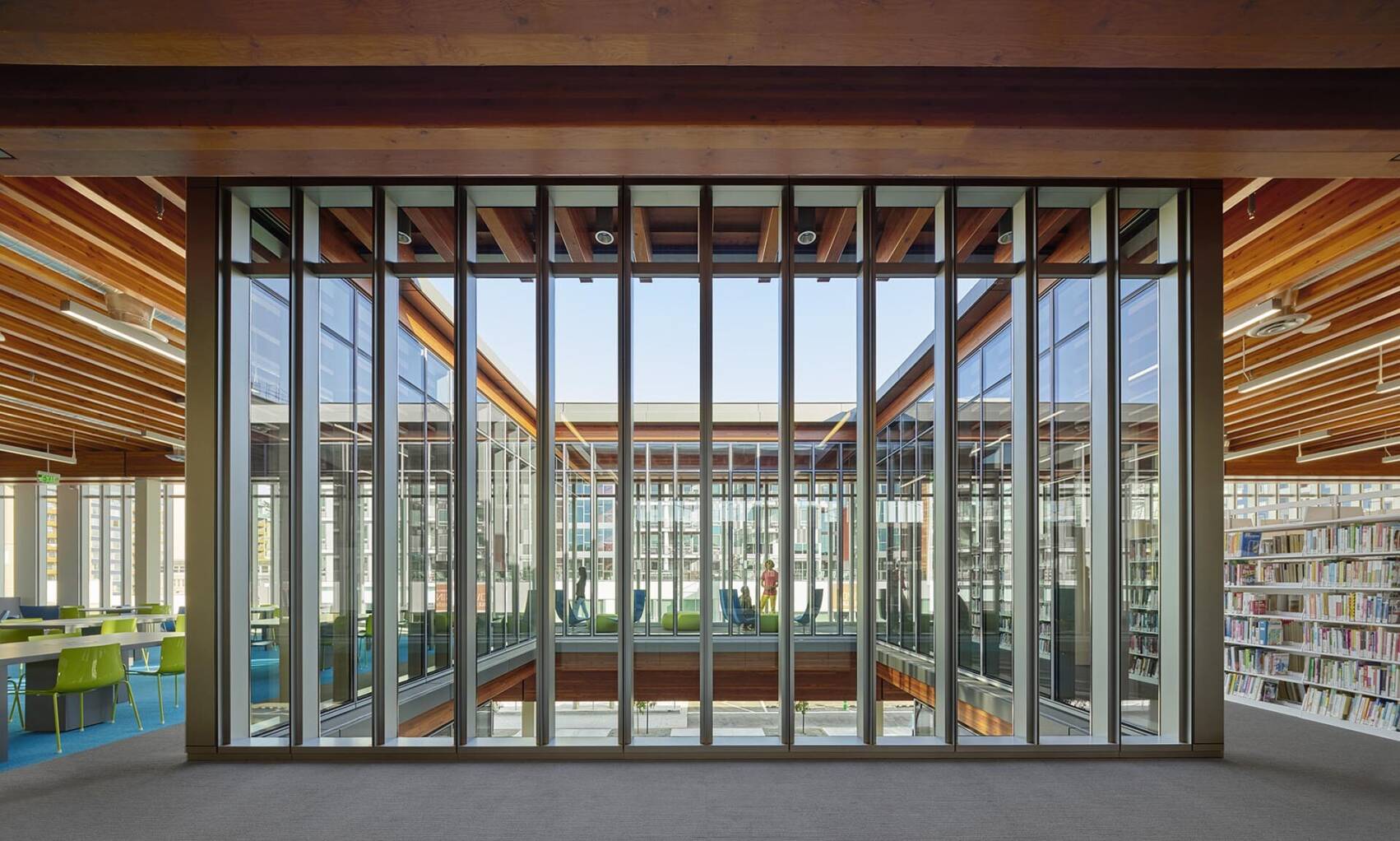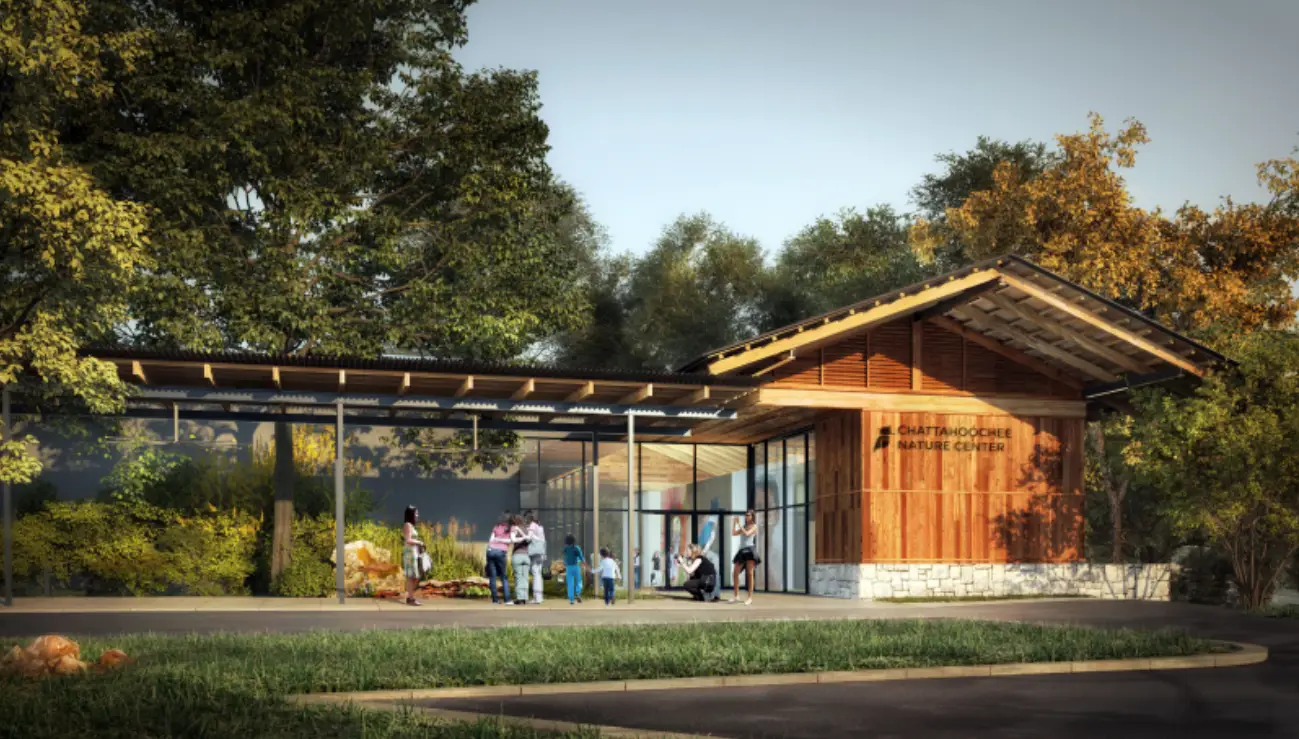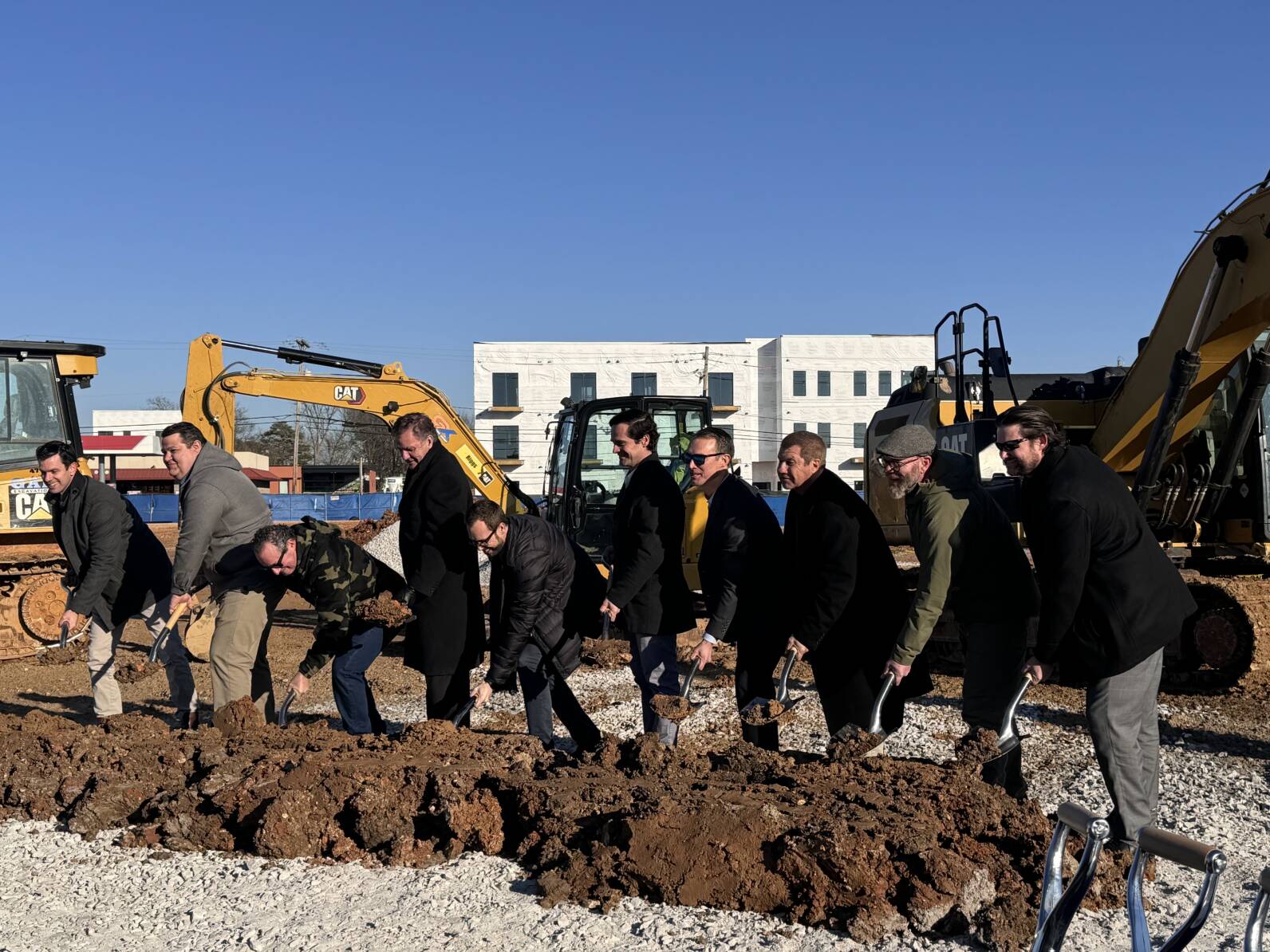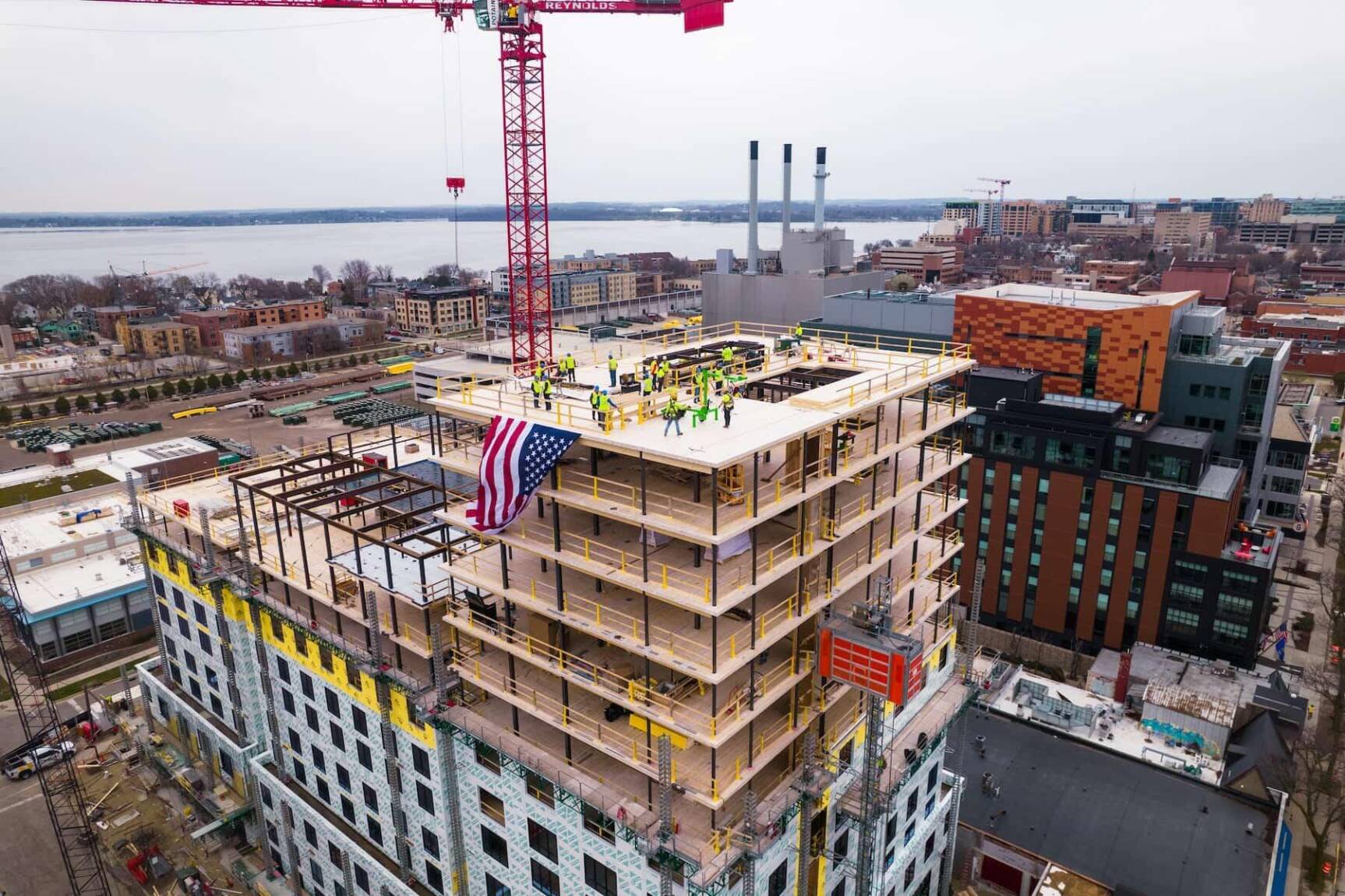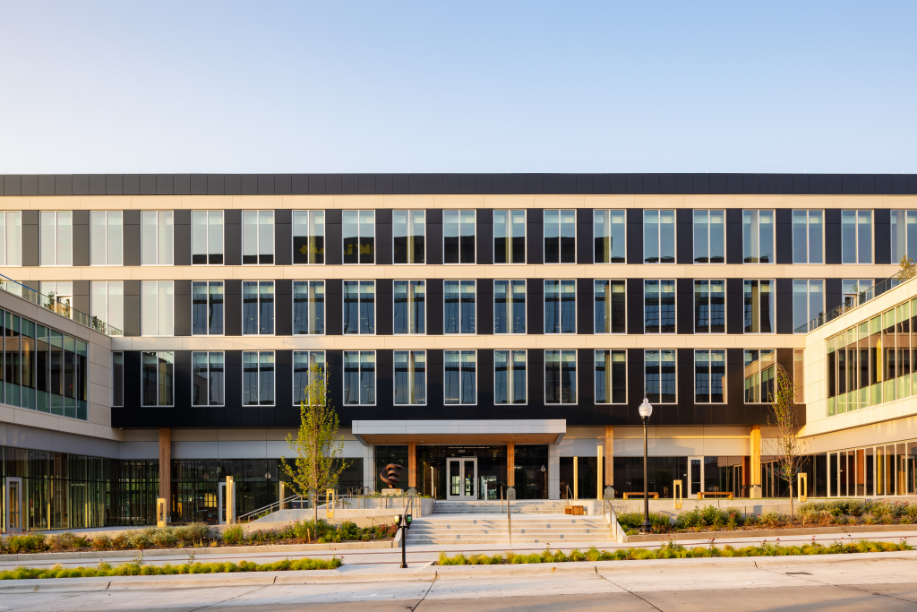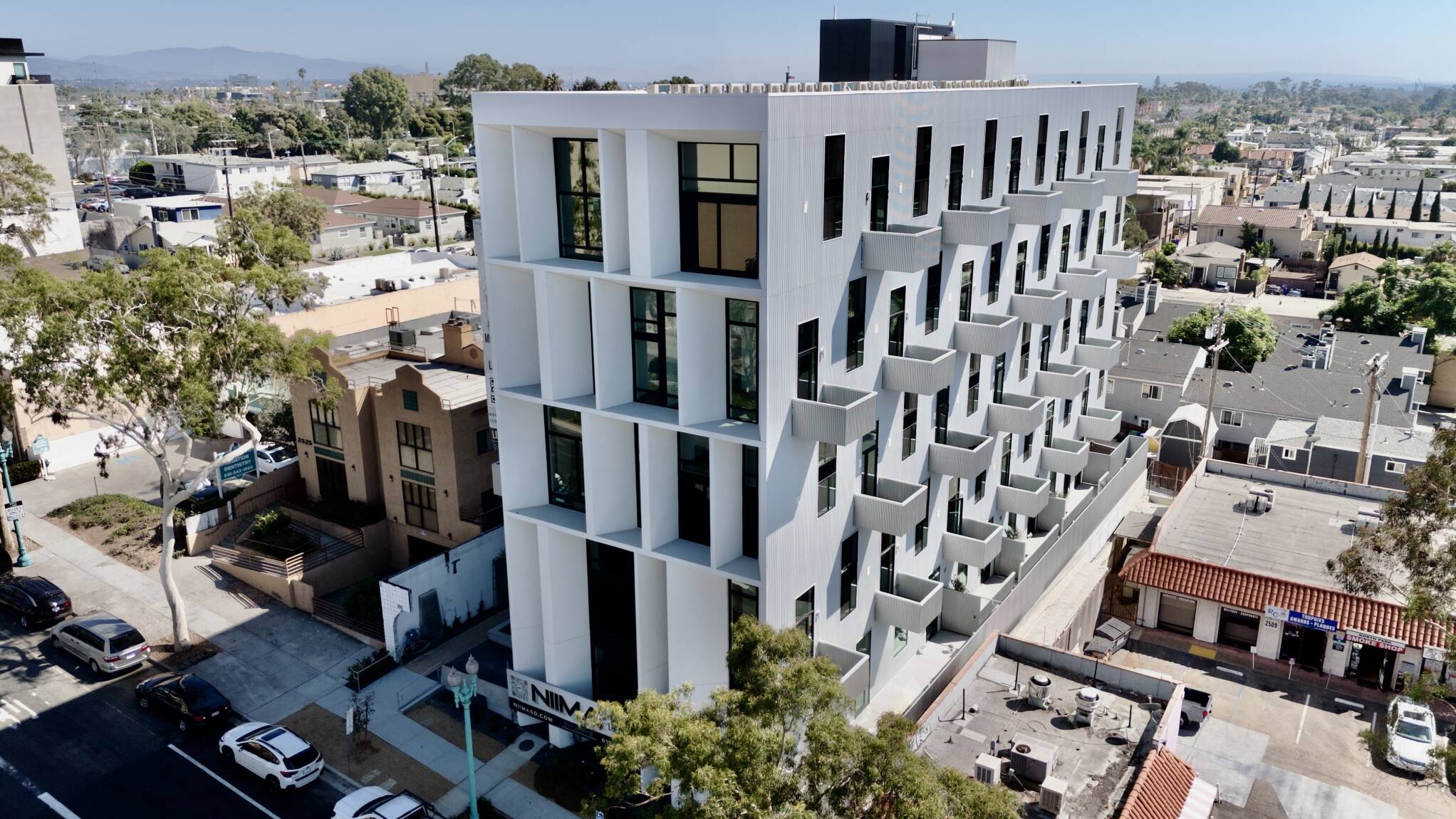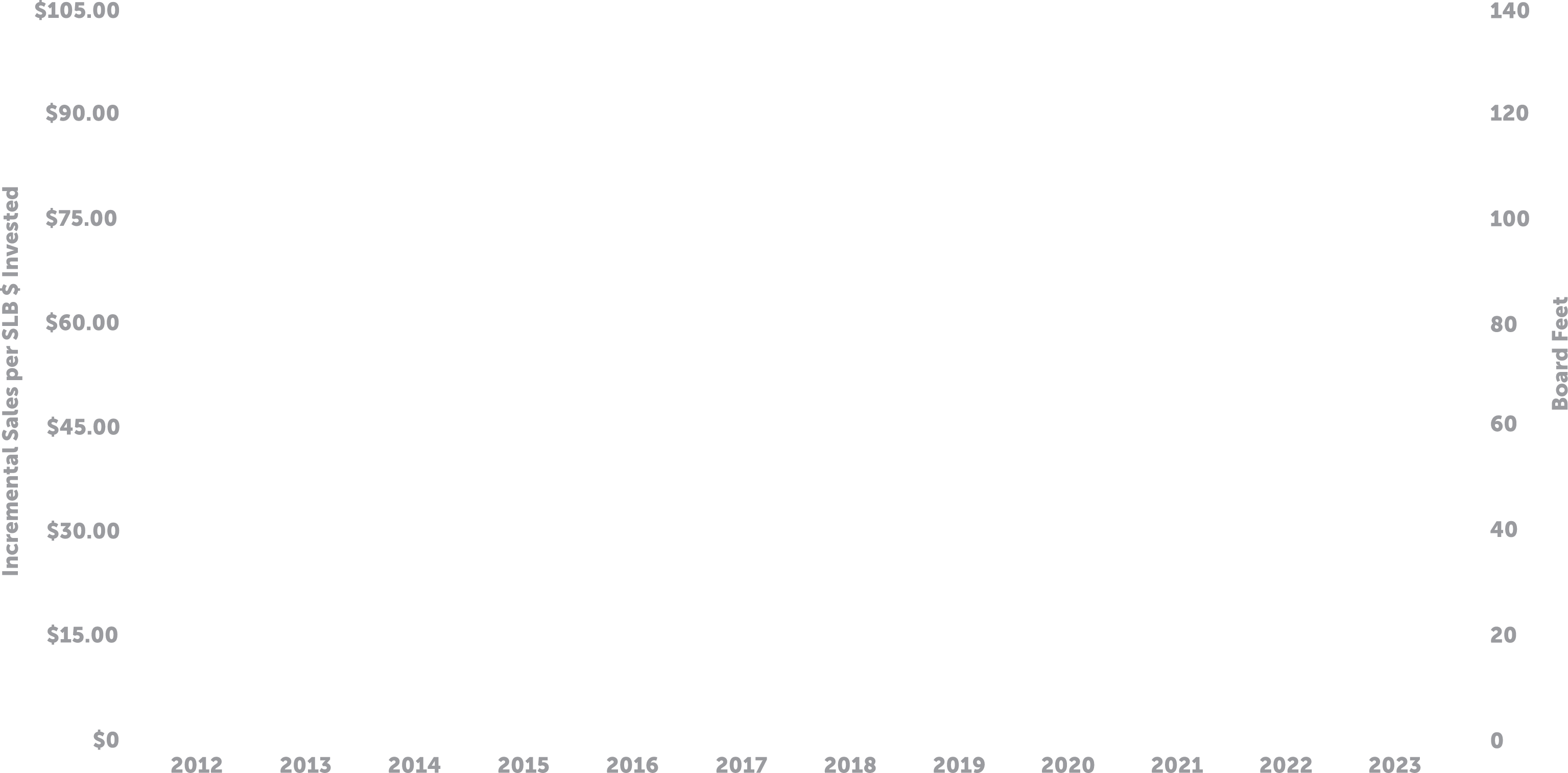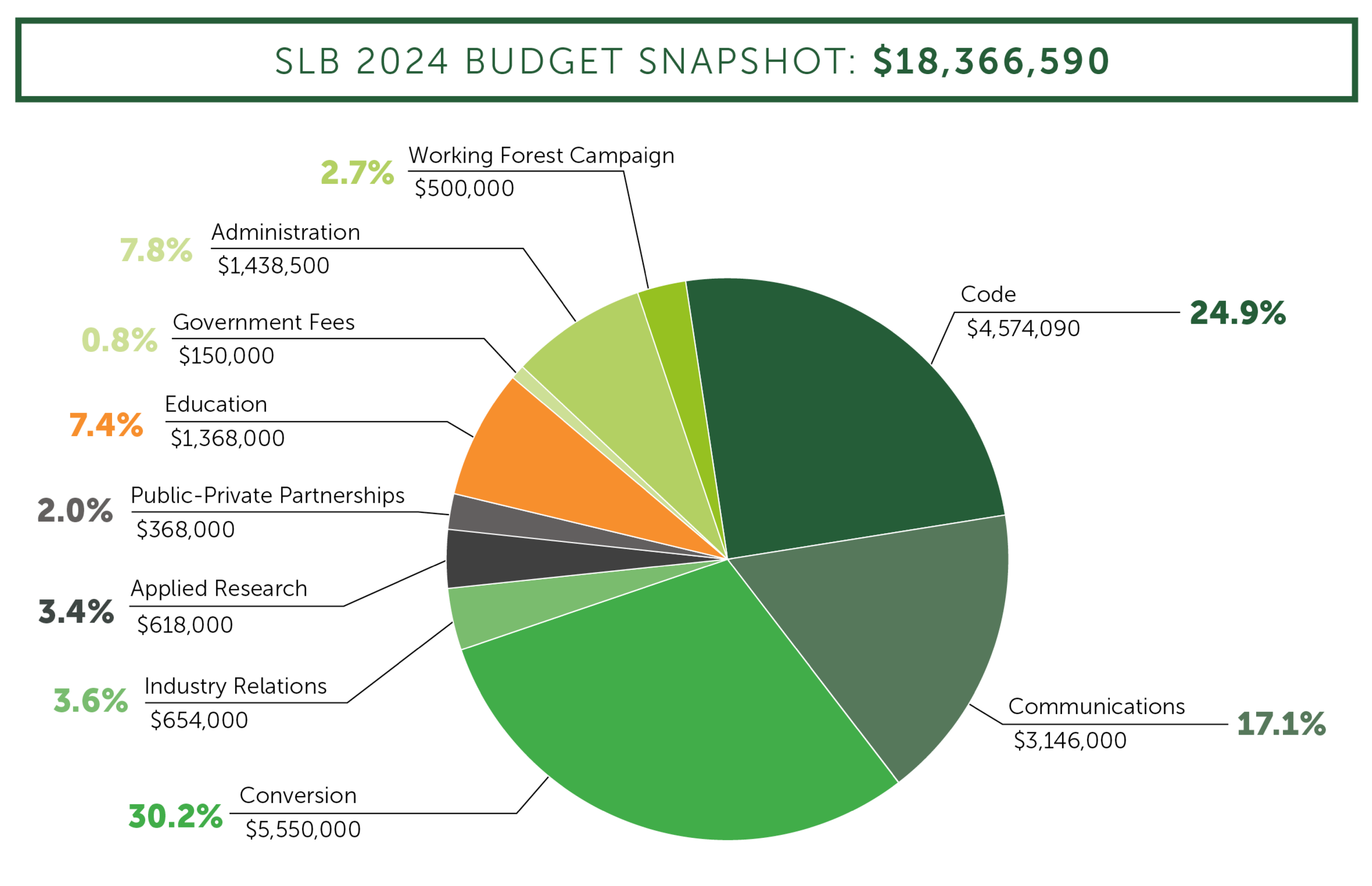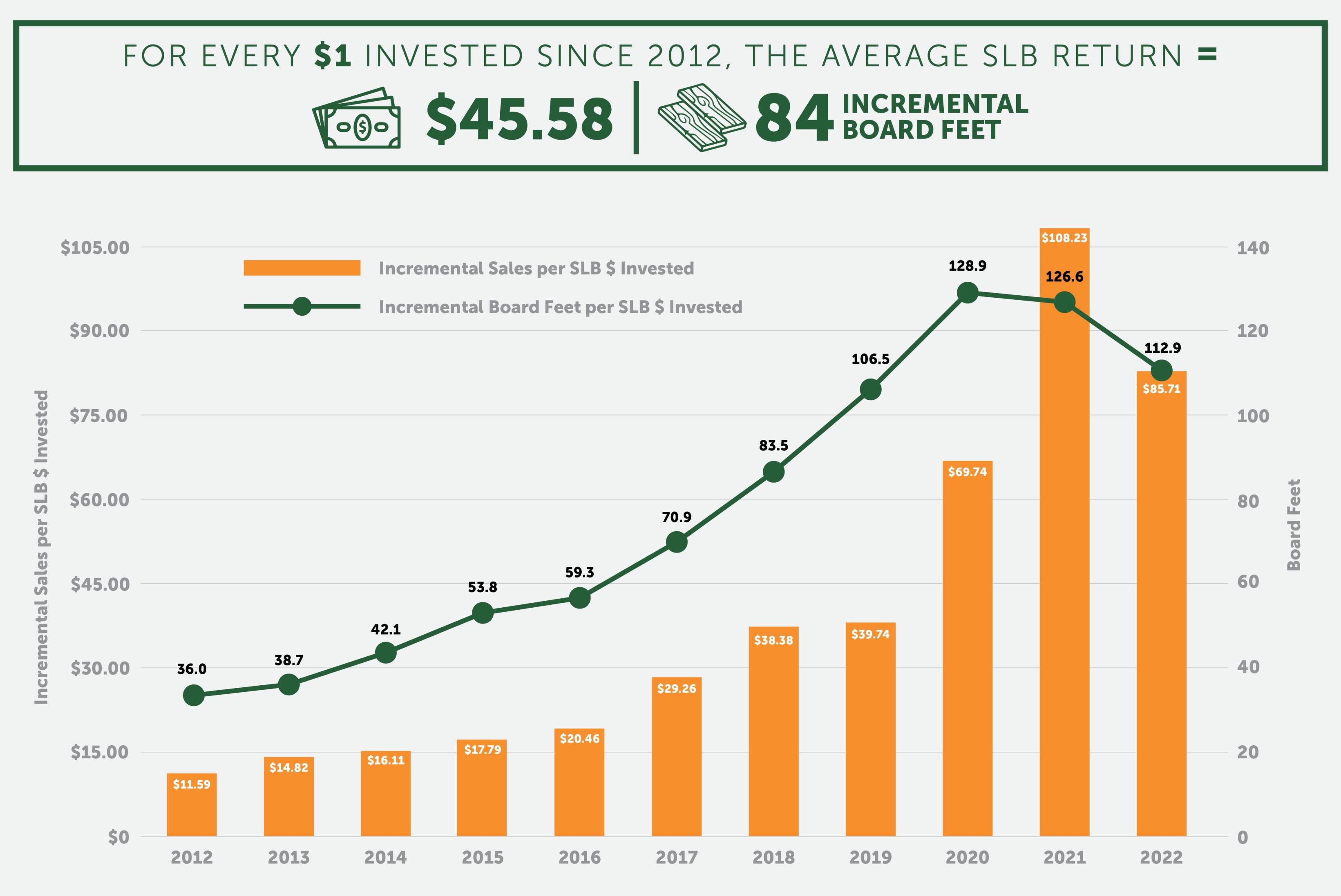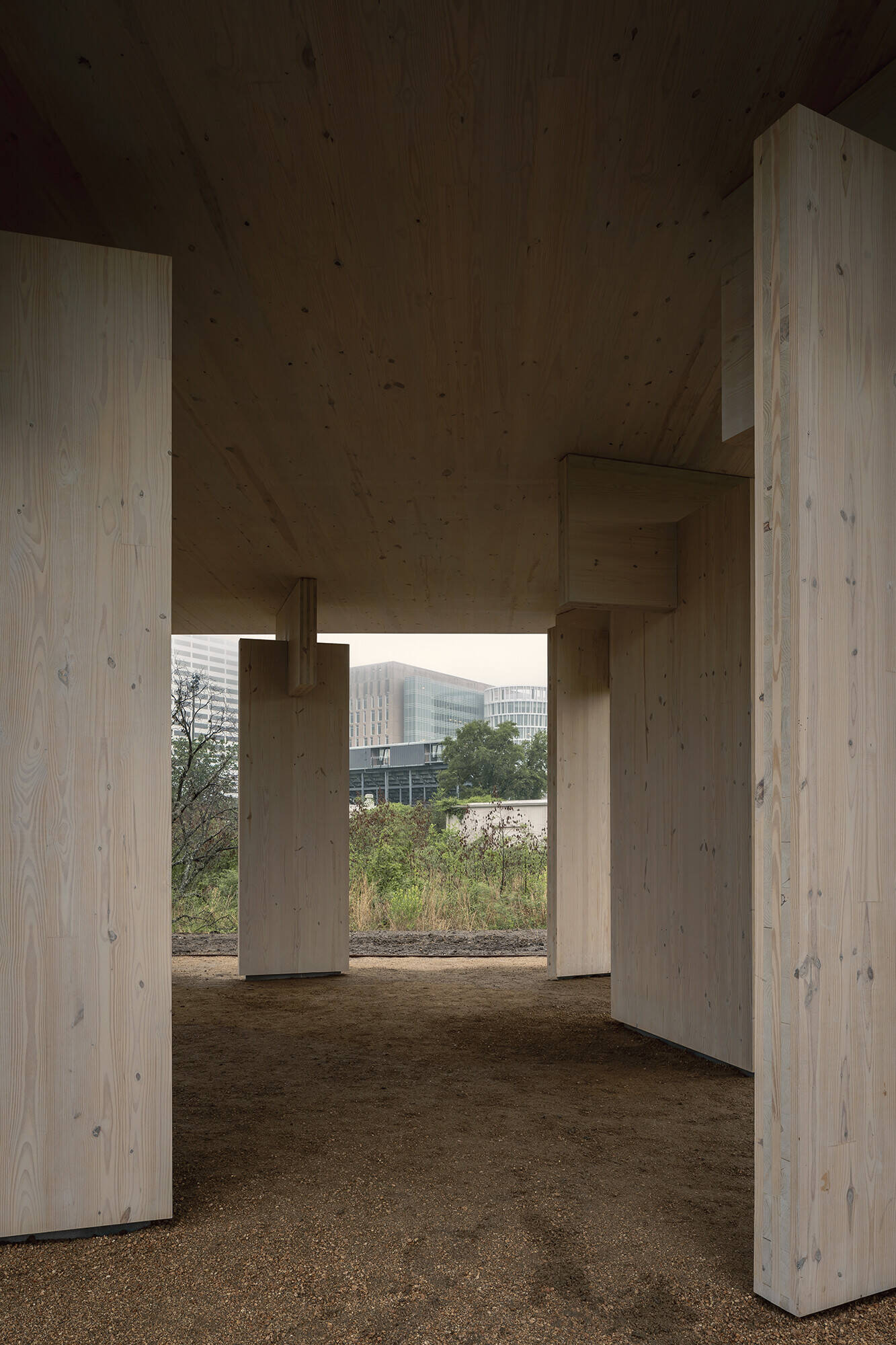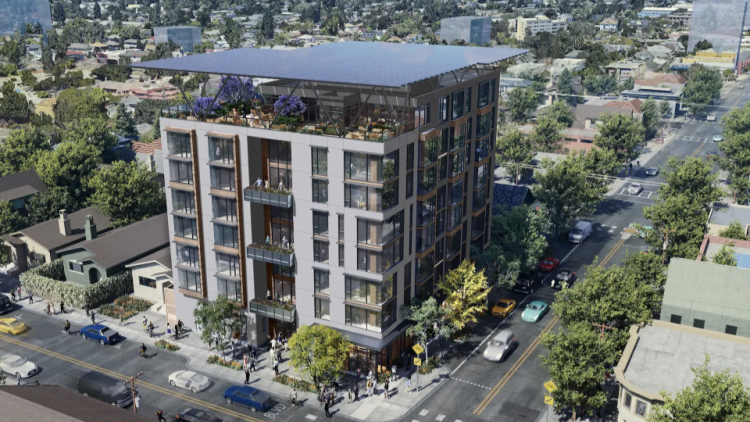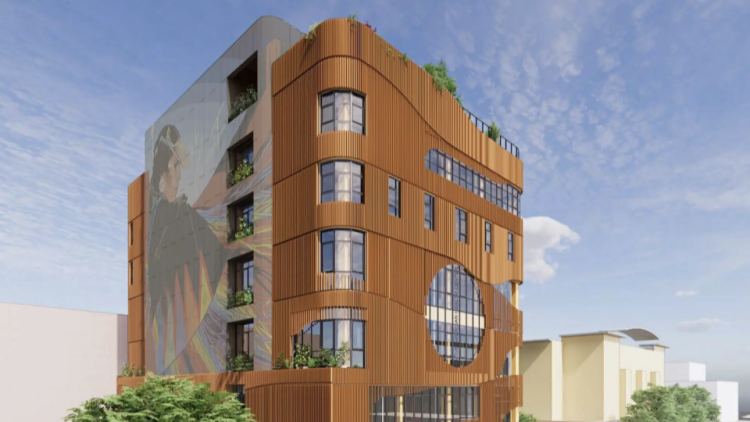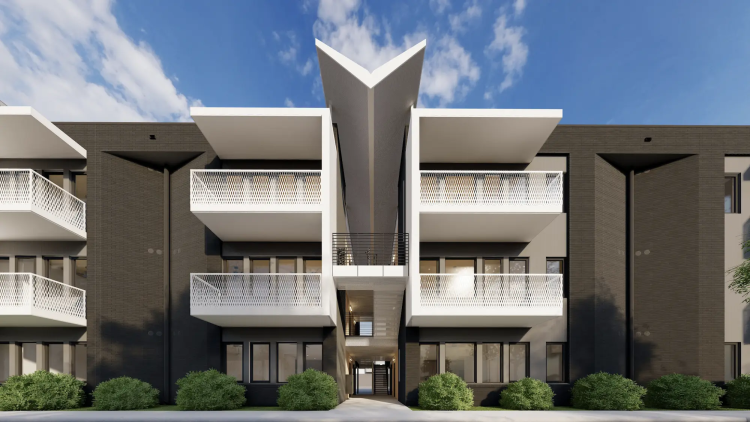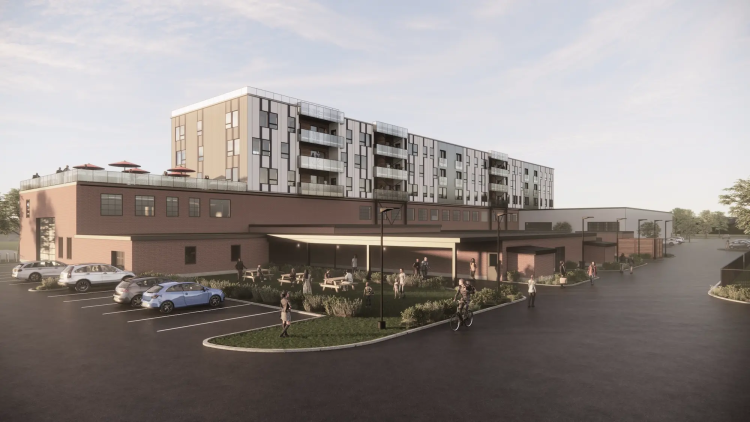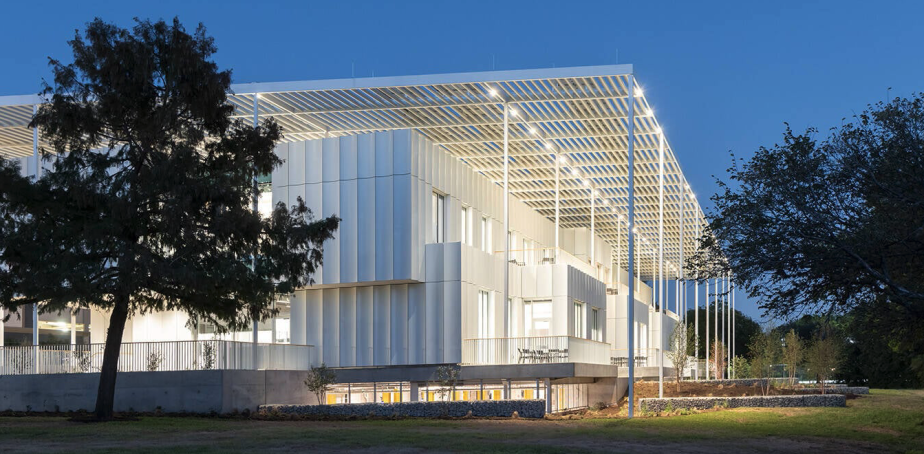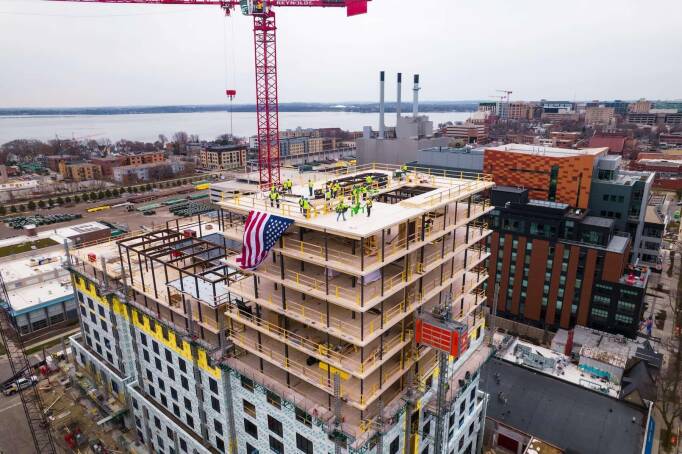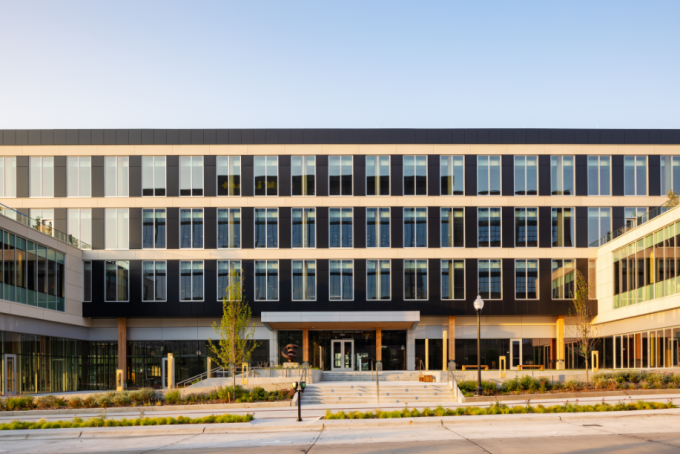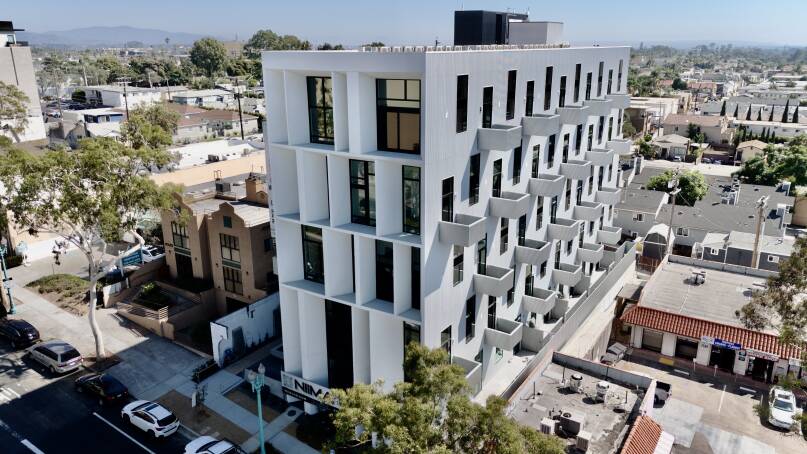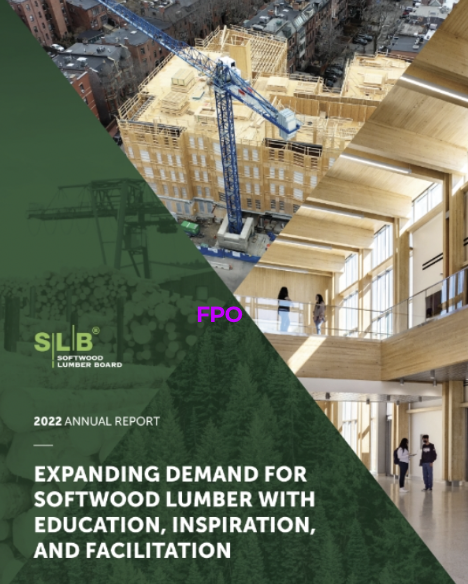
BOARD
& TEAM
FINANCIALS
EVENTS
FEATURED
PROJECTS
OPPORTUNITIES
PARTNERSHIPS
HYBRID CONSTRUCTION
PROGRAM
HIGHLIGHTS
SLB
HIGHLIGHTS
LETTERS

2024 HIGHLIGHTS
Since I first joined the board three years ago, I've been amazed by the industry knowledge and skills that the SLB staff brings to the table. They have a clear understanding of market trends and a strategy on where the industry’s investments can be the most impactful. That expertise stands out by the results.






Light-Frame
402 MM BF
Mass Timber
179 MM BF
Hybrid Light-Frame & Mass Timber
48 MM BF
BY FACILITATING WOOD USE,
PRODUCED A CARBON BENEFIT OF
3.8 MILLION METRIC TONS OF CO2.
OFFICIALS FROM SLB–FUNDED PROGRAMS.
resulting FROM SLB
INVESTMENTS SINCE 2012.
in programs leverages

is 86 BF/$1 Over the Lifetime of
the SLB from 2012–2024.
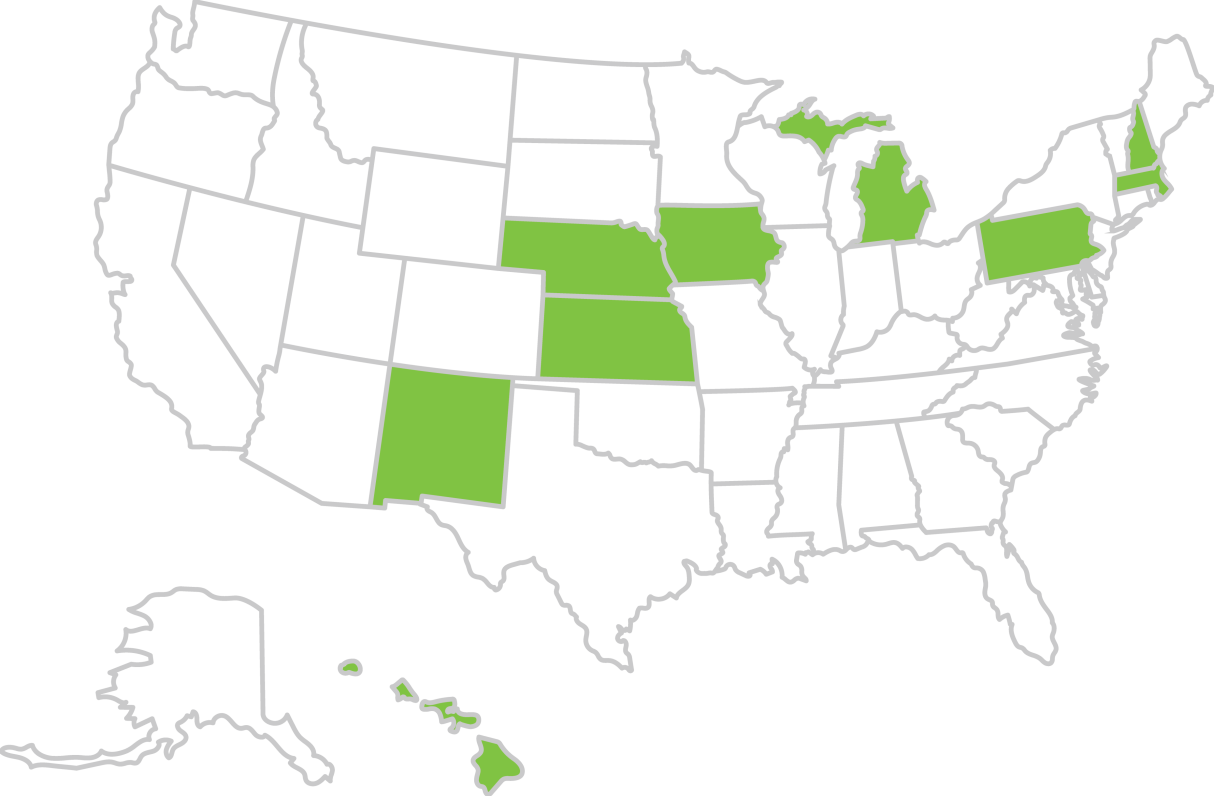
per building


build with wood
incremental lumber in 2024.
Leads produced
— a record.
specify wood systems
in the next 12 months.

users Say

Jérôme Pelletier, J.D. Irving Ltd., Vice President;
2025 SLB First Vice Chair, SLB Board of Directors

students and faculty at


It is with pride that I share with you the Softwood Lumber Board’s 2024 Annual Report. The SLB and its funded programs and initiatives had another productive year, delivering measurable impact for the industry by generating incremental softwood lumber demand and diversifying the market for wood construction.

The SLB and its funded programs—the American Wood Council (AWC), Think Wood, WoodWorks, and SLB Education—are putting the lumber industry in a stronger position than ever before. Despite a challenging market for multifamily and non-residential construction, the SLB delivered strong demand growth for the industry, generating 1.6 billion board feet of incremental demand in 2024.

Builders, developers, and architects are becoming increasingly positive about the environmental and economic benefits of wood construction, and the SLB is building on that momentum by removing obstacles and promoting using more wood in non-traditional applications. I'm proud of what we've achieved, but we need to continue building momentum. I look forward to seeing what the industry can accomplish by continuing to work together in the years ahead.




Brian Luoma, Board Chair
LETTERS FROM THE CHAIRS
Tree House, Faye + Walker Architecture,
Photo Credit: Leonid Furmansky
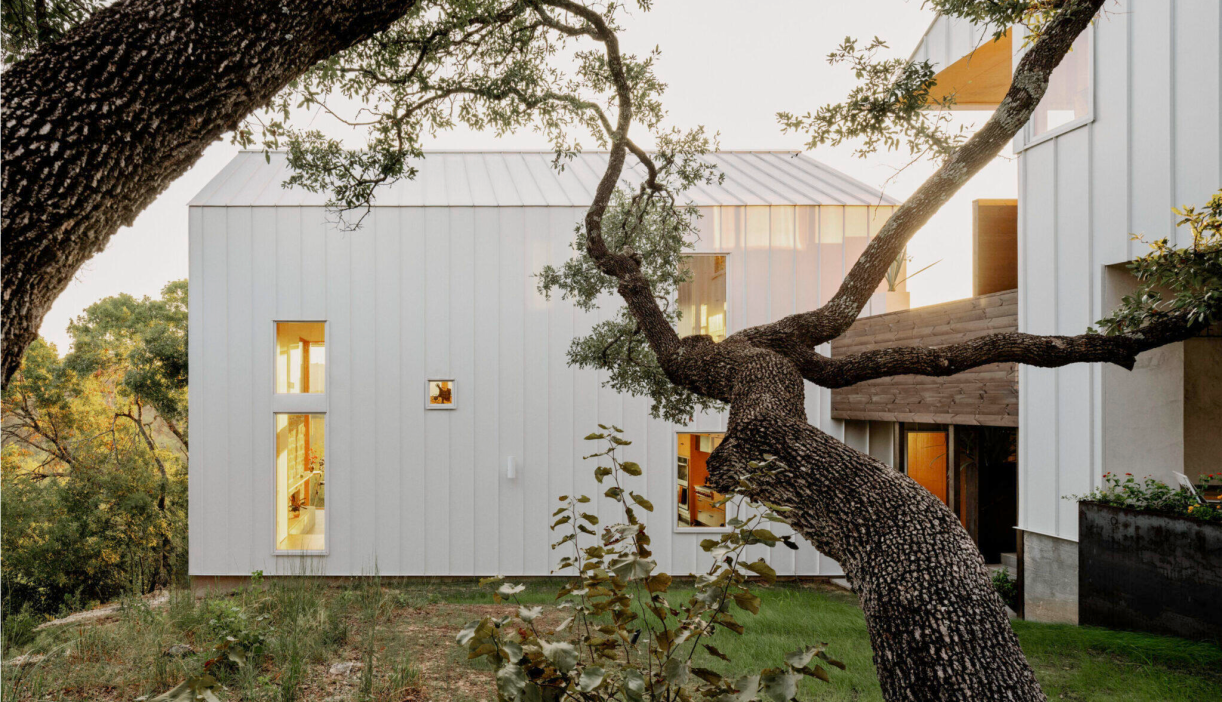
We see the SLB as a very efficient way to fund critical investments in growing new markets for softwood lumber and defending existing markets. The SLB’s programs are strategically aligned, working together to promote growth. WoodWorks’ role of converting projects to wood is supported by Think Wood’s marketing efforts and the AWC’s work in codes and standards. It’s critical that we continue to have a sustainable funding stream for these programs.
Fritz Mason, Georgia-Pacific President of Lumber;
2025 Chair, SLB Board of Directors








Humbird at Schweitzer, Skylab Architecture,
Photo Credit: Jeremy Bittermann
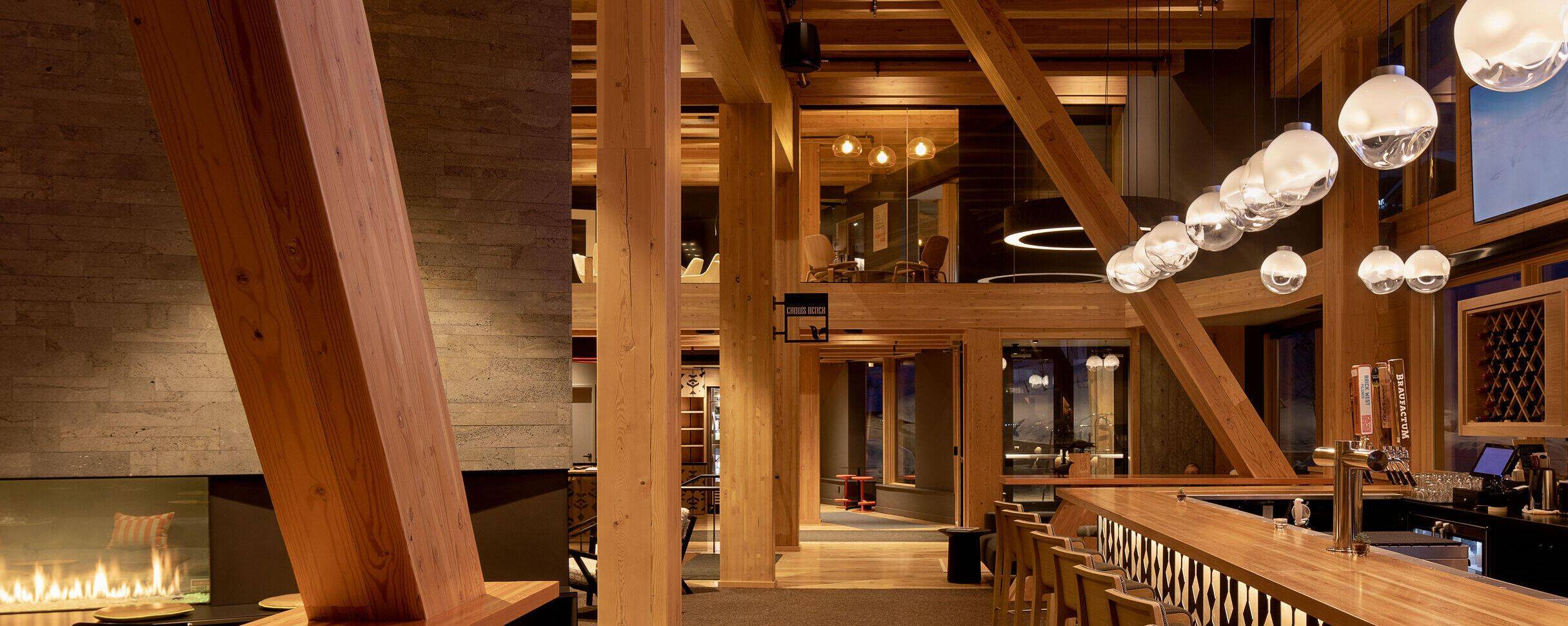
The SLB has done a great job growing the market for mass timber and tall wood construction. There’s a lot of lumber used in those technologies, so the push to get architects, engineers, and developers on board has been a top focus. The success has resulted from smart coordination by the AWC, the SLB, and the U.S. Endowment for Forestry and Communities getting mass timber approved in buildings up to 18 stories; WoodWorks working directly with design teams; and Think Wood promoting examples of wood’s performance and warmth in comparison with concrete and steel. I’m sure our company has sold more lumber because of these accomplishments, and the SLB’s work will continue to boost the entire lumber industry.
Tim Biewer, Biewer Lumber, President and CEO;
SLB Board of Directors







the lumber industry, with less than 5% of market share over the past six years.
Humbird at Schweitzer, Skylab;
Photo Credit: Jeremy Bittermann


Vesterheim Commons, Snøhetta, BNIM (AOR), Fast + Epp,
Photo Credit: Michael Grimm

Think Wood and WoodWorks are finding architects and structural engineers where they are and either adapting existing projects to use innovative wood technologies or from the very beginning using wood as the construction material. And that's very crucial to find folks where they are so that we can make it easy for them to use wood in the projects that they are going to be producing.




Trey Hankins, Hankins, Inc., CFO;
SLB Board of Directors


Wood’s Benefits

don’t default to concrete or steel because of contractors who haven’t worked with wood.
International Mass Timber Conference,
Photo Credit: Marcus Kauffman
11 E Lenox, Monte French Design Studio,
Photo Credit: Jane Messinger
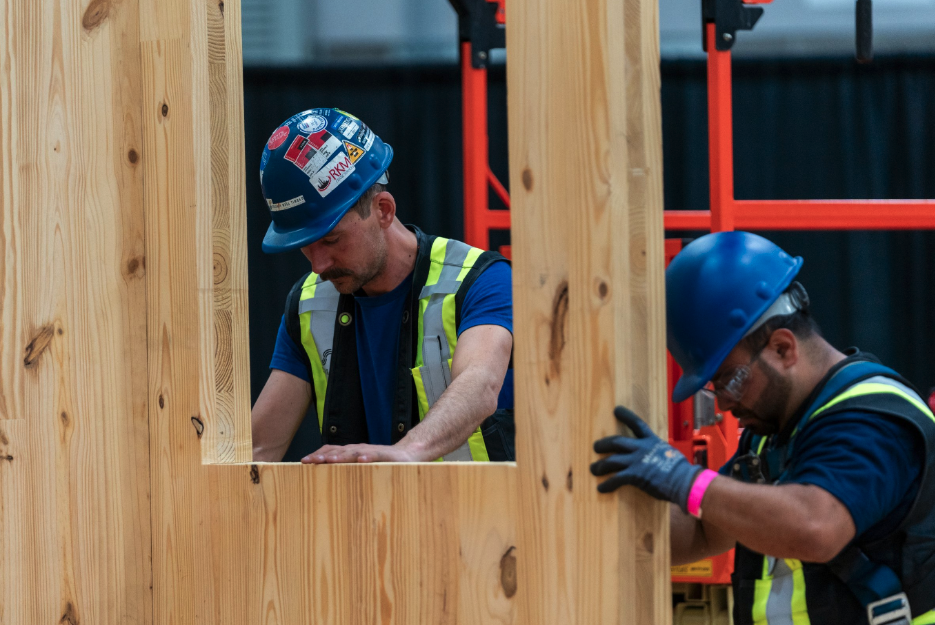





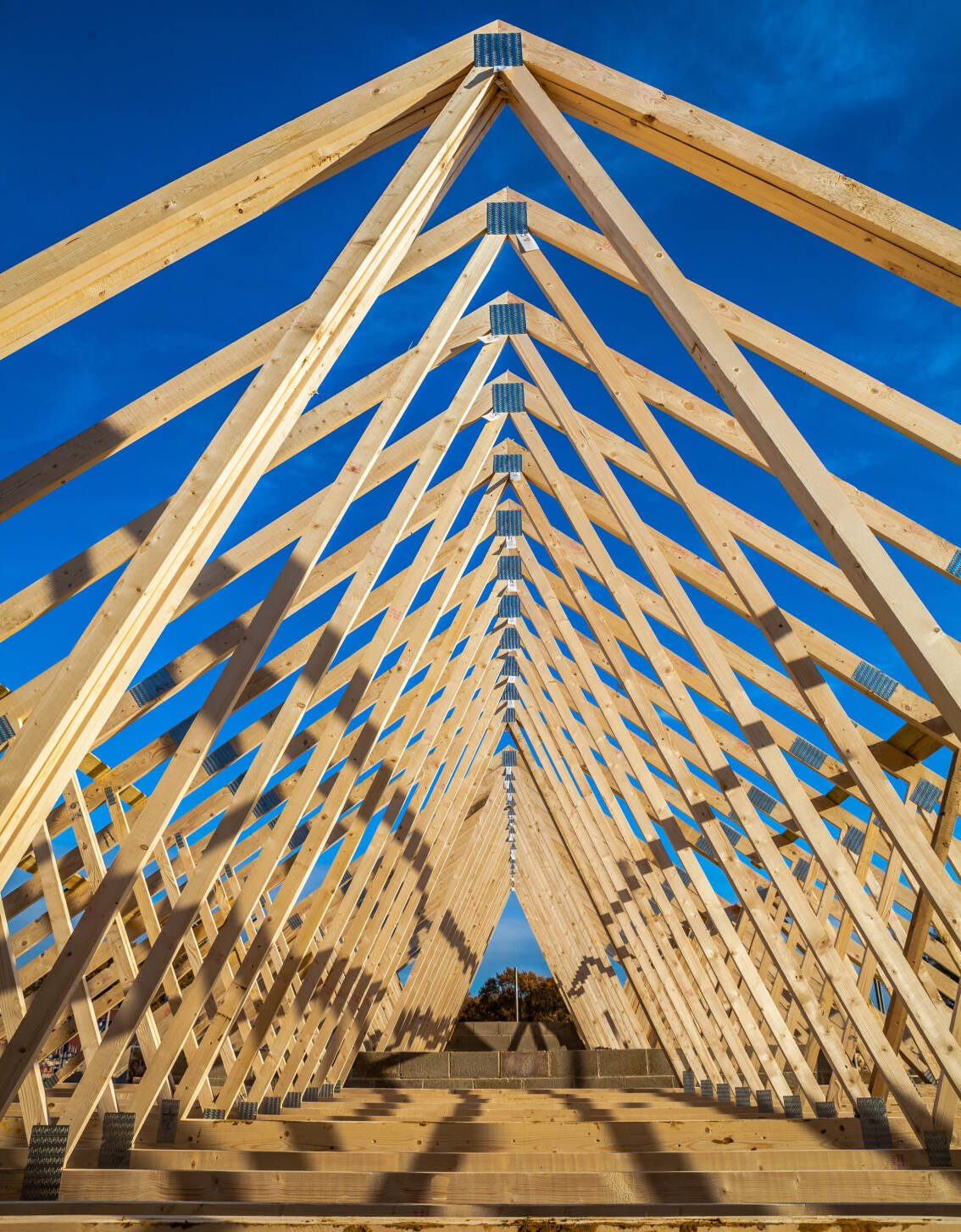

UCSC Kresge College, Studio Gang,
Photo Credit: Jason O'Rear
The results of an SLB audit show that 59% of architecture schools provide little to no exposure to wood design. How can we expect architects and engineers who haven't learned about how to design with wood to complete projects that include and specify wood? The SLB Education program is changing this through faculty workshops where instructors learn how to incorporate wood design education into their academic programs. In 2024, 100 faculty members from 80 schools attended five workshops across the U.S. Just think of how energized and knowledgeable these faculty members will be when they get back to the classrooms.




Ashlee Cribb, PotlatchDeltic, Wood Products Division, Vice President;
2025 SLB Second Vice Chair, SLB Board of Directors
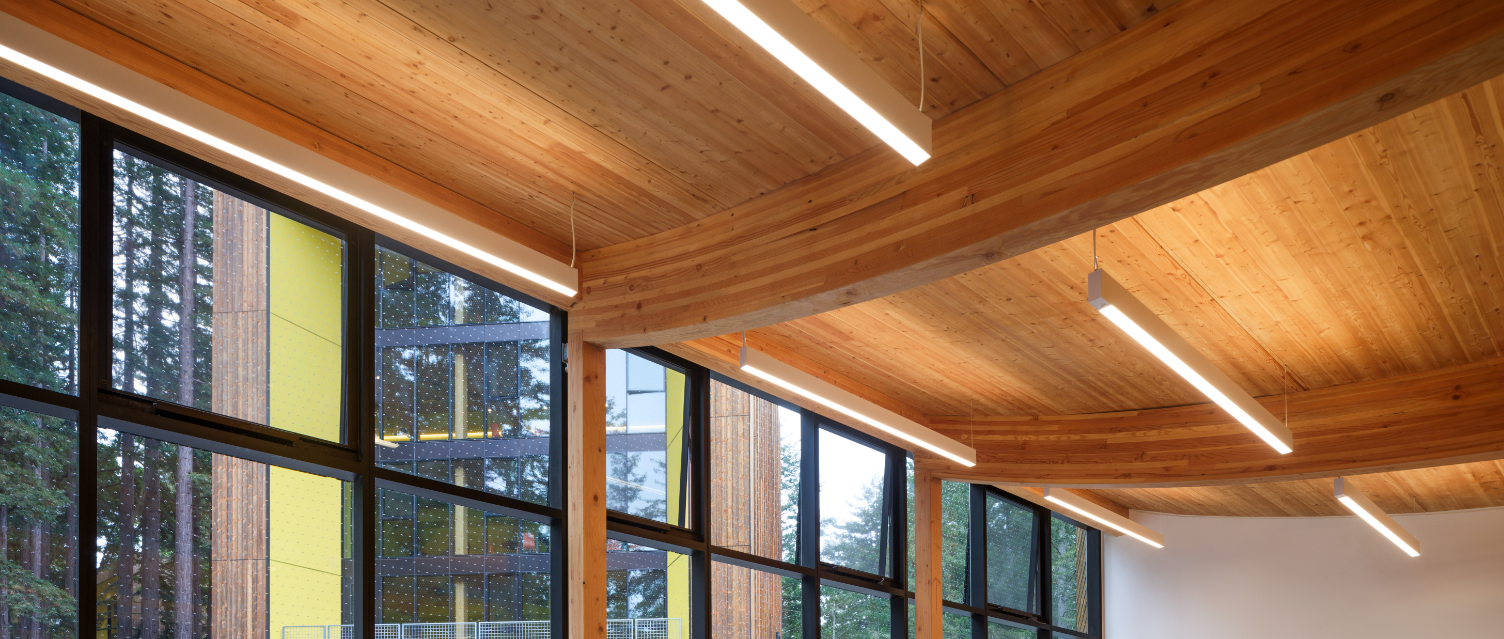
Hybrid Construction
This publication is a key step forward in understanding the full potential of steel‐timber hybrid structures in high‐rise buildings and clarifying the benefits of steel‐timber hybrid construction for the tall building industry.
Terrence Busuttil,
Director of constructsteel




(L-R) CTBUH CEO Francisco Javier Quintana de Uña; SLB CMO Ryan Flom; Kimberley Olson, Director of Construction Solutions at Nucor Corporation and Vice-Chair of constructsteel; SLB President & CEO Cees de Jager; and CTBUH Director, Research and Thought Leadership Daniel Safarik.
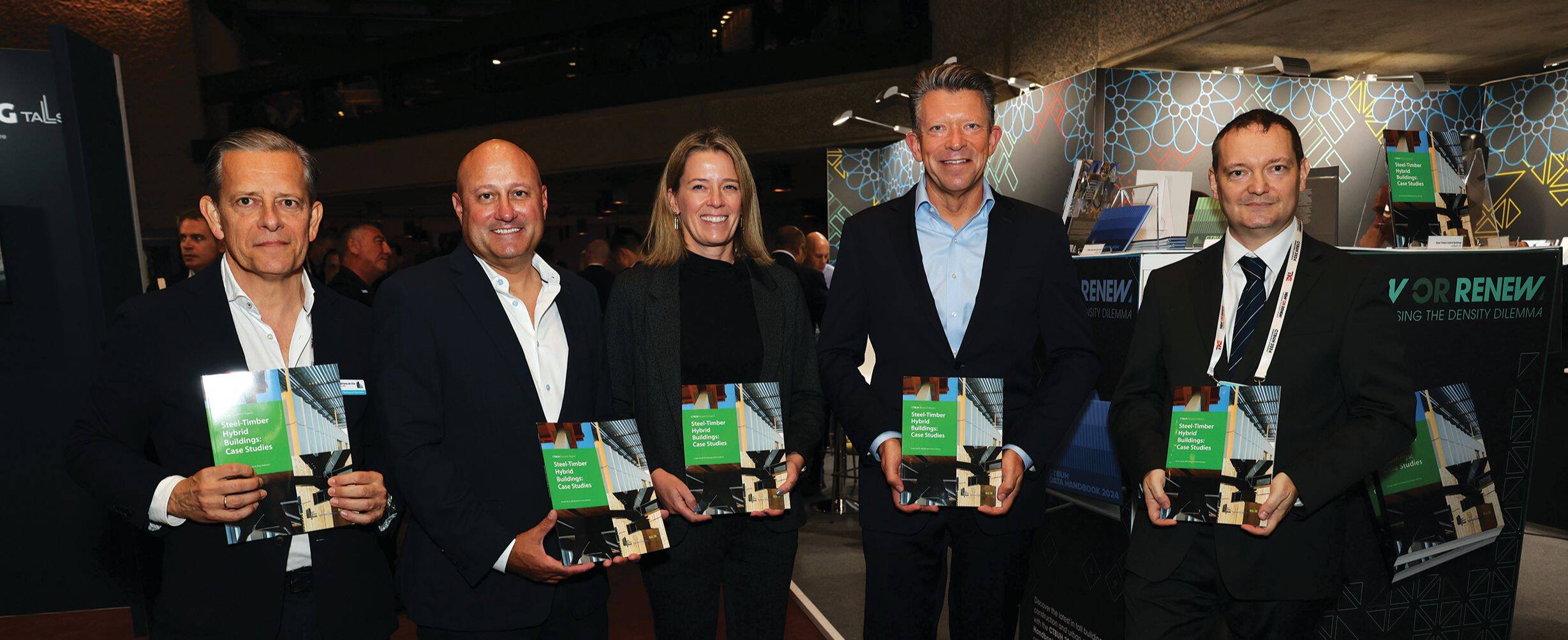
To advance the partnership and collaboration with the steel industry, SLB President & CEO Cees de Jager spoke in October at the constructsteel conference in Charlotte, North Carolina, about the opportunities for both industries to increase the use of steel-wood hybrid construction in the United States. Attended by top executives from leading steel manufacturers, the event provided an opportunity to strengthen the relationship between the two industries. As markets increasingly demand cost-effective, pragmatic solutions that reduce a building’s impact on the environment, steel and wood offer the best of both worlds: combining the sustainability of wood and the strength of steel.
Hybrid construction meets a market demand for
cost-effective, pragmatic design solutions that reduce
a building’s carbon impact.
Reaching the lumber industry’s vast market share potential will require growth of a variety of lumber-based and hybrid building systems, but steel-timber hybrid construction represents one of the greatest areas of opportunity. According to an analysis for the SLB by Forest Economic Advisors, steel structures with mass timber walls, such as warehouses, represent a potential annual volume of 607 MM BF, while steel post-and-beam projects with mass timber decking, an option for multifamily projects, represent 1.42 MM BF of annual opportunity.
The SLB has been working with the Council on Tall Buildings and Urban Habitat and constructsteel to unlock this opportunity, beginning by establishing the Steel-Timber Hybrid Buildings Conference in 2022. The partnership continued in 2024 with the launch of “Steel-Timber Hybrid Buildings: Case Studies,” a CTBUH research report funded by the SLB and constructsteel. The organizations celebrated the report’s release in September at the CTBUH2024 International Conference (pictured below).
Hybrid Construction
1 of 4


LEVER Architecture’s five-story-tall, 145,000-square-feet mixed-use project, built over an existing parking garage, uses structural steel columns and beams to maintain the original 30-feet-by-30-feet grid. CLT floors are exposed in both interior and exterior locations, revealing the beauty of the wood even from the surrounding streets. The lightweight structure allowed the team to avoid demolishing and completely rebuilding the existing concrete garage—a significant savings in embodied carbon.
843 N Spring St., LEVER Architecture, Photo Credit: Jeremy Bittermann
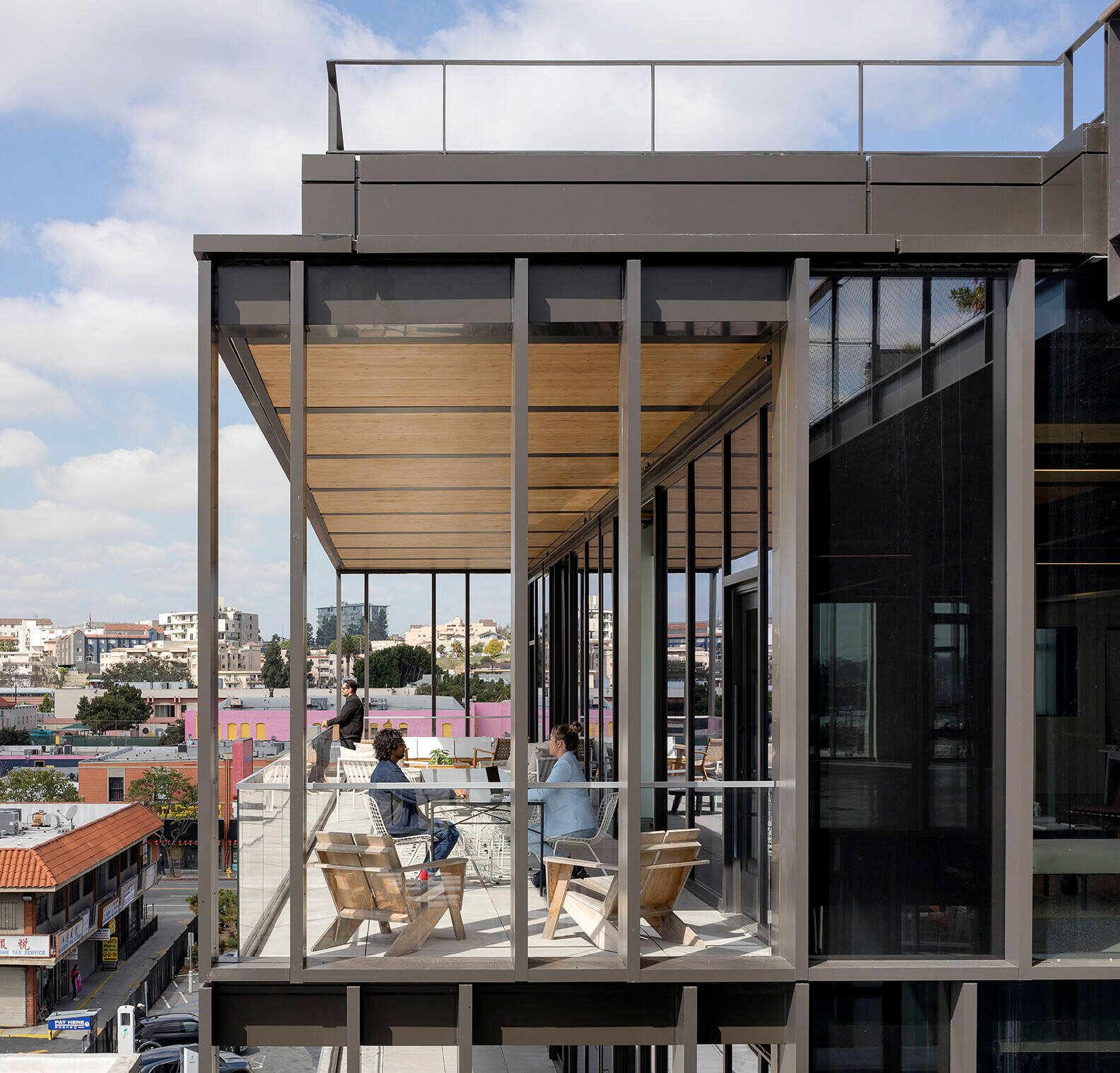
Growing awareness of the low-carbon benefits of mass timber and the material’s performance in
high-rise construction has inspired a new generation of mass timber-steel hybrid buildings that make
the most of each material’s capabilities. Structural steel’s robust span-to-depth ratio and mass timber’s beauty and biophilic benefits offer an appealing combination, especially for tall urban projects.
Here are a few examples of hybrid success stories.
PARTNERSHIPS
1500 Waters from Algoma in Savannah was one of three projects selected for the Georgia Mass Timber Accelerator. Photo Credit: Algoma
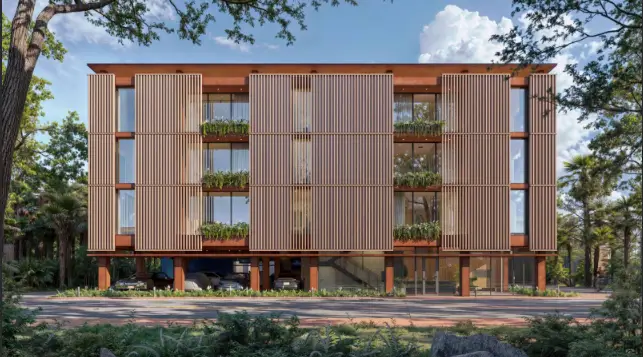
The Walter Gladwin Recreation Center in Tremont, Bronx, was an awardee of the NYC Mass Timber Studio. Rendering Credit: MARVEL.
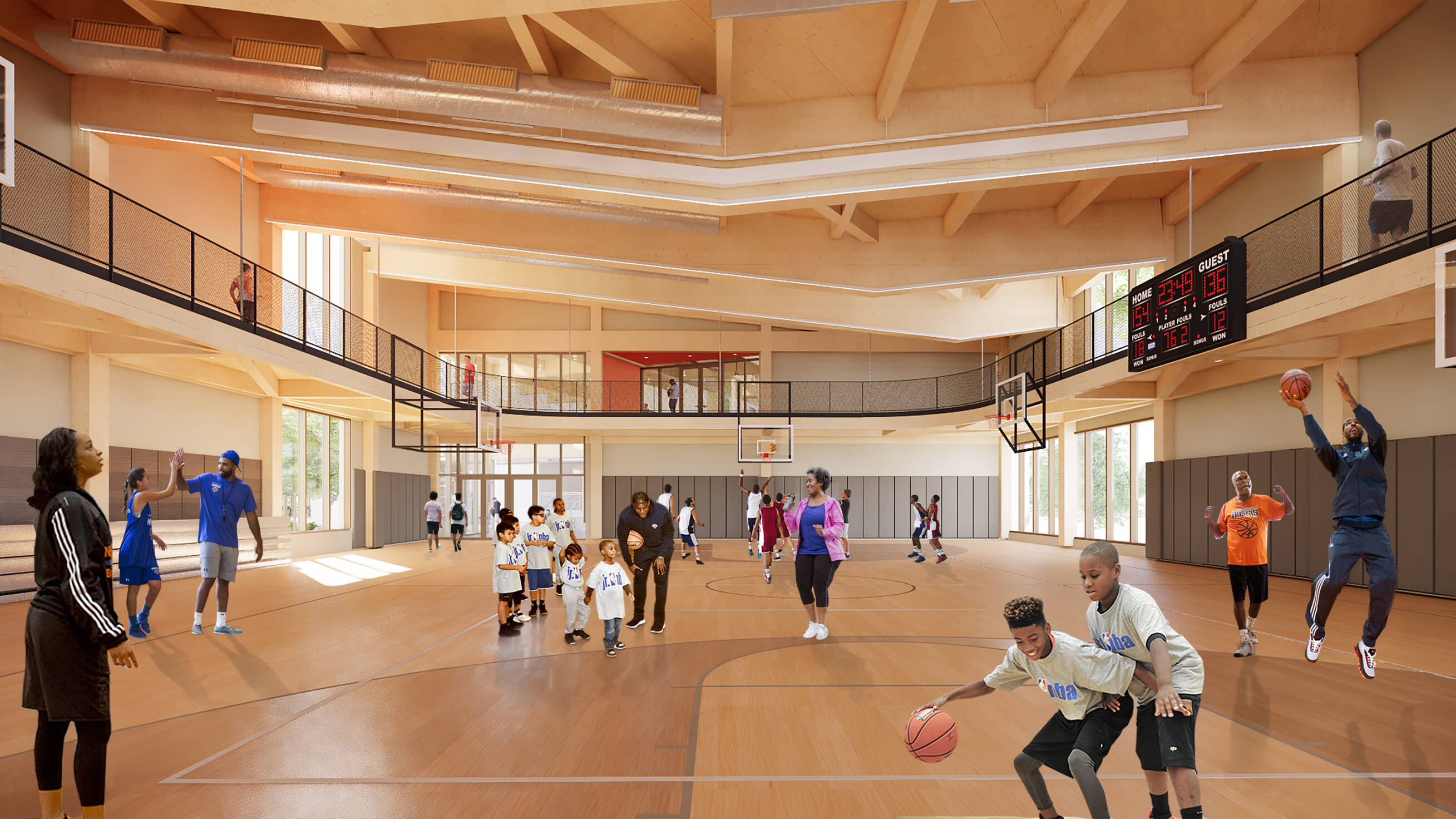
The Georgia Mass Timber Accelerator Program from the Georgia Forestry Foundation (GFF) has announced three selected projects: a four-story mixed-use expansion using mass timber over an existing steel masonry commercial building in Atlanta, a nature center in Roswell, and a four-story residential building in Savannah. Funds remain for a successive round and a new call for entries was issued in February 2025.
Meanwhile, the Boston Mass Timber Accelerator, launched in 2021, issued a final report finding that mass timber is accelerating in the city and region, with eight active projects totaling over 1.3 million sq. ft. projected to be constructed with mass timber materials. “Notably, two of the active projects with mass timber commitments are the initial buildings of much larger multi-building projects that will be built out over the next ten years,” the report says. “Boston’s future projects with mass timber commitments amount to 22 buildings totaling over 4.3 million sq. ft. of construction.”
With the success of the inaugural programs, the SLB expects to grow the accelerator program in 2025. Cities are invited to join this movement by applying for funding.
Mass timber accelerators in key regions remove market barriers and ensure maximum funding impact.
Working with jurisdictions, industry, and local governments,
SLB-supported mass timber accelerator initiatives are expanding opportunities for mass timber projects, removing barriers,
and streamlining code compliance in Boston, New York,
and Atlanta.
The accelerators use matching funds from the USDA Forest Service’s Wood Innovations Grants and other programs, amplifying the SLB’s $50,000 investment in each program to support a total project budget of $175,000 to $275,000 per market.
In early 2024, the New York City Economic Development Corporation (NYCEDC) announced the winning design teams for
its first-ever Mass Timber Studio, a technical assistance program designed to support active mass timber development projects in the early phases of project planning and design.
“Expanding the use of mass timber is a critical component to achieving New York City’s carbon reduction targets, including reducing embodied carbon emissions for new buildings, infrastructure, and major retrofits by 50 percent,” wrote the American Institute of Architects New York Chapter as part of an event presenting the seven projects receiving awards in the first phase of the program. The winning projects are four multifamily buildings, a mixed-use industrial space, a public library branch, and a recreation center. The Studio launched an entry period for a second cohort of projects in February 2025.
The Forest Service and the Softwood Lumber Board have had a productive partnership for many years, helping American lumber producers succeed by growing markets for wood products. A stronger U.S.-based supply chain for lumber products supports jobs in rural communities and improves the health of our forests, and I am looking forward to rolling up our sleeves and making this partnership stronger than ever.
Chris French
USDA Forest Service Associate Chief




The wood-built solar pergola at Evergreen Charter School, which is nearing completion of construction.
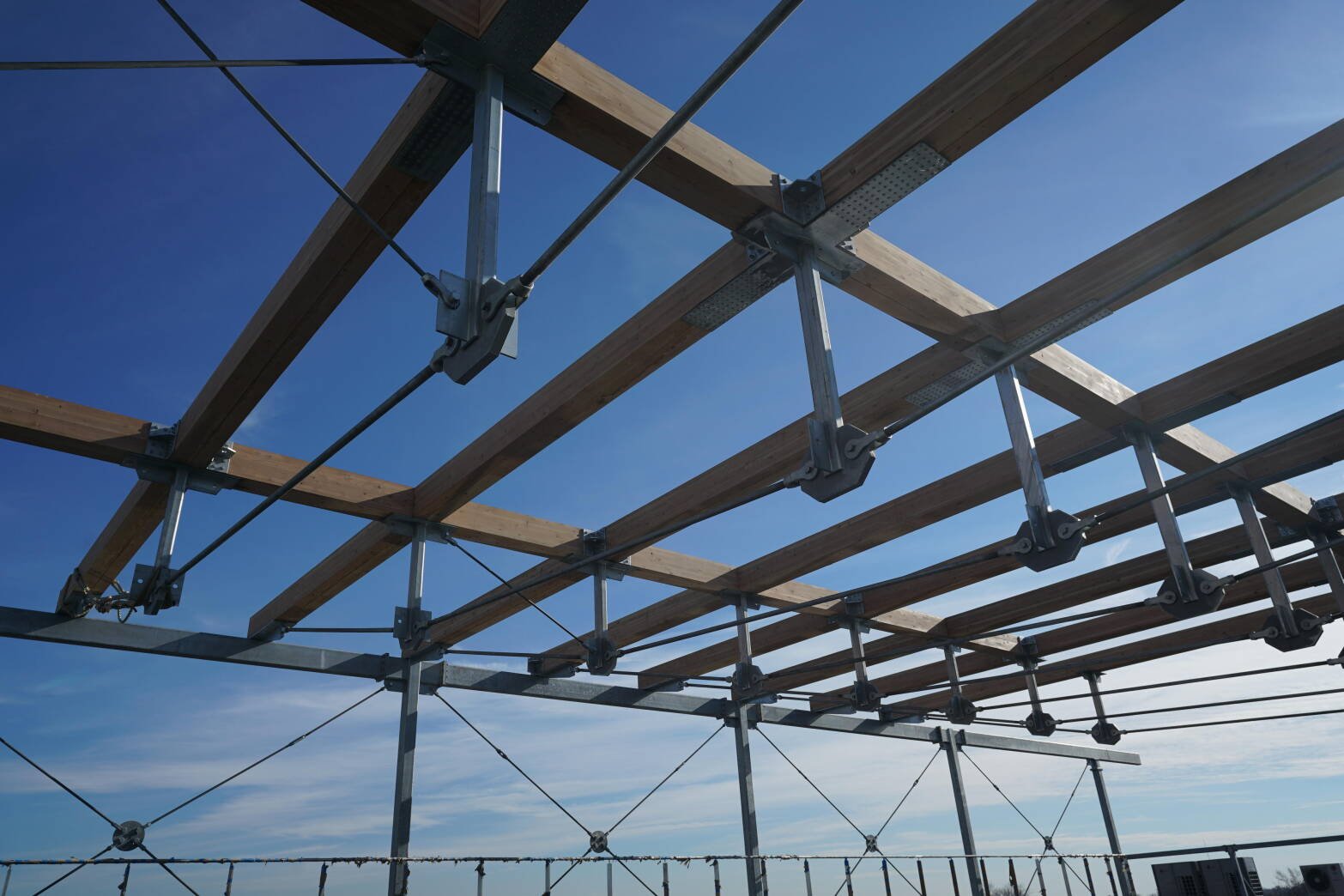
The Mass Timber Competition-winning Via Emma development broke ground in 2024.
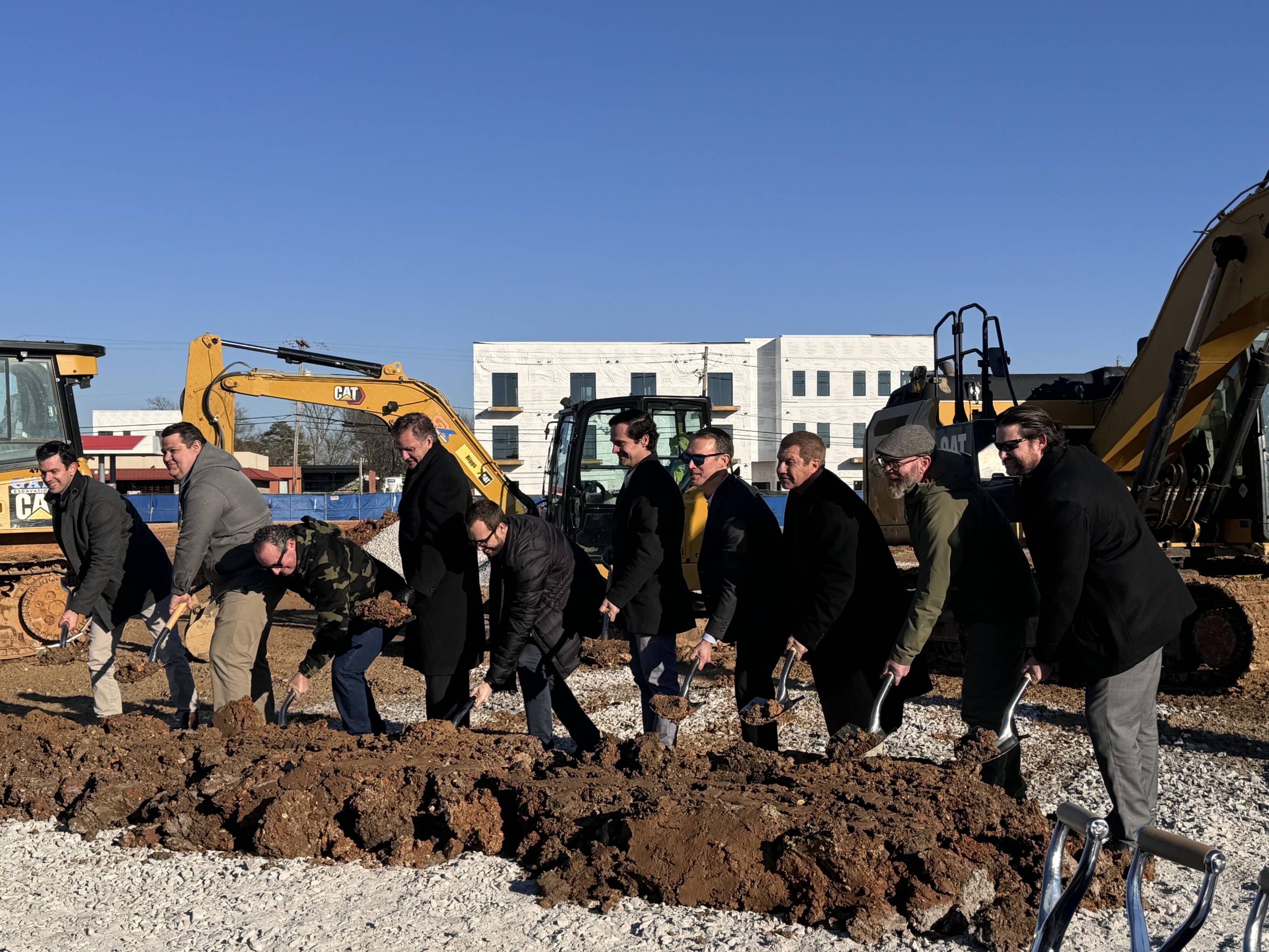
Several of these winning projects are making significant progress and generating valuable data and resources. Evergreen Charter School, a 2022 winner that was featured in a WoodWorks case study and site tour, is nearing completion, and the project’s designer, Martin Hopp Architects, will conduct a pre- and postoccupancy evaluation to measure the impact of the new building on the performance of its staff and students.
The 2023 Mass Timber Competition–winning Via Emma development in Springdale, Arkansas, broke ground in 2024.
The workforce housing project was recognized for how it grapples with the affordable housing shortage by using mass timber alongside wood-frame and prefabricated construction. “The Mass Timber Competition award gave us a venue to develop our thinking even more,” says Fouad Khalil, principal of Modly, the industrialized construction consultancy that partnered on the project with real estate developer Blue Crane. “It allowed us to set our horizon further on things we can do next.”
Looking ahead, the SLB and USDA Forest Service are turning their focus to K-12 education because of the large opportunity for lumber demand growth in this subsector. The USDA Forest Service has also supported Wood Innovation Grants that advance the use of lumber in high-rise projects as well as buildings with exposed timber or protective design needs.
The USDA Forest Service has contributed key funding to SLB
core programs Think Wood, WoodWorks, and the AWC. The SLB and USDA Forest Service have jointly funded WoodWorks, and the USDA Forest Service has also provided major grants to the AWC, as well as $775,000 over the last two years for Think Wood. These investments show how the SLB’s work leads to impactful public-private partnerships to
grow demand for lumber.
The agency is a key partner on the Mass Timber
Competition and other SLB-led programs that expand
the market for lumber.
Since forming an alliance through a memorandum of understanding in 2015, then a second MOU that expanded the partnership in 2021, the SLB and the USDA Forest Service have jointly funded a variety of projects to increase the market for lumber by showcasing inspirational projects and innovative wood building designs. Intended to expand the use of mass timber in the United States, the 2022 and 2023 Mass Timber Competition: Building to Net-Zero Carbon programs awarded support to several projects that highlight mass timber’s application, practicality, commercial viability, and ability to reduce the carbon footprint of the built environment. The Mass Timber Competitions have disbursed a total of $1.78 million to help project teams overcome barriers to using a new building material and system.
OPPORTUNITIES
The Mass Timber Insurance Playbook helps developers, designers, and insurers resolve challenges that impact the insurability of mass timber buildings.
Mississippi Workshop, Waechter Architecture, Photo Credit: Laura Swimmer
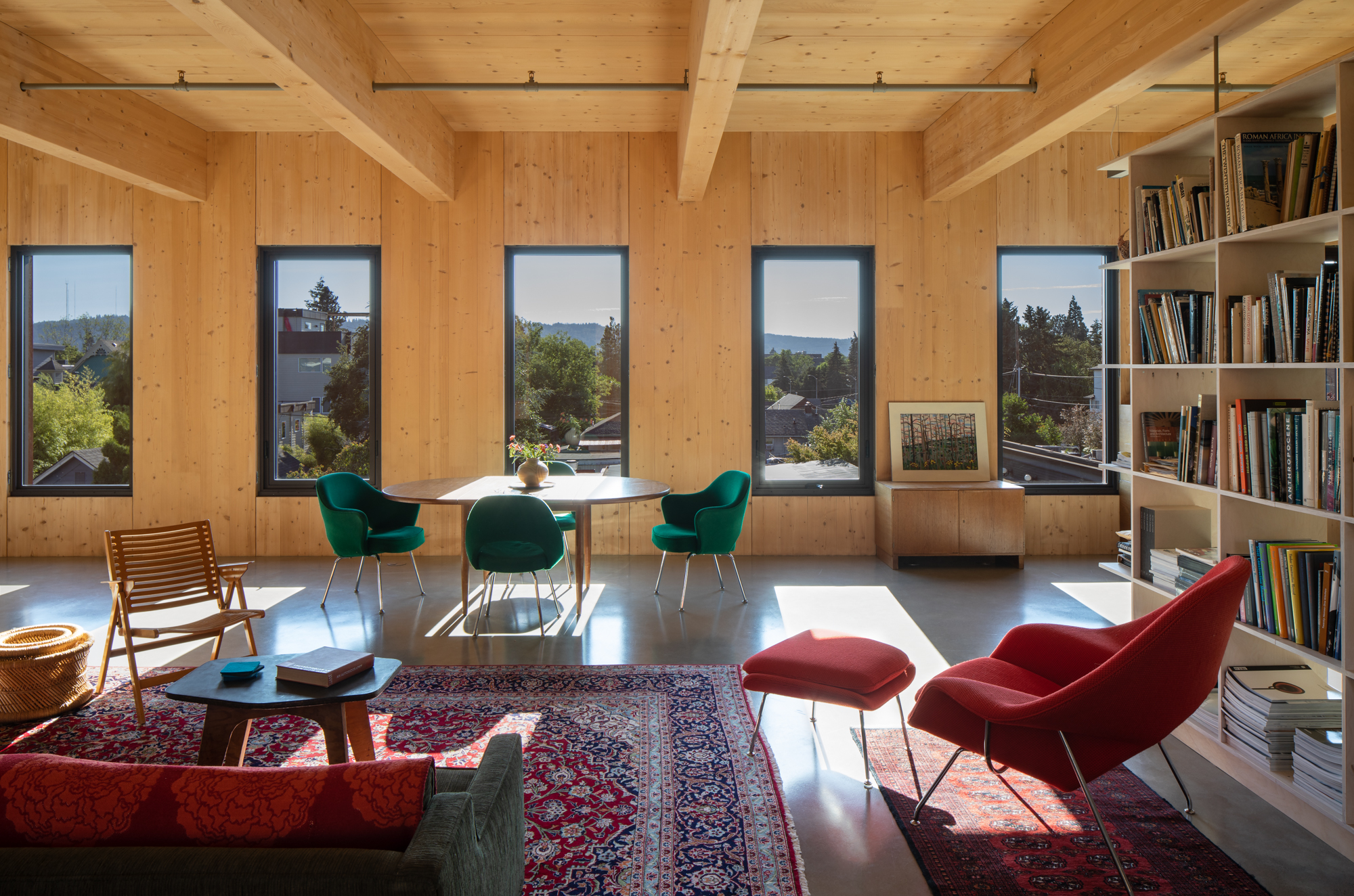
“Adapting the Mass Timber Insurance Playbook is part of our commitment to helping address challenges related to innovative wood buildings in the U.S.,” said WoodWorks President and CEO Jennifer Cover. “Dodge data shows that, in 2023, more than 1 billion square feet of new construction could have been built using sustainable wood materials by code—and wasn’t. This represents a significant opportunity to reduce the carbon impact of the built environment.”
While not a guarantee, adhering to the principles in the playbook should help project teams achieve the best pricing, terms, and conditions available in the current insurance market.
“Even an experienced project team will do well to engineer risk out of mass timber structures and be prepared to communicate with insurers on their own terms,” says Mike Hastings of M.D. Hastings Risk Consulting, who adapted the U.S. edition. “Going forward, establishing the Mass Timber Insurance Playbook as an essential text with worldwide variations will accelerate the learning curve among all parties involved in securing insurance for mass timber projects, in all geographies.”
The resource helps developers, design teams, and insurers work together to improve the cost-effective insurability of mass timber buildings.
With November’s release of the Mass Timber Insurance Playbook – U.S. Edition, WoodWorks is addressing a challenge many teams experience on their mass timber projects. While materials such as CLT are becoming more mainstream across the country, they do not yet have a history of loss data that allows insurers to accurately assess risk. They’re also relatively new in the U.S. market, and insurance professionals who have never insured a mass timber project are often reluctant to do so. The playbook is intended to support project teams seeking insurance, as well as the insurance industry as it develops knowledge and data in this space.
The U.S. edition was adapted from the original Mass Timber Insurance Playbook developed by insurance and building resilience specialists in the United Kingdom in partnership with the Alliance for Sustainable Building Products. It gives developers, design/construction professionals, and insurers a framework for working together to resolve challenges that affect the insurability of mass timber buildings, making it easier to bring more of these projects to fruition.
EVENTS
International Builders' Show
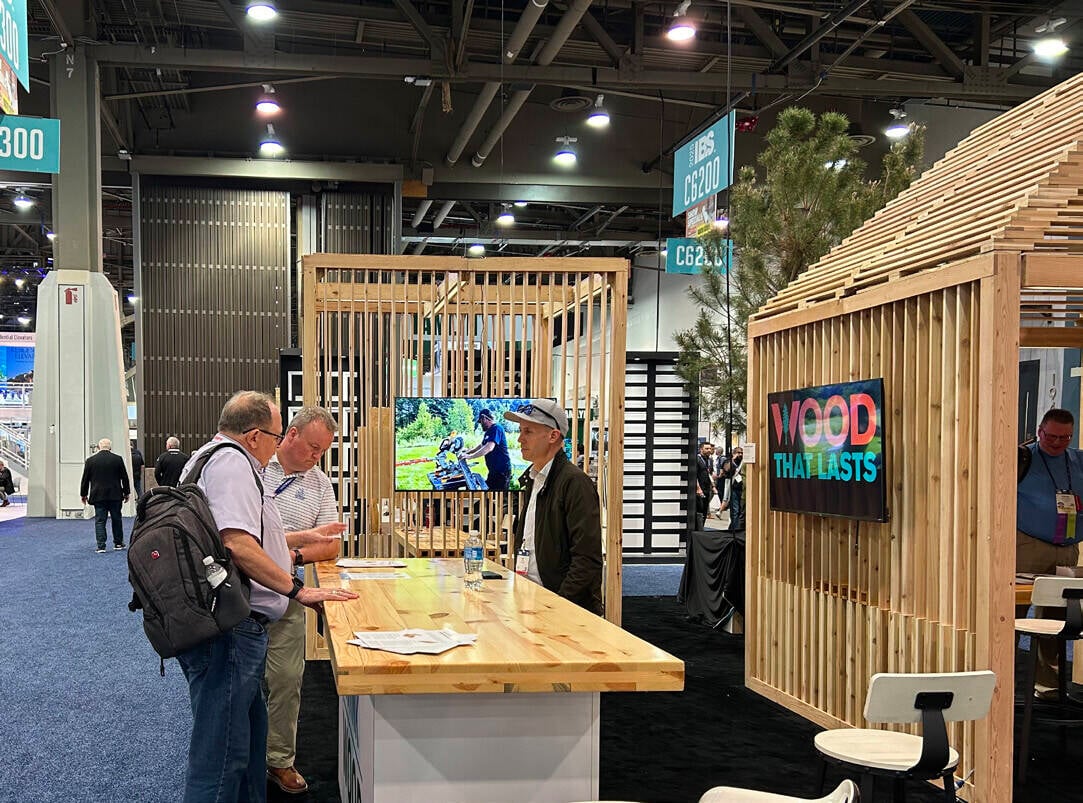
Think Wood complemented WoodWorks’ role at the Mass Timber Conference with a booth promoting Think Wood’s educational resources, allowing design professionals to continue their own wood education path. Think Wood also joined forces with several industry association partners at the International Builders’ Show, JLC Live, and the AIA Conference on Architecture with a new trade show experience to highlight the benefits of wood in single-family construction and remodeling. The new flexibility of Think Wood’s booth setup allowed for additional partners to have a presence, including the Southern Forest Products Association (SFPA), the Western Red Cedar Lumber Association (WRCLA),
the Northeastern Lumber Manufacturers Association (NeLMA), the Western Wood Preservers Institute (WWPI), the Western Wood Products Association (WWPA), and new to this year’s show, the Cedar Shake and Shingle Bureau.
Together, the SLB’s funded programs maximize the productivity and efficiency of live events, extending
reach and complementing expertise.
For the second year, WoodWorks co-hosted the Mass Timber+ conference with Forest Economic Advisors. The event was held in conjunction with Greenbuild, allowing WoodWorks to reach a broad audience of AEC professionals engaged with carbon topics. Mass Timber+ sessions focused on mass timber design, modular construction, mass timber insurance, engineering innovations, and embodied carbon—an important topic to the Greenbuild audience. WoodWorks organized and participated in a panel on biogenic carbon accounting and was also part of an embodied carbon session. Being given the opportunity to speak at Greenbuild demonstrates the design industry’s awareness of WoodWorks’ expertise in this area.
In September, the AWC and WoodWorks co-hosted their first-ever NYC Climate Week event. The event featured an introduction to mass timber, a panel discussion on the entirety of mass timber’s life cycle, and concluded with a networking reception. The event proved to be a success, with more than 80 attendees in person and online. Hosting Climate Week is an example of the AWC’s lead role in ensuring that wood products are properly recognized for their low embodied carbon and significant stored biogenic carbon benefits.
WoodWorks continues to co-produce the International Mass Timber Conference, leading the education programming for
the country’s largest gathering of mass timber professionals
and presenting several sessions to help close the gap in available information and expand the number of practitioners capable of realizing successful wood buildings. In 2025, WoodWorks will have a more engaged role in programming the conference’s developer track.
featured projects
1 of 4


Structural Engineer Yasir Al-Lebban attended several WoodWorks webinars on engineering topics related to light-frame wood construction before contacting WoodWorks with an issue at Elan Crown Point, a six-building, 315-unit residential complex west of Orlando. Al-Lebban had design questions related to the building’s blocked open front diaphragms and gabled roof section. WoodWorks provided a detailed response, supported with several sections of the relevant standard, and several code checks for open front diaphragms and their relevant references. Developed by Greystar, the largest multifamily developer in the United States, the 300,000-square-foot project is now under construction as part of the Crown Point Village mixed-use community near downtown Orlando.
Elan Crown Point, Rendering Credit: Greystar, Wire Development
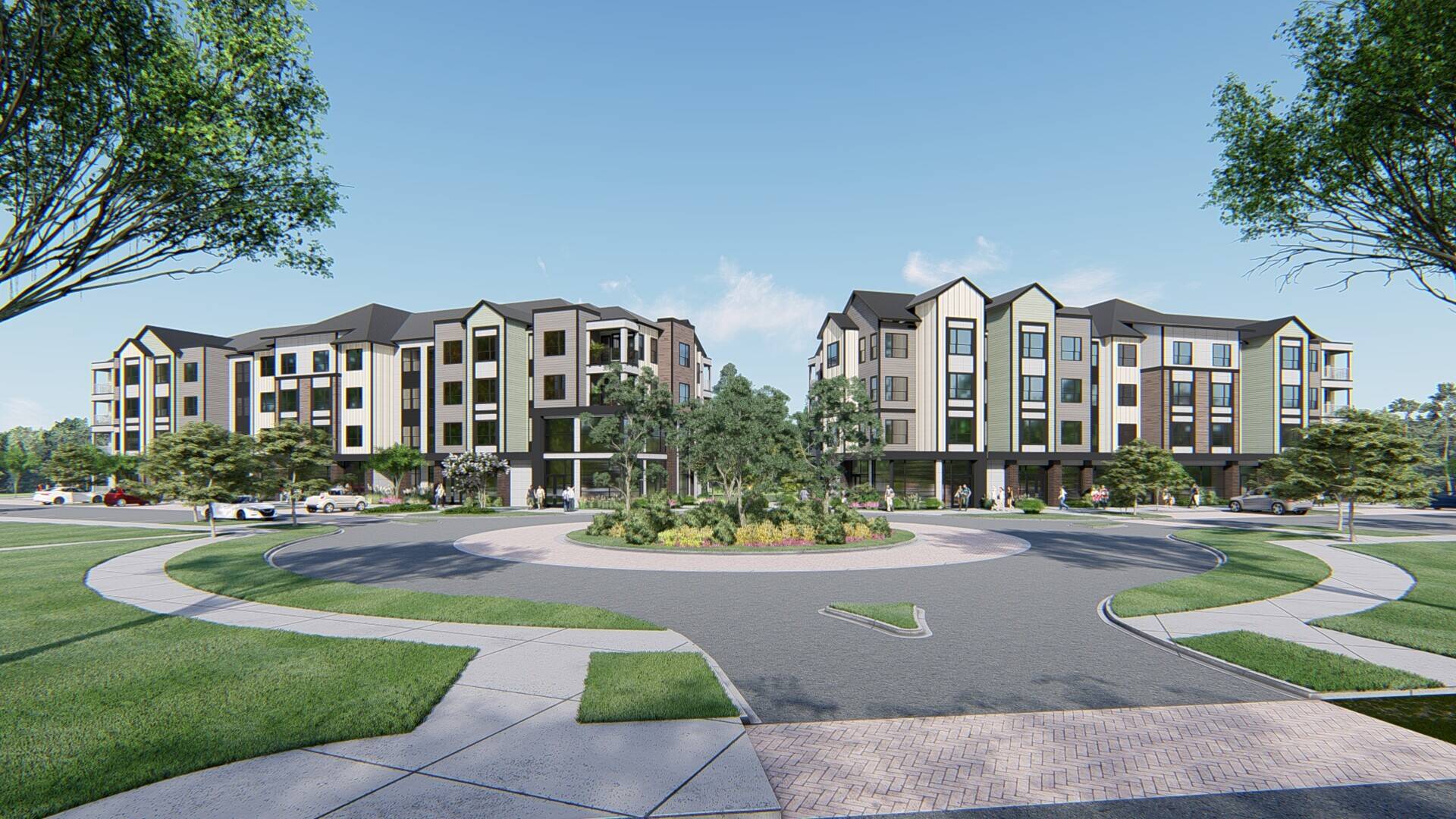
These WoodWorks-assisted projects showcase growth sectors for wood construction with light-frame, mass timber, and hybrid systems in markets across the country.
financials

BOARD FEET

annual softwood lumber use from
2020-2024 would have been 3.5% lower.

16.1%
$2,934,000
Communications
25.8%
$4,698,584
Code
31.1%
$5,661,000
Conversion
4.1%
$745,000
Industry Relations
3.0%
$541,000
Applied Research
1.1%
$200,000
Public-Private Partnerships
7.1%
$1,289,000
Education
1.1%
$200,000
Government Fees
8.0%
$1,448,277
Administration
$500,000
Working Forest Campaign
2.7%

The SLB team has been a careful steward of the industry’s funds while making smart
investments to grow the market share for lumber. Through the SLB’s investment and support of WoodWorks, the AWC, Education, and Think Wood, we continue to see return on our investment: Every dollar invested in the SLB generated 82 board feet of incremental demand. By supporting the SLB, its programs, and its partnerships with like-minded wood industry organizations, the lumber industry can continue to build on our momentum.
Jim Neiman, Neiman Enterprises, President & CEO;
Treasurer, SLB Board of Directors




Lee
Education
Think Wood
Marketing and
Communications
Operations
Flom






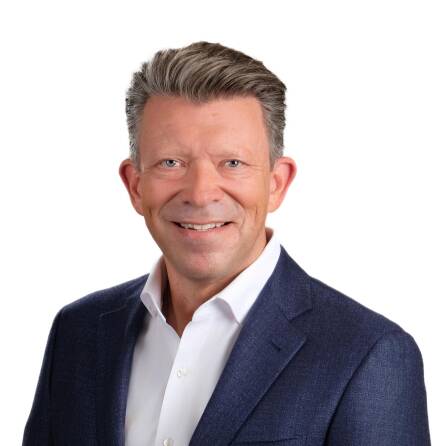
*2024 Executive Committee Members
Vice President

President & CEO

Former President
& CEO
Ferris*

President & CEO
Biewer

Trading Group
Former CEO
Johnston
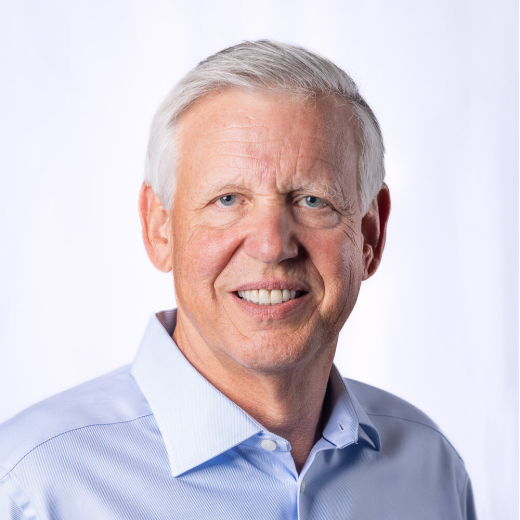
President & CEO
Neiman*
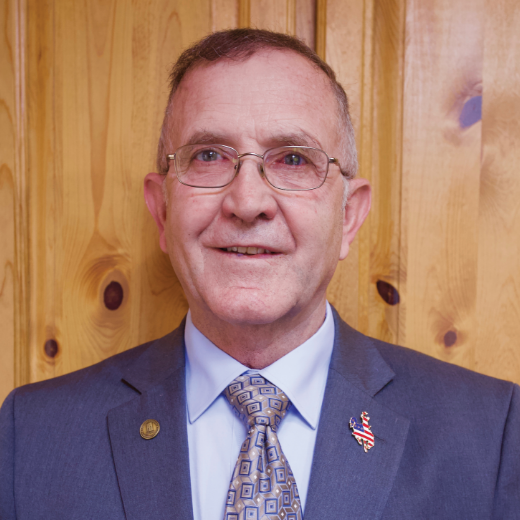
President
(Chair Emeritus)
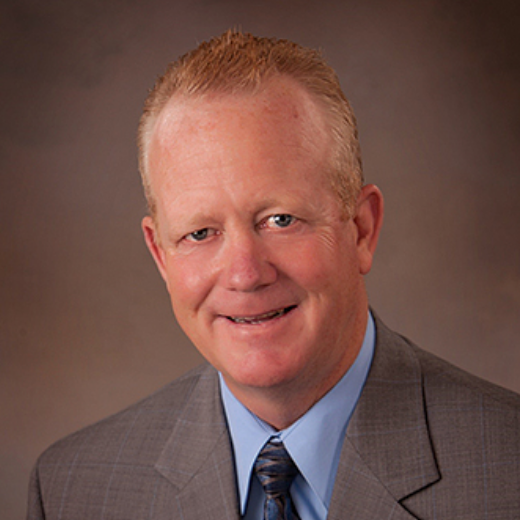
Vice President of
Wood Products
Cribb
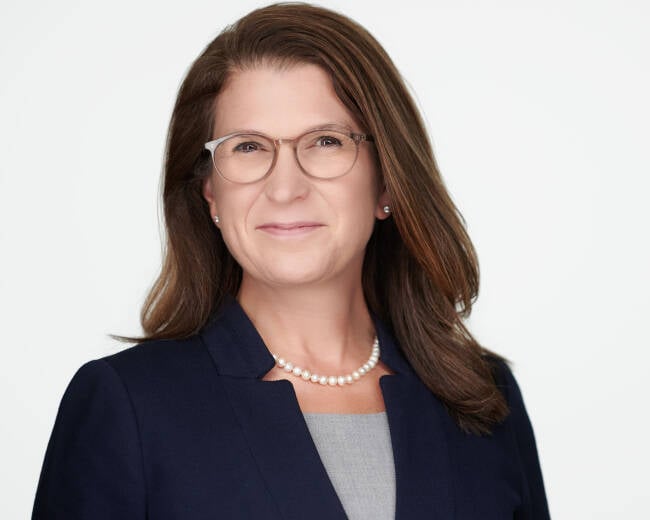
(Chair Emeritus)
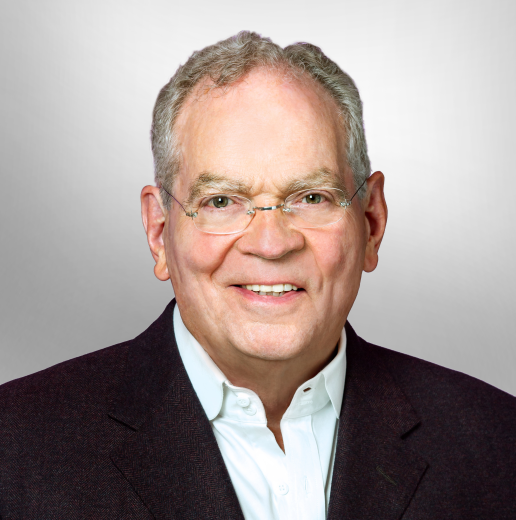
President & CEO
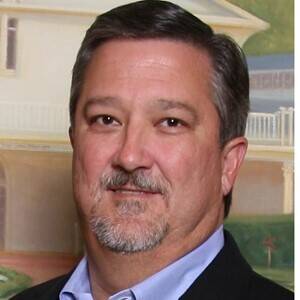
Senior Vice President
of Wood Products
O’Rear
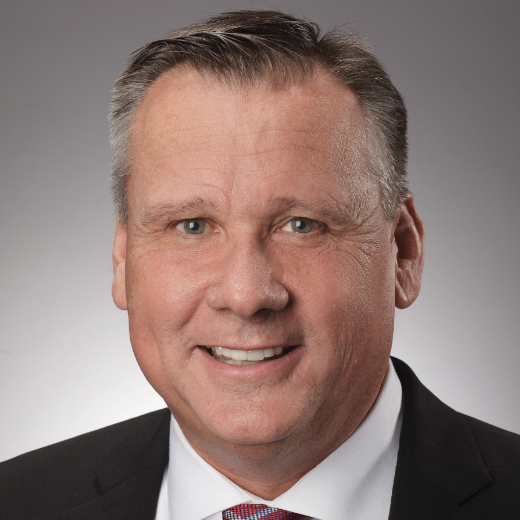
Former President
(Chair)
Luoma*

Owner
Hankins*
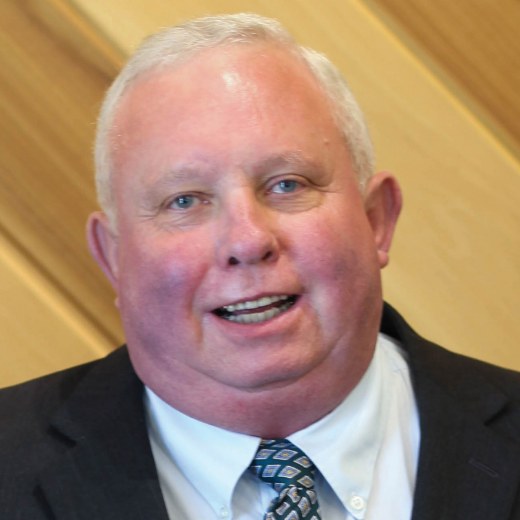
President of Lumber
Mason
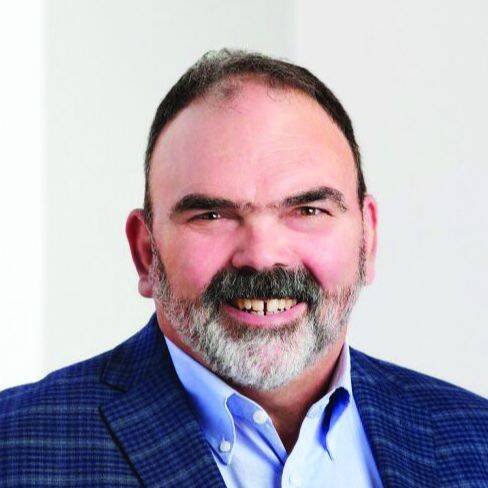
Executive: Caroline Dauzat, Rex Lumber, Chair Emeritus, Ex-Officio; Jack Jordan, Jordan Lumber & Supply, Chair Emeritus, Ex-Officio;
Don Kayne, Canfor, Program Chair Emeritus, Ex-Officio
Finance: Furman Brodie, Charles Ingram Lumber Co.; Susan Coulombe, J.D. Irving, Ltd; Ian Fillinger, Interfor;
Alden Robbins, Robbins Lumber
IR&G: Todd Payne, Sierra Pacific Industries
If you'd like a printed version of the Annual Report mailed to you,
please email info@softwoodlumberboard.org. *For Industry Members Only
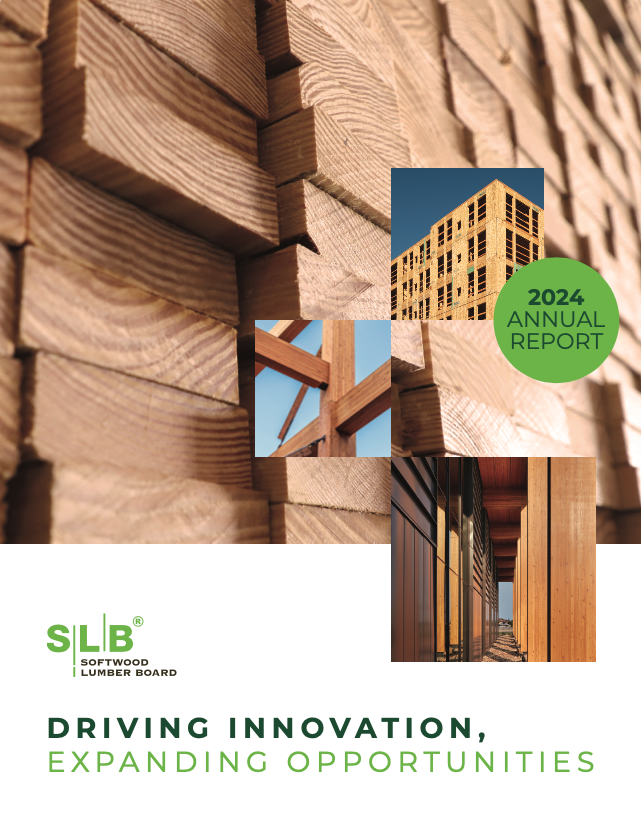



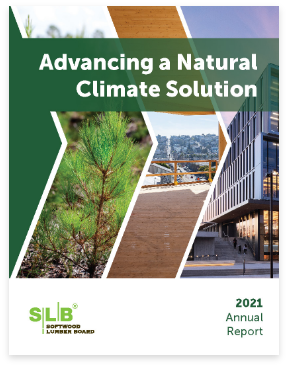





Light-Frame
402 MM BF
Mass Timber
179 MM BF
Hybrid Light-Frame
& Mass Timber
48 MM BF
Jérôme Pelletier, J.D. Irving Ltd., Vice President;
2025 SLB First Vice Chair, SLB Board of Directors




Since I first joined the board three years ago, I've been amazed by the industry knowledge and skills that the SLB staff brings to the table. They have a clear understanding of market trends and a strategy on where the industry’s investments can be the most impactful. That expertise stands out by the results.


Leads produced
— a record.
users Say
in the next 12 months.

of incremental lumber in 2024.

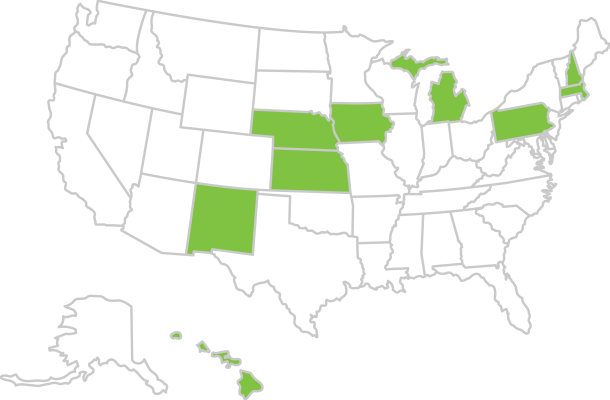

Over the Lifetime of the SLB from 2012–2024.
FROM SLB INVESTMENTS.

RESULTING FROM SLB
INVESTMENTS SINCE 2012.
in programs leverages

BY FACILITATING WOOD USE, PRODUCED A CARBON BENEFIT OF
3.8 MILLION METRIC TONS OF CO2.
2024 HIGHLIGHTS
Builders, developers, and architects are becoming increasingly positive about the environmental and economic benefits of wood construction, and the SLB is building on that momentum by removing obstacles and promoting using more wood in non-traditional applications. I'm proud of what we've achieved, but we need to continue building momentum. I look forward to seeing what the industry can accomplish by continuing to work together in the years ahead.




Brian Luoma, Board Chair
The SLB and its funded programs—the American Wood Council (AWC), Think Wood, WoodWorks, and SLB Education—are putting the lumber industry in a stronger position than ever before. Despite a challenging market for multifamily and non-residential construction, the SLB delivered strong demand growth for the industry, generating 1.6 billion board feet of incremental demand in 2024.
It is with pride that I share with you the Softwood Lumber Board’s 2024 Annual Report. The SLB and its funded programs and initiatives had another productive year, delivering measurable impact for the industry by generating incremental softwood lumber demand and diversifying the market for wood construction.
Humbird at Schweitzer, Skylab Architecture,
Photo Credit: Jeremy Bittermann

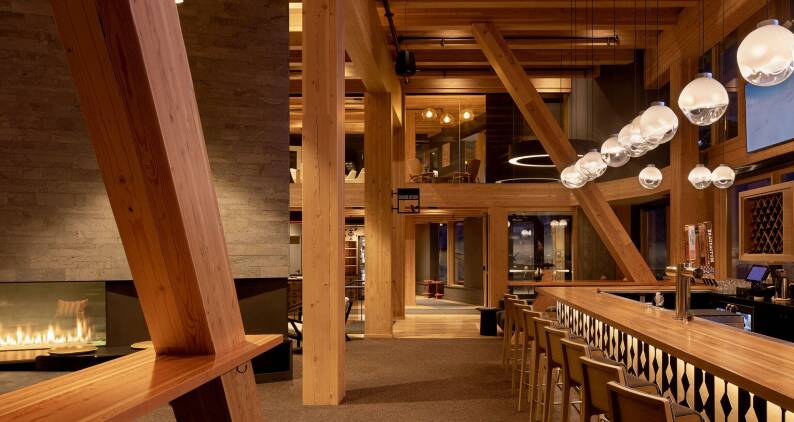

Use in WUI Regions


Fritz Mason, Georgia-Pacific President of Lumber;
2025 Chair, SLB Board of Directors
We see the SLB as a very efficient way to fund critical investments in growing new markets for softwood lumber and defending existing markets. The SLB’s programs are strategically aligned, working together to promote growth. WoodWorks’ role of converting projects to wood is supported by Think Wood’s marketing efforts and the AWC’s work in codes and standards. It’s critical that we continue to have a sustainable funding stream for these programs.




Vesterheim Commons, Snøhetta, BNIM (AOR), Fast + Epp, Photo Credit: Michael Grimm





Benefits in High-Growth School Construction Sector
Tim Biewer, Biewer Lumber, President and CEO;
SLB Board of Directors
The SLB has done a great job growing the market for mass timber and tall wood construction. There’s a lot of lumber used in those technologies, so the push to get architects, engineers, and developers on board has been a top focus. The success has resulted from smart coordination by the AWC, the SLB, and the U.S. Endowment for Forestry and Communities getting mass timber approved in buildings up to 18 stories; WoodWorks working directly with design teams; and Think Wood promoting examples of wood’s performance and warmth in comparison with concrete and steel. I’m sure our company has sold more lumber because of these accomplishments, and the SLB’s work will continue to boost the entire
lumber industry.




11 E Lenox, Monte French Design Studio,
Photo Credit: Jane Messinger




Trey Hankins, Hankins, Inc., CFO;
SLB Board of Directors
Think Wood and WoodWorks are finding architects and structural engineers where they are and either adapting existing projects to use innovative wood technologies or from the very beginning using wood as the construction material. And that's very crucial to find folks where they are so that we can make it easy for them to use wood in the projects that they are going to be producing.




UCSC Kresge College, Studio Gang,
Photo Credit: Jason O'Rear

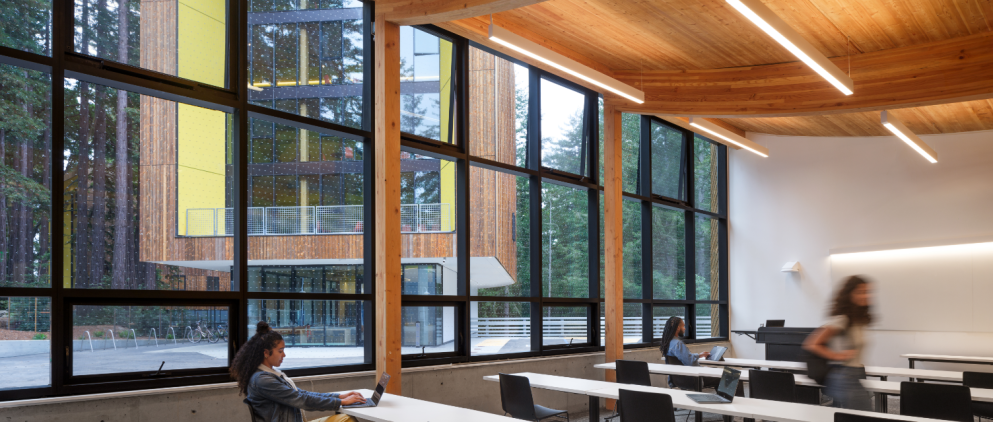



Stunning Growth
Ashlee Cribb, PotlatchDeltic, Wood Products Division, Vice President; 2025 SLB Second Vice Chair,
SLB Board of Directors
The results of an SLB audit show that 59% of architecture schools provide little to no exposure to wood design. How can we expect architects and engineers who haven't learned about how to design with wood to complete projects that include and specify wood? The SLB Education program is changing this through faculty workshops where instructors learn how to incorporate wood design education into their academic programs. In 2024, 100 faculty members from 80 schools attended five workshops across the U.S. Just think of how energized and knowledgeable these faculty members will be when they get back to the classrooms.




Terrence Busuttil,
Director of constructsteel
This publication is a key step forward in understanding the full potential of steel‐timber hybrid structures in high‐rise buildings and clarifying the benefits of steel‐timber hybrid construction for the tall building industry.




(L-R) CTBUH CEO Francisco Javier Quintana de Uña; SLB CMO Ryan Flom; Kimberley Olson, Director of Construction Solutions at Nucor Corporation and Vice-Chair of constructsteel; SLB President & CEO Cees de Jager; and CTBUH Director, Research and Thought Leadership Daniel Safarik.
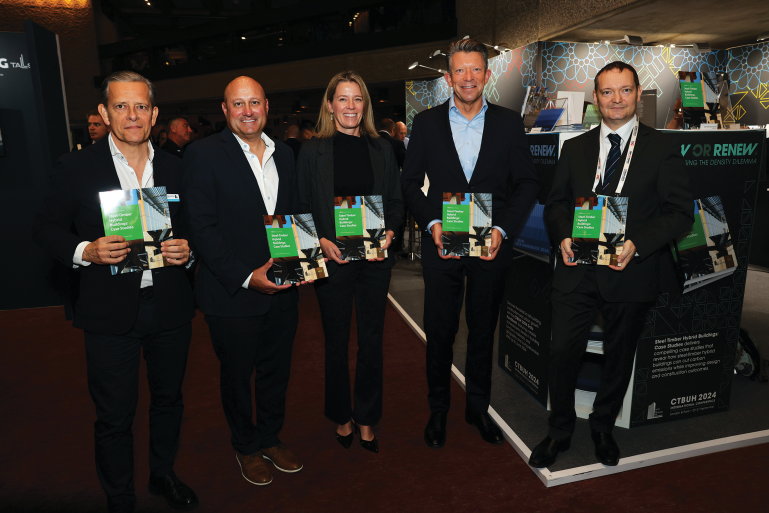
Hybrid construction meets a market demand for cost-effective, pragmatic design solutions that reduce a building’s carbon impact.
To advance the partnership and collaboration with the steel industry, SLB President & CEO Cees de Jager spoke in October at the constructsteel conference in Charlotte, North Carolina, about the opportunities for both industries to increase the use of steel-wood hybrid construction in the United States. Attended by top executives from leading steel manufacturers, the event provided an opportunity to strengthen the relationship between the two industries. As markets increasingly demand cost-effective, pragmatic solutions that reduce a building’s impact on the environment, steel and wood offer the best of both worlds: combining the sustainability of wood and the strength of steel.
Reaching the lumber industry’s vast market share potential will require growth of a variety of lumber-based and hybrid building systems, but steel-timber hybrid construction represents one of the greatest areas of opportunity. According to an analysis for the SLB by Forest Economic Advisors, steel structures with mass timber walls, such as warehouses, represent a potential annual volume of 607 MM BF, while steel post-and-beam projects with mass timber decking, an option for multifamily projects, represent 1.42 MM BF of annual opportunity.
The SLB has been working with the Council on Tall Buildings and Urban Habitat and constructsteel to unlock this opportunity, beginning by establishing the Steel-Timber Hybrid Buildings Conference in 2022. The partnership continued in 2024 with the launch of “Steel-Timber Hybrid Buildings: Case Studies,” a CTBUH research report funded by the SLB and constructsteel. The organizations celebrated the report’s release in September at the CTBUH2024 International Conference (pictured below).
Steel-Timber Hybrid Construction
843 N Spring St., LEVER Architecture, Photo Credit: Jeremy Bittermann
1 of 4


LEVER Architecture’s five-story-tall, 145,000-square-feet mixed-use project, built over an existing parking garage, uses structural steel columns and beams to maintain the original 30-feet-by-30-feet grid. CLT floors are exposed in both interior and exterior locations, revealing the beauty of the wood even from the surrounding streets. The lightweight structure allowed the team to avoid demolishing and completely rebuilding the existing concrete garage—a significant savings in embodied carbon.
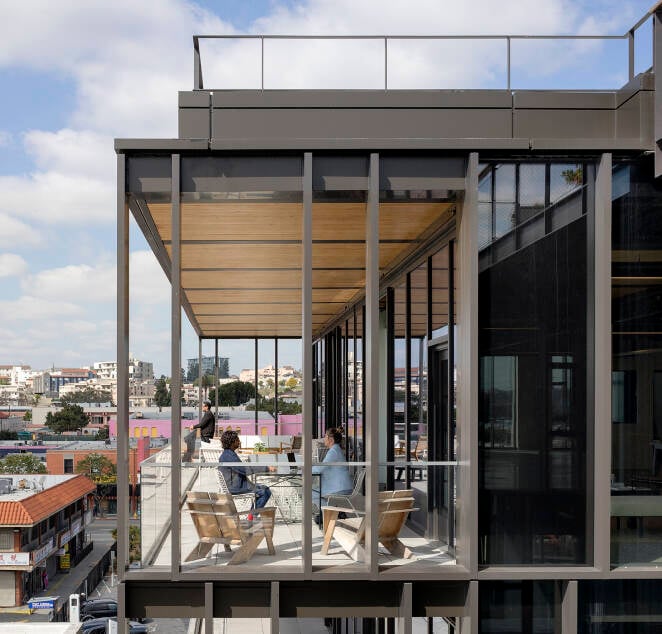
Growing awareness of the low-carbon benefits of mass timber and the material’s performance in
high-rise construction has inspired a new generation of mass timber-steel hybrid buildings that make the most of each material’s capabilities. Structural steel’s robust span-to-depth ratio and mass timber’s beauty and biophilic benefits offer an appealing combination, especially for tall urban projects. Here are a few examples of hybrid success stories.
Pair Strength and Sustainability
The Walter Gladwin Recreation Center in Tremont, Bronx, was an awardee of the NYC Mass Timber Studio. Rendering Credit: MARVEL.
1500 Waters from Algoma in Savannah was one of three projects selected for the Georgia Mass Timber Accelerator. Photo Credit: Algoma

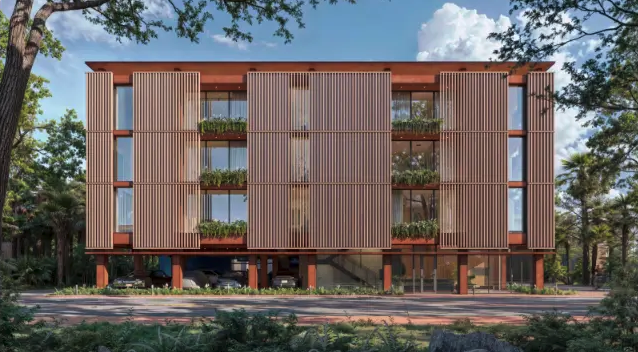
Mass timber accelerators in key regions remove market barriers and ensure maximum funding impact.
The Georgia Mass Timber Accelerator Program from the Georgia Forestry Foundation (GFF) has announced three selected projects: a four-story mixed-use expansion using mass timber over an existing steel masonry commercial building in Atlanta, a nature center in Roswell, and a four-story residential building in Savannah. Funds remain for a successive round and a new call for entries was issued in February 2025.
Meanwhile, the Boston Mass Timber Accelerator, launched in 2021, issued a final report finding that mass timber is accelerating in the city and region, with eight active projects totaling over 1.3 million sq. ft. projected to be constructed with mass timber materials. “Notably, two of the active projects with mass timber commitments are the initial buildings of much larger multi-building projects that will be built out over the next ten years,” the report says. “Boston’s future projects with mass timber commitments amount to 22 buildings totaling over 4.3 million sq. ft. of construction.”
With the success of the inaugural programs, the SLB expects to grow the accelerator program in 2025. Cities are invited to join this movement by applying for funding.
Working with jurisdictions, industry, and local governments, SLB-supported mass timber accelerator initiatives are expanding opportunities for mass timber projects, removing barriers, and streamlining code compliance in Boston, New York,
and Atlanta.
The accelerators use matching funds from the USDA Forest Service’s Wood Innovations Grants and other programs, amplifying the SLB’s $50,000 investment in each program to support a total project budget of $175,000 to $275,000 per market.
In early 2024, the New York City Economic Development Corporation (NYCEDC) announced the winning design teams for its first-ever Mass Timber Studio, a technical assistance program designed to support active mass timber development projects in the early phases of project planning and design.
“Expanding the use of mass timber is a critical component to achieving New York City’s carbon reduction targets, including reducing embodied carbon emissions for new buildings, infrastructure, and major retrofits by 50 percent,” wrote the American Institute of Architects New York Chapter as part of an event presenting the seven projects receiving awards in the first phase of the program. The winning projects are four multifamily buildings, a mixed-use industrial space, a public library branch, and a recreation center. The Studio launched an entry period for a second cohort of projects in February 2025.
Help Drive Market Growth
Chris French
USDA Forest Service Associate Chief
The Forest Service and the Softwood Lumber Board have had a productive partnership for many years, helping American lumber producers succeed by growing markets for wood products. A stronger U.S.-based supply chain for lumber products supports jobs in rural communities and improves the health of our forests, and I am looking forward to rolling up our sleeves and making this partnership stronger than ever.




The Mass Timber Competition-winning Via Emma development broke ground in 2024.
The wood-built solar pergola at Evergreen Charter School, which is nearing completion of construction.
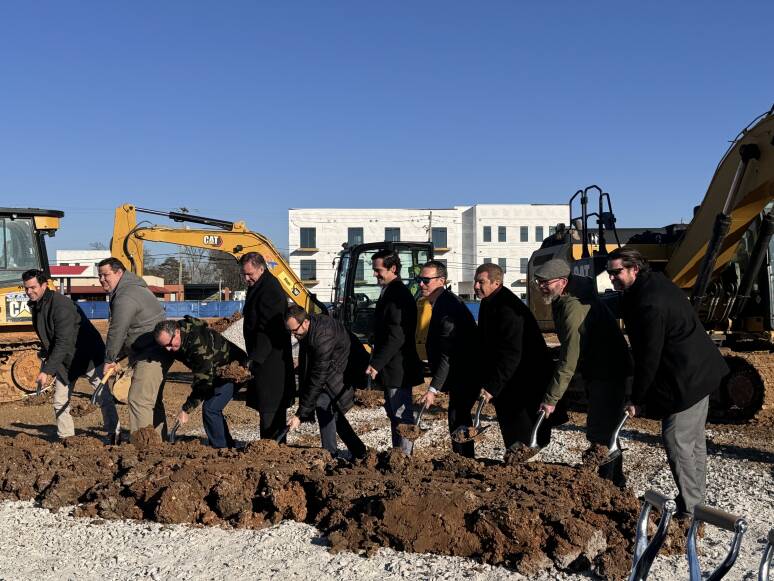
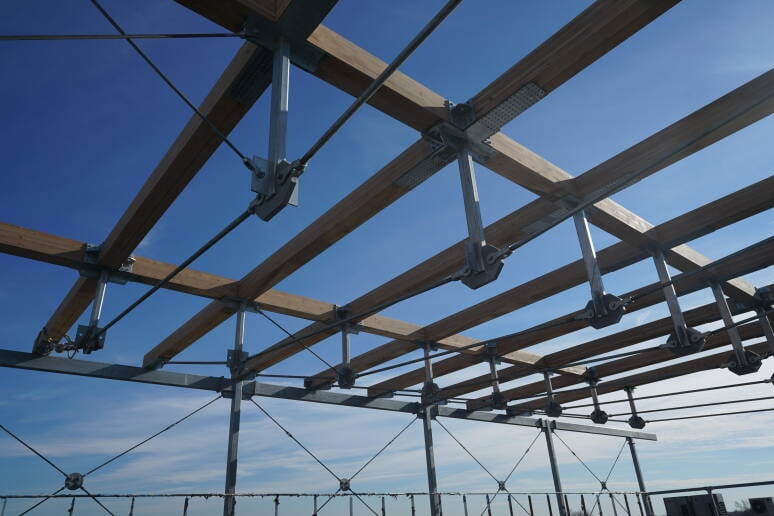
The agency is a key partner on the
Mass Timber Competition and other
SLB-led programs that expand the market for lumber.
Looking ahead, the SLB and USDA Forest Service are turning their focus to K-12 education because of the large opportunity for lumber demand growth in this subsector. The USDA Forest Service has also supported Wood Innovation Grants that advance the use of lumber in high-rise projects as well as buildings with exposed timber or protective design needs.
The USDA Forest Service has contributed key funding to SLB core programs Think Wood, WoodWorks, and the AWC. The SLB and USDA Forest Service have jointly funded WoodWorks, and the USDA Forest Service has also provided major grants to the AWC, as well as $775,000 over the last two years for Think Wood. These investments show how the SLB’s work leads to impactful public-private partnerships to grow demand for lumber.
Since forming an alliance through a memorandum of understanding in 2015, then a second MOU that expanded the partnership in 2021, the SLB and the USDA Forest Service have jointly funded a variety of projects to increase the market for lumber by showcasing inspirational projects and innovative wood building designs. Intended to expand the use of mass timber in the United States, the 2022 and 2023 Mass Timber Competition: Building to Net-Zero Carbon programs awarded support to several projects that highlight mass timber’s application, practicality, commercial viability, and ability to reduce the carbon footprint of the built environment. The Mass Timber Competitions have disbursed a total of $1.78 million to help project teams overcome barriers to using a new building material and system.
Several of these winning projects are making significant progress and generating valuable data and resources. Evergreen Charter School, a 2022 winner that was featured in a WoodWorks case study and site tour, is nearing completion, and the project’s designer, Martin Hopp Architects, will conduct a pre- and postoccupancy evaluation to measure the impact of the new building on the performance of its staff and students.
The 2023 Mass Timber Competition–winning Via Emma development in Springdale, Arkansas, broke ground in 2024. The workforce housing project was recognized for how it grapples with the affordable housing shortage by using mass timber alongside wood-frame and prefabricated construction. “The Mass Timber Competition award gave us a venue to develop our thinking even more,” says Fouad Khalil, principal of Modly, the industrialized construction consultancy that partnered on the project with real estate developer Blue Crane. “It allowed us to set our horizon further on things we can do next.”
Boosts Demand-Driving Programs
The Mass Timber Insurance Playbook helps developers, designers, and insurers resolve challenges that impact the insurability of mass timber buildings. Mississippi Workshop, Waechter Architecture,
Photo Credit: Laura Swimmer
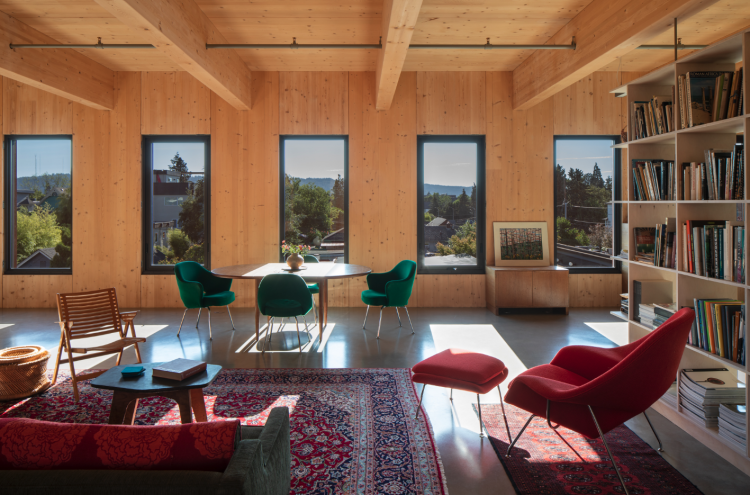
The resource helps developers, design teams, and insurers work together to improve the cost-effective insurability
of mass timber buildings.
“Adapting the Mass Timber Insurance Playbook is part of our commitment to helping address challenges related to innovative wood buildings in the U.S.,” said WoodWorks President and CEO Jennifer Cover. “Dodge data shows that, in 2023, more than 1 billion square feet of new construction could have been built using sustainable wood materials by code—and wasn’t. This represents a significant opportunity to reduce the carbon impact of the built environment.”
While not a guarantee, adhering to the principles in the playbook should help project teams achieve the best pricing, terms, and conditions available in the current insurance market.
“Even an experienced project team will do well to engineer risk out of mass timber structures and be prepared to communicate with insurers on their own terms,” says Mike Hastings of M.D. Hastings Risk Consulting, who adapted the U.S. edition. “Going forward, establishing the Mass Timber Insurance Playbook as an essential text with worldwide variations will accelerate the learning curve among all parties involved in securing insurance for mass timber projects, in all geographies.”
With November’s release of the Mass Timber Insurance Playbook – U.S. Edition, WoodWorks is addressing a challenge many teams experience on their mass timber projects. While materials such as CLT are becoming more mainstream across the country, they do not yet have a history of loss data that allows insurers to accurately assess risk. They’re also relatively new in the U.S. market, and insurance professionals who have never insured a mass timber project are often reluctant to do so. The playbook is intended to support project teams seeking insurance, as well as the insurance industry as it develops knowledge and data in this space.
The U.S. edition was adapted from the original Mass Timber Insurance Playbook developed by insurance and building resilience specialists in the United Kingdom in partnership with the Alliance for Sustainable Building Products. It gives developers, design/construction professionals, and insurers a framework for working together to resolve challenges that affect the insurability of mass timber buildings, making it easier to bring more of these projects to fruition.
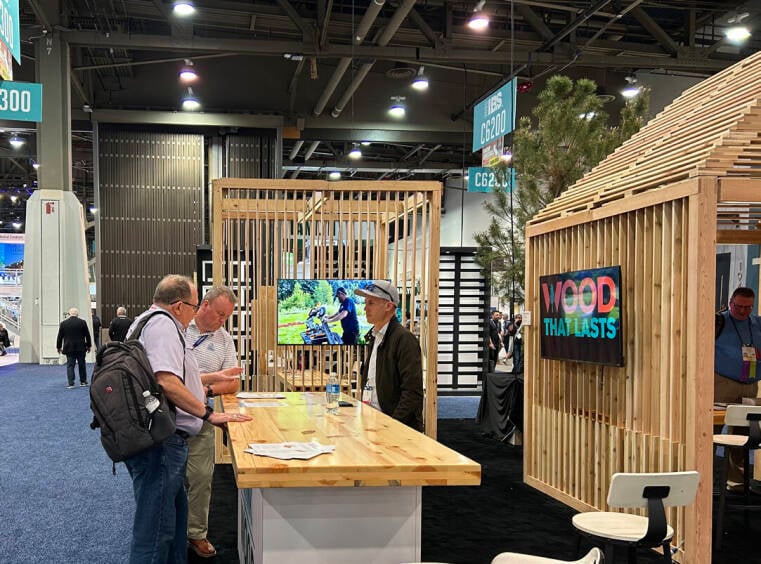
Together, the SLB’s funded programs maximize the productivity and efficiency of live events, extending reach and complementing expertise.
International Builders' Show
Think Wood complemented WoodWorks’ role at the Mass Timber Conference with a booth promoting Think Wood’s educational resources, allowing design professionals to continue their own wood education path. Think Wood also joined forces with several industry association partners at the International Builders’ Show, JLC Live, and the AIA Conference on Architecture with a new trade show experience to highlight the benefits of wood in single-family construction and remodeling. The new flexibility of Think Wood’s booth setup allowed for additional partners to have a presence, including the Southern Forest Products Association (SFPA), the Western Red Cedar Lumber Association (WRCLA), the Northeastern Lumber Manufacturers Association (NeLMA), the Western Wood Preservers Institute (WWPI), the Western Wood Products Association (WWPA), and new to this year’s show, the Cedar Shake and Shingle Bureau.
For the second year, WoodWorks co-hosted the Mass Timber+ conference with Forest Economic Advisors. The event was held in conjunction with Greenbuild, allowing WoodWorks to reach a broad audience of AEC professionals engaged with carbon topics. Mass Timber+ sessions focused on mass timber design, modular construction, mass timber insurance, engineering innovations, and embodied carbon—an important topic to the Greenbuild audience. WoodWorks organized and participated in a panel on biogenic carbon accounting and was also part of an embodied carbon session. Being given the opportunity to speak at Greenbuild demonstrates the design industry’s awareness of WoodWorks’ expertise in this area.
In September, the AWC and WoodWorks co-hosted their first-ever NYC Climate Week event. The event featured an introduction to mass timber, a panel discussion on the entirety of mass timber’s life cycle, and concluded with a networking reception. The event proved to be a success, with more than 80 attendees in person and online. Hosting Climate Week is an example of the AWC’s lead role in ensuring that wood products are properly recognized for their low embodied carbon and significant stored biogenic carbon benefits.
WoodWorks continues to co-produce the International Mass Timber Conference, leading the education programming for the country’s largest gathering of mass timber professionals
and presenting several sessions to help close the gap in available information and expand the number of practitioners capable of realizing successful wood buildings. In 2025, WoodWorks will have a more engaged role in programming the conference’s developer track.
Builders and Designers at Industry Events
Elan Crown Point, Rendering Credit: Greystar, Wire Development
1 of 4


Structural Engineer Yasir Al-Lebban attended several WoodWorks webinars on engineering topics related to light-frame wood construction before contacting WoodWorks with an issue at Elan Crown Point, a six-building, 315-unit residential complex west of Orlando. Al-Lebban had design questions related to the building’s blocked open front diaphragms and gabled roof section. WoodWorks provided a detailed response, supported with several sections of the relevant standard, and several code checks for open front diaphragms and their relevant references. Developed by Greystar, the largest multifamily developer in the United States, the 300,000-square-foot project is now under construction as part of the Crown Point Village mixed-use community near downtown Orlando.
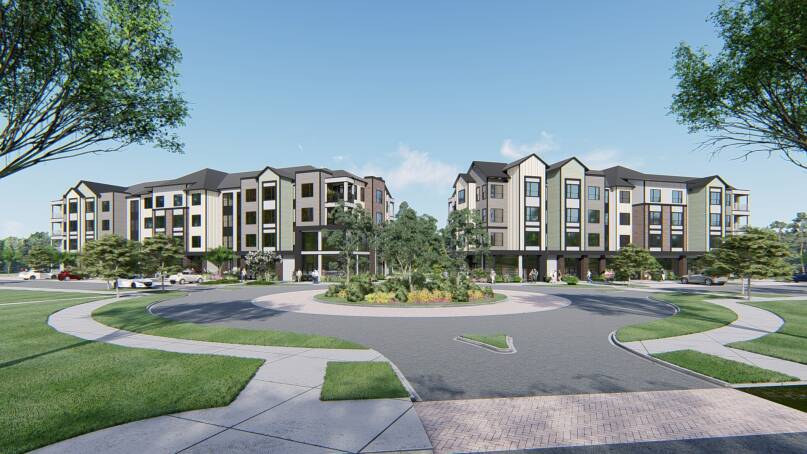
These WoodWorks-assisted projects showcase growth sectors for wood construction with light-frame, mass timber, and hybrid systems in markets across the country.
of Opportunity
Project Highlights
Jim Neiman, Neiman Enterprises, President & CEO;
Treasurer, SLB Board of Directors
The SLB team has been a careful steward of the industry’s funds while making smart investments to grow the market share for lumber. Through the SLB’s investment and support of WoodWorks, the AWC, Education, and Think Wood, we continue to see return on our investment: Every dollar invested in the SLB generated 82 board feet of incremental demand. By supporting the SLB, its programs, and its partnerships with like-minded wood industry organizations, the lumber industry can continue to build on our momentum.





annual softwood lumber use from 2020-2024 would have been 3.5% lower.

25.8%
$4,698,584
Code

BOARD FEET

FINANCIALS
Executive: Caroline Dauzat, Rex Lumber, Chair Emeritus, Ex-Officio; Jack Jordan, Jordan Lumber & Supply, Chair Emeritus, Ex-Officio; Don Kayne, Canfor, Program Chair Emeritus, Ex-Officio
Finance: Furman Brodie, Charles Ingram Lumber Co.; Susan Coulombe, J.D. Irving, Ltd; Ian Fillinger, Interfor Alden Robbins, Robbins Lumber
IR&G: Todd Payne, Sierra Pacific Industries
President & CEO
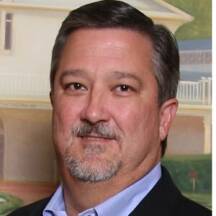
President & CEO


Education

Lee

Think Wood
Gerfen

Marketing and Communications
Hyoun

Operations

Flom

Jager
Vice President

President & CEO

President & CEO

President & CEO

Former CEO
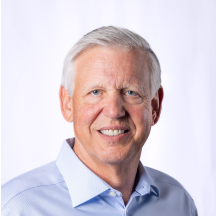
President
(Chair Emeritus)

Vice President of Wood Products
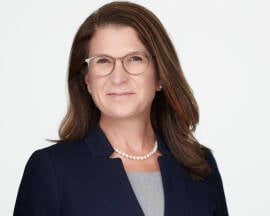
Chair
(Chair Emeritus)

Senior Vice President
of Wood Products
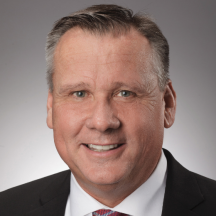
President
(Chair)

Owner
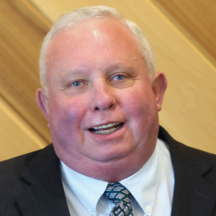
President of Lumber

COMMITTEE MEMBERS
*2024 Executive Committee members
BOARD OF DIRECTORS
of the Impact of the SLB
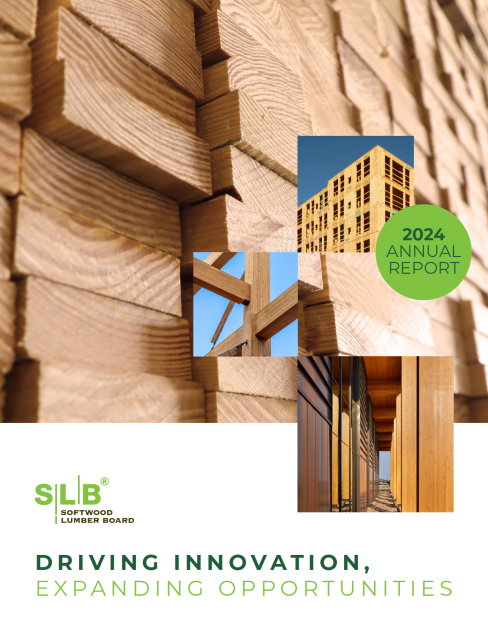
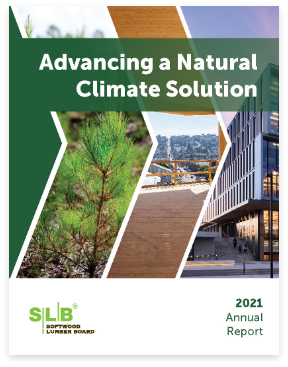

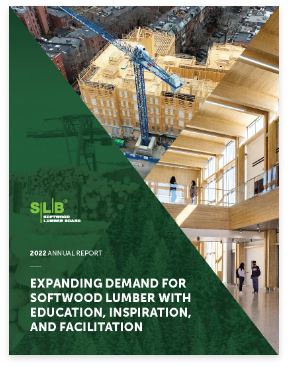


If you'd like a printed version of the
Annual Report mailed to you, please email info@softwoodlumberboard.org.
*For Industry Members Only














